





























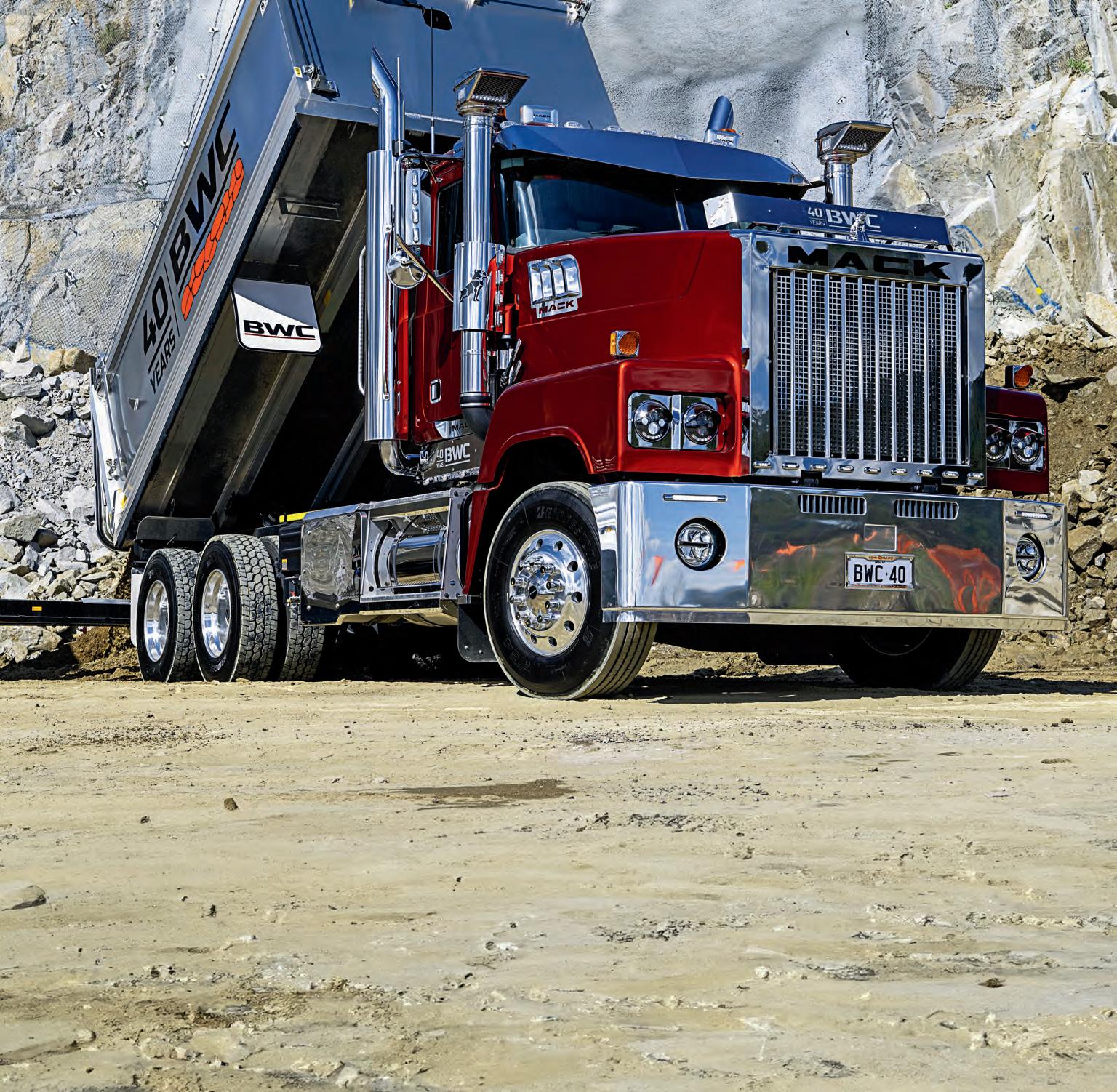



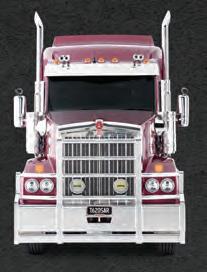
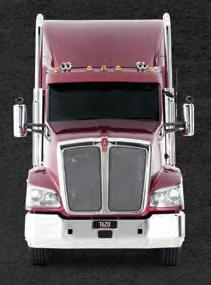
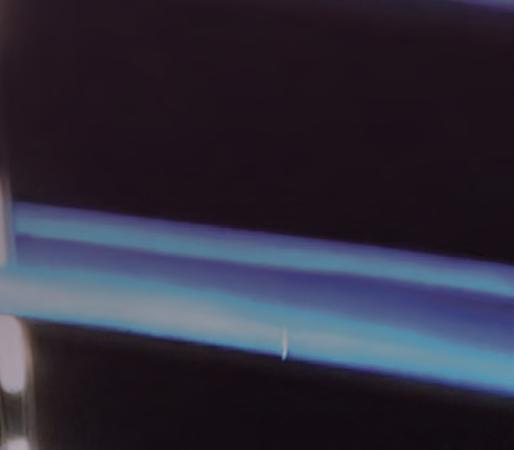
















































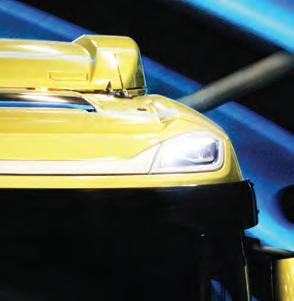








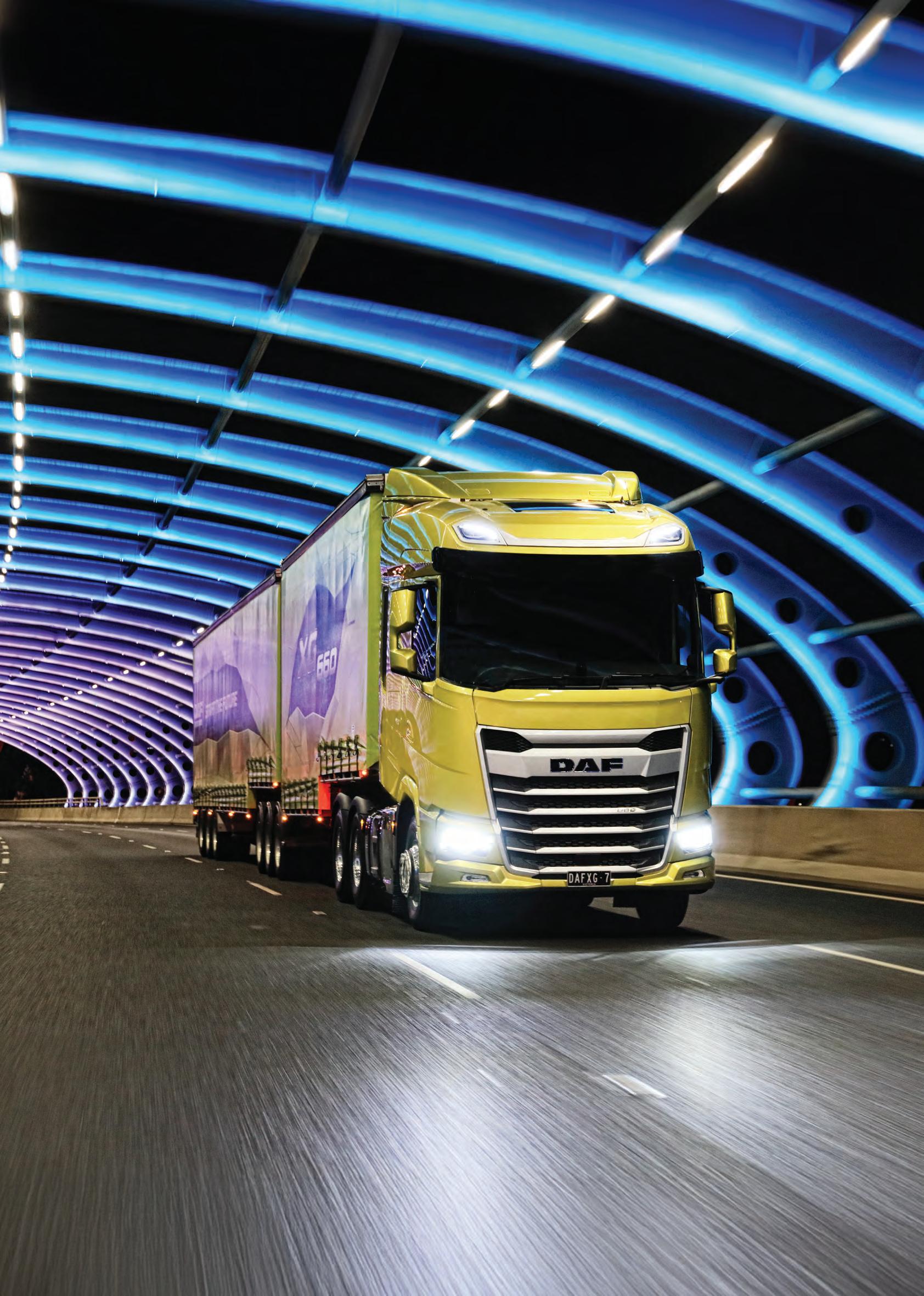

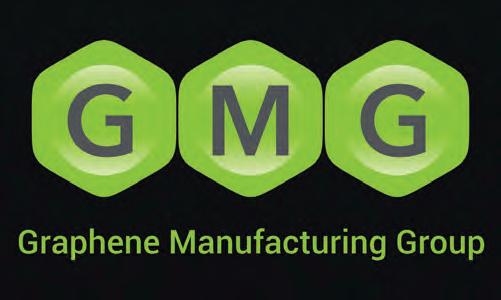






Introducing G® Lubricant, the cutting-edge graphene-based additive transforming the diesel and gasoline engine industry. Verified by the prestigious University of Queensland, this revolutionary lubricant delivers up to 8.4% fuel savings under high-load conditions, offering optimised performance and cost efficiency.


• Exceptional Fuel Savings: Achieve up to 8.4% improvement in fuel efficiency, even under demanding conditions.
• Minimal Concentration, Maximum Impact: Just 1:10,000 graphene-to-engine-oil ratio ensures safety and compatibility with any internal combustion engine and Group I,II,III and IV engine oil, not suitable for Group V oils. Suggest use in engines out of warranty.
• Proven Results: Backed by four years of advanced testing.



• Eco-Friendly Solution: Reduce fuel consumption and emissions while saving money.



Graphene, a carbon wonder material known for its strength and low friction properties, enhances lubrication at a molecular level. When added to your engine oil, it reduces internal friction especially around the pistons, optimizing performance and fuel economy without compromising engine integrity.
BE
Don’t get left behind in the race for efficiency. Upgrade your engine oil with G® Lubricant today and experience the graphene revolution firsthand!
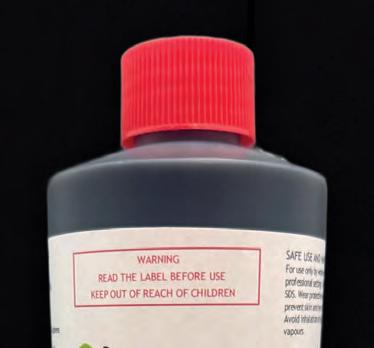


















Owner Drivers looking to save fuel costs. Fleet owners looking to cut operational costs.

•
• Industrial operators aiming for sustainable energy savings.
• Significant cost savings.
• Improved Fuel Efficiency & Performance.

• Safe for all diesel and petrol engines - suggest use in engines out of warranty.

Order now and join the global movement toward smarter, greener, and more cost-effective engine solutions. Automotive enthusiasts seeking peak engine performance.













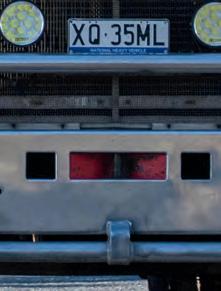


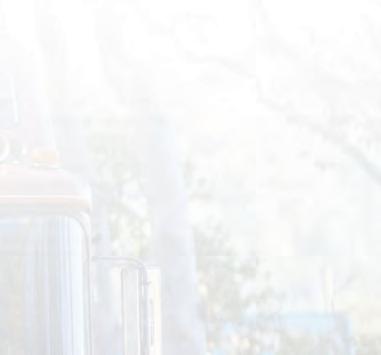
It may stand out as seven massive cranes looming over the Port of Melbourne, but Sean Mortell discovered the impressive technology inside Victoria International Container Terminal is fast becoming a truck driver’s dream
The Gorski family enjoyed a well-deserved recognition of the half-century milestone of Gorski Engineering in August, celebrating the peaks and troughs of 50 years spent manufacturing for the transport industry

For the 40th anniversary of Boulder Wall Construction, Gavin Turner’s sons found the perfect Super-Liner for the occasion. Warren Aitken learns more about the man at the helm of the growing operation
40

While heading over to MJ Mahon’s Rocklea depot, Warren Aitken met Aiden, the operator’s first apprentice who is learning the game one drive at a time
44

As the inaugural winner of IVECO’s Master Technician competition, Justin Abood’s two-decade long trucking career to date continues to flourish

The popular packaging and logistics brand is undergoing a major fleet renewal, and Mercedes-Benz Trucks have been critical to this technology upgrade

48
Warren Aitken made his maiden trip up to North Queensland to take in the emerging charity truck show that is the Mackay Konvoy 4 Kids
58




Despite consistent dips in major markets, the overall truck sales for August in Australia maintained the consistent pace set in recent months

















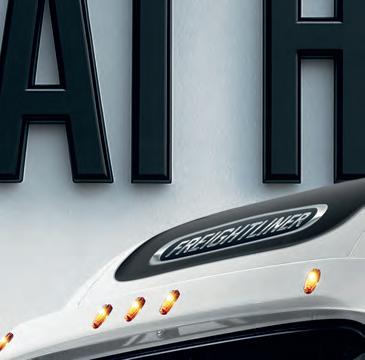




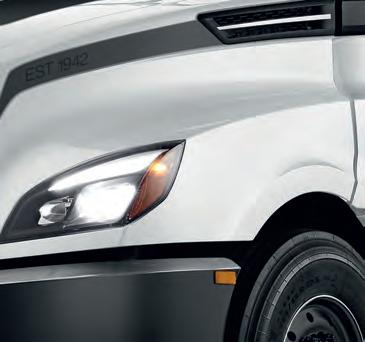




Daimler Trucks dealership about Cascadia today.







EDITORIAL
Editor Sean Mortell
E-mail Sean.Mortell@primecreative.com.au
Phone: 0468 577 166
Contributors Warren Aitken, Frank Black, Sarah Marinovic, Rod Hannifey, Michael Kaine, Craig Forsyth, Warren Clark
Cartoonist John Allison
PRODUCTION
Art Director Bea Barthelson
Print IVE Print
ADVERTISING
Business Development Manager
Tosan Popo Ph 0481 260 352
E-mail Tosan.Popo@primecreative.com.au
SUBSCRIPTIONS
www.ownerdriver.com.au/subscribe
Phone +61 (0)3 9690 8766
Mon-Fri 8am-4.30pm (EST)
Email info@primecreative.com.au.
Mail 379 Docklands Drive, Docklands, VIC 3008 Australia
EXECUTIVE GROUP
Chairman John Murphy
CEO Christine Clancy
Publisher Sarah Baker
Operations Manager Regina Fellner
Sales Manager – South Danny Hernandez
Owner Driver is published by
Prime Creative Media
379 Docklands Drive, Docklands Melbourne VIC 3008
Telephone: (+61) 03 9690 8766
www.primecreative.com.au
ISSN 1321-6279
OwnerDriver magazine is owned by Prime Creative Media. All material in OwnerDriver is copyright and no part may be reproduced or copied in any form or by any means (graphic, electronic or mechanical including information and retrieval systems) without written permission of the publisher. The Editor welcomes contributions but reserves the right to accept or reject any material. While every effort has been made to ensure the accuracy of information Prime Creative Media will not accept responsibility for errors or omissions or for any consequences arising from reliance on information published.
Opinions expressed in OwnerDriver are not necessarily the opinions of, or endorsed by the publisher unless otherwise stated.


Hordes of responses to last month’s edition suggests there’s plenty that can be done to help the industry in a time of need. Let’s push forward together
Since the September edition of OwnerDriver hit the printers and graced the numerous truck stops around Australia, I’ve been fortunate enough to receive plenty of feedback on what the nation’s transport industry can do to reverse the current issues.
“Why are governments doing nothing?”
“There’s no adequate level of driver training.”
“Undercutting of rates means we will never be able to compete.”
“It’s a race to the bottom.”
The list goes on, but the message is coming through loud and clear – more must be done immediately to protect the hard-working owner drivers around the country who are doing their all to run timely, profitable and, most importantly, safe services.
Another interesting response I received came from someone who has been an owner driver for
“I am perplexed by the non-action of the bureaucrats, sitting behind desks, making stupid decision affecting truckers and road users.”
35 years, and in total a driver for 56 years in Australia. Throughout his career, including 3.8 million kilometres, more than two million of which were in smaller vehicles, he hasn’t once lost a demerit point nor received a traffic fine. His immediate point is that he feels there is no avenue for the industry, including drivers like himself, to be heard by decision makers.
“I am perplexed by the non-action of the bureaucrats, sitting behind desks, making stupid decision affecting truckers and road users,” he told me.
“The lack of knowledge of trucking manouevres and operation is paramount to driving on the roads with blind morons. I’ve mentioned many safety aspects to state members over the years, to no avail.”
What’s most alarming, and important, about this message is that it comes from a driver who has been retired from full-time driving for seven years. While still driving three to four days a week on smaller jobs, his love for the road is so strong that he had to say something in a time of industry need.
I’d like to thank you all for these messages, and reiterate that OwnerDriver will continue to represent you and cover the biggest issues for the sector in such a critical period of time. This edition, with our usual array of columnists, touches on these very challenges in a variety of ways, while our features provide a change of pace to the lighter and more satisfying parts of our great industry.
Warren Aitken’s superb Truck of the Month takes him to a unique 40-year anniversary for Gavin Turner at Boulder Wall Construction. Gifted by his sons at the Mack home base in Queensland, it made for a fitting prize for decades of hard work and passion. Check out the beautiful Bulldog on display on page 30.
It was a pleasure to be invited along to the 50th anniversary celebrations of trailer builder Gorski Engineering, where more than 600 people crammed into Melbourne’s Crown Palladium for a night of laughs, great stories and plenty of reflection. The recap of the emotion-filled celebrations can be seen from page 24.
While out on my adventures, I was fortunate to walk through the doors of the Victorian International Container Terminal (VICT) at the Port of Melbourne, where new-age technology on both the seaside (with its automated cranes that loom like skyscrapers) and its truck parking and processing areas is allowing trucks to get in and out within 40 minutes. This technology is remarkable, and has to be marvelled at from page 21.


On top of this, it was terrific to chat to the maiden winner of IVECO’s Master Technician of the Year in Justin Abood on page 44, while the growing success of Australian business Visy Logistics can be seen with its fleet renewal program on page 47 that involves stacks of Mercedes-Benz truck models.
All of this and more is packed into another busy edition of OwnerDriver. We hope you enjoy the read, and stay safe!
Unit 1/71 Axis Place, Larapinta, Brisbane, QLD, 4110, Australia
Ph: (07) 3276 9300 Fax: (07) 3276 9301
Ph: (07) 3276 9300 Fax: (07) 3276 9301
Email: mattc@gibbsparts.com davids@gibbsparts.com Web: www.gibbsparts.com
Email: sales@ggd.net.au davids@ggd.net.au Web: www.gibbsparts.com

ZFASTRONIC ZFClutchActuatorsForDAF,IvecoAnd ManTrucks.S37. TA950479. POA
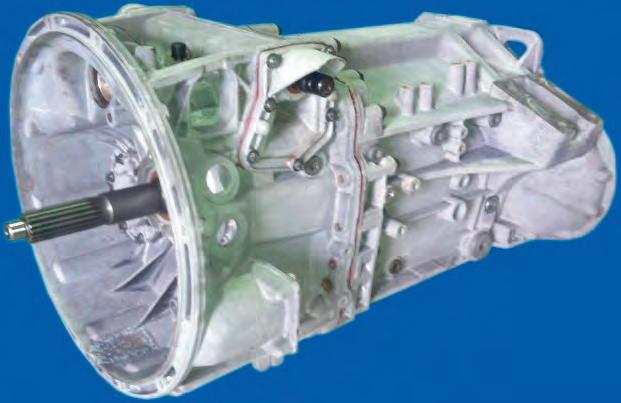
MERCEDES-BENZG85-G280 ReconditionedMercedes-BenzTransmissions. MostMakesandModelsG100,G131,GO210, G240,G280,G330available.S3. TA431566. POA
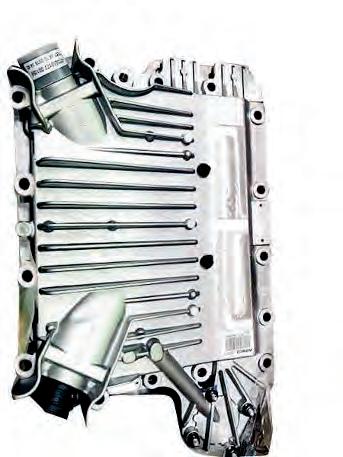

ZFEcolitepowerpacks.S40. TA952390.
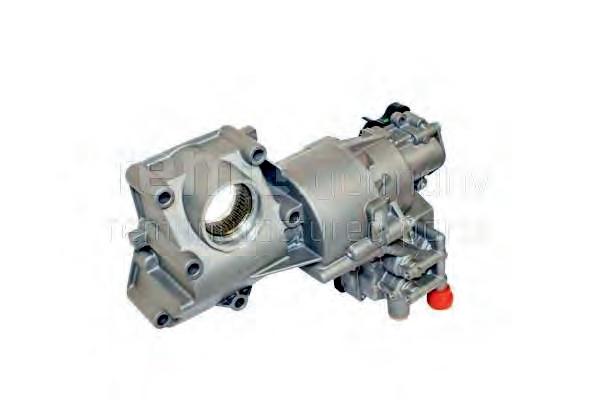
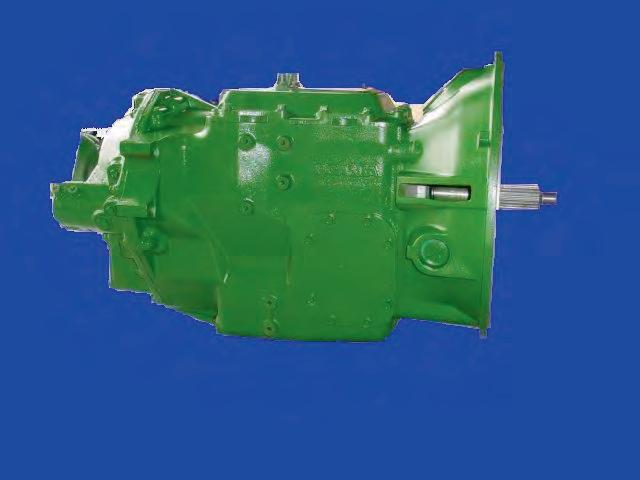


AT2512C,AT2612D&ATO3112D. S44. TA952399. POA

From further Bruce works to Victorian calls for duplication, plenty of road updates are coming through thick and fast in October
In Queensland, the fabled Bruce Highway upgrade is continuing to progress, with the $87 million connection of the route to the Mackay Ring Road now complete. Down in Victoria, a regional council is urging the state government to resume duplicating a very important freight route, while in New South Wales the notorious Macquarie Pass is beginning to receive a vital safety fix.
The Queensland government has confirmed the Mackay Ring Road connection to the Bruce Highway has been completed, allowing transport infrastructure along north Queensland to improve for freight vehicles.
This project has delivered a duplicated section of the Bruce Highway between the Mackay Ring Road and Bald Hill Road, improving safety and efficiency for people travelling through Glenella.
The upgrade provides a consistent journey for drivers by extending the duplication from the Mackay Northern Access Upgrade which was completed in September 2022, through to the Mackay Ring Road roundabout.
“Now completed, the Mackay Ring Road to Bald Hill Road Connection project will be an integral part of an integrated transport network in the region connecting to major infrastructure such as the Mackay Ring Road, the Mackay Northern Access Upgrade and the Walkerston Bypass,” Queensland transport and main roads minister Brent Mickelberg says.
“We understand the impact this had on local residents and road users and we thank the community for its patience while construction of these important upgrades was completed.”
Key features of the completed works include two new dual-lane overpass bridges and a new port rail overpass as well as an upgraded intersection at Bald Hill Road.
To minimise disruption to the 12,000 vehicles that use this section of the highway daily, a unique top-down temporary fill method was used during bridge construction which enabled works to continue without the need for road closures on the Bruce Highway.
The three overpass bridges required approximately 620 tonnes of reinforced steel. The project is estimated to have supported an average of 534 direct jobs over its duration.
The $87 million Mackay Ring Road to Bald Hill Road project was funded
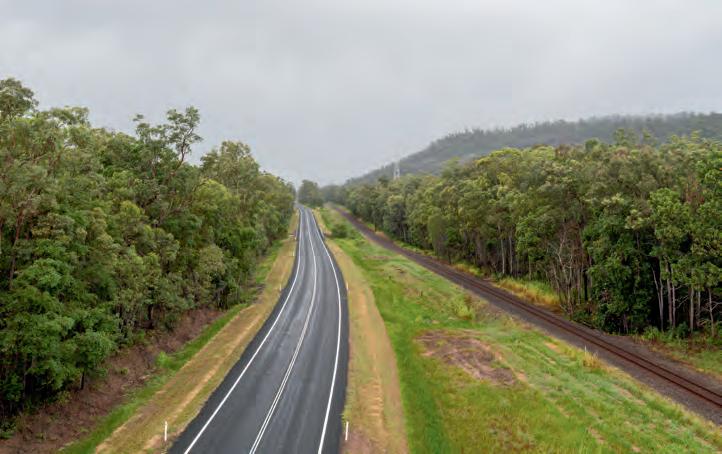
with a $69.6 million commitment from the federal government and a $17.4 million commitment from the Queensland government.
The project is a continuation of the more than $410 million Mackay Ring Road construction project, which was completed in 2020.
“We’re investing more than $17 billion on projects along the 1,673km long Bruce Highway,” federal transport minister Catherine King says.
“While it’s tools down on this section of highway, we’re getting on with more than 40 other projects to improve the drive on one of Queensland’s most important roads.”
The New South Wales government has revealed crucial safety works along the notorious Macquarie Pass have gotten underway.
The $9.6 million work project has started to deliver new and improved essential infrastructure for Kiama and passing freight traffic.
This essential upgrade will include the delivery of wider lanes and new safety barriers, improving key sections at the top and near the bottom of the busy Illawarra Highway,
Once completed these upgrades will improve travel conditions for the 4,000 drivers who use this road daily. Further it will increase community resilience and reduce the risk of closures on the steep route following unprecedented wet weather as has been recently experienced locally.
“This funding is about making regional roads safer, more reliable and fairer, ensuring local communities get their fair share of road maintenance investment,” NSW roads and regional transport minister Jenny Aitchison says.
“Macquarie Pass is a critical corridor for local commuters, freight operators and the tourism sector.
“These safety upgrades will provide a safer road environment and are key to ensuring the resilience of this route.
“Work carried out on the Pass is complex due to the steep terrain of the site, slope stability challenges and the tight work areas that limit worker and vehicle access.
“The design and schedule have been developed to achieve maximum results while minimising impacts to the community wherever possible. We appreciate the community’s patience while this work is carried out.”
The first phase of work will be at the 200 metre stretch between the top two hairpin bends, a narrow and winding section of road frequently affected by severe weather and slope instability. In total, $7.5 million in upgrades will see three-metre-wide travel lanes in both directions, as well as new kerbs and safety barriers, making it safer and easier for motorists to navigate the top bends.
To stabilise the slope, long steel rods (known as soil nails) will be drilled into the embankment. A heavy-duty mesh and concrete spray (shotcrete) will then be applied to prevent further deterioration and reduce the risk of unplanned closures.
An additional $2.1 million under the NSW government’s Towards Zero Safer Roads program will allow safety improvements to be carried out about 900 metres up from the Cascade Falls Picnic Area.
Work will include installing a widened centre line along a 300-metre section, minor slope stabilisation and drainage upgrades to improve safety for road users.
This builds on the state government’s
investment of $3 million in accelerated funding to fill potholes and undertake road repairs, which has brought road maintenance investment in Kiama to over $35 million this year.
Night works are occurring from 8pm to 4am, Sunday to Thursday. The project is expected to take up to six months to complete, weather permitting. For the safety of workers and motorists, Macquarie Pass will be closed between Tongarra Mine Road and Mount Murray Road during work hours and detours will be in place that add 10 minutes for light vehicles.
Ararat Rural City Council has urgently called on the state and federal governments to recommence the duplication of the Western Highway as soon as possible.
The council is supporting a proposed motion to the Municipal Association of Victoria (MAV) that calls on the governments to re-begin the project.
The proposed motion seeks MAV’s support in calling for both governments to ensure sufficient funding and expedite the required legal and administrative processes, to enable the delayed section of works near Ararat to resume as soon as possible.
The Western Highway, Australia’s third-busiest interstate freight route, has been undergoing duplication since the Bacchus Marsh bypass in 1972. To date, the project has reached Buangor, with only about 38 per cent of the 408 km to the South Australian border completed.
Ararat Rural City Council is one of 10 member councils of the Western Highway Action Committee (WHAC), whose objective is to pursue the upgrade of the Western Highway to achieve improvements to safety, transport efficiency and amenity.
Advocating for the duplication of the Western Highway has been a long-standing priority for council, with the section from Buangor to Ararat remaining a top item in the council’s Advocacy Program 2025.
“There has been a lack of real progress on this project for some time,” Ararat Rural City Council Mayor Cr Jo Armstrong says.
“We’ve seen multiple incidents on this road, particularly on the section between Buangor and Ararat in recent months. We’d really like to see this project made a priority by both the state and federal governments.”




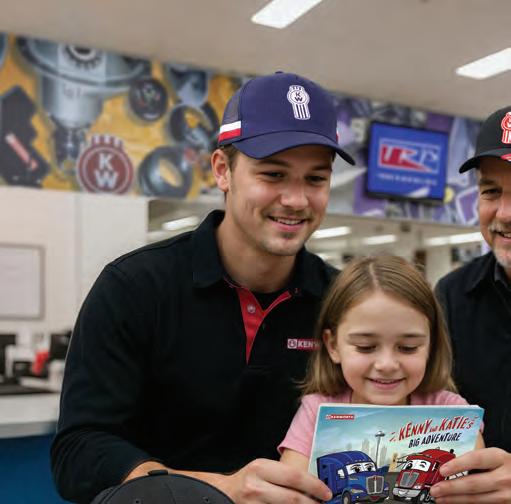






























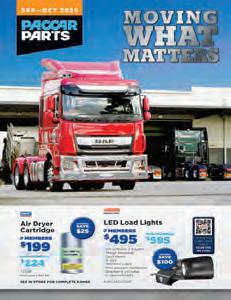


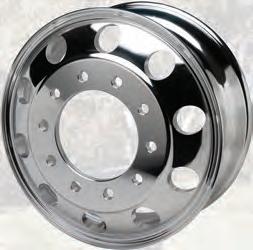

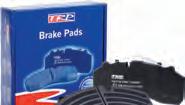






















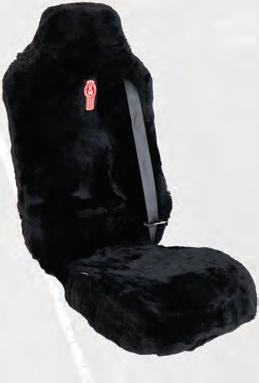





































The NHVR has revealed its latest safety operation resulted in 90 non-compliance notices issued
The National Heavy Vehicle Regulator (NHVR) has released the results of its latest heavy vehicle safety operation.
Operation Quay, conducted from July 21 to August 17 at key port locations across Australia including Port Botany and the Ports of Brisbane, Melbourne, Adelaide and Bell Bay, saw more than 2,500 heavy vehicle inspected.
Mechanical and mass non-compliance emerged as significant safety concerns in the operation, with NHVR chief operations officer Paul Salvati saying it was a crucial effort to ensure heavy vehicles entering and exiting port precincts were operating safely and meeting all Heavy Vehicle National Law (HVNL) obligations.
“Over the course of the month-long operation, our Safety and Compliance Officers (SCOs) inspected 2,566 heavy vehicles, issuing 905 notices as a result,” Salvati says.
“Unfortunately, this is 905 times where some form of non-compliance was found during an intercept – each representing a preventable issue, and a potential risk to the safety of the driver and the wider community.
“SCOs found that heavy vehicle non-compliance was the highest in Victoria, closely followed by South Australia and New South Wales.”
Salvati says the results from Operation Quay showed mechanical and mass-related non-compliance were the top safety concerns.
“There were hundreds of defect notices issued for mechanical

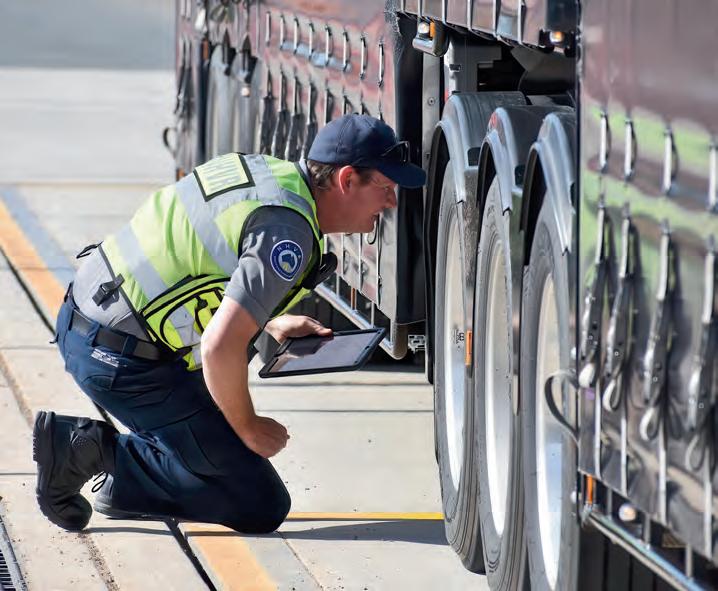
transporting freight in shipping containers are more likely to be involved in safety incidents in comparison to vehicles carrying general freight, and these findings underline the ongoing need for vigilance within the industry to protect all road users.”
Salvati says the NHVR will continue to work alongside police to ensure safety is never compromised.
“Ports are high pressure environments where safety simply cannot take a back seat –the consequences can be severe, and the last thing we want to see are more families, friends and loved ones impacted by road trauma,” he says.
“We worked in close partnership with police during Operation Quay to inform and
“Unfortunately, this is 905 times where some form of non-compliance was found during an intercept – each representing a preventable issue, and a potential risk to the safety of the driver and the wider community.”
non-compliance throughout the operation, mainly for faulty lights, reflectors or brakes – 43 of which were major breaches, and 662 that were minor in nature,” he says.
“Additionally, mass non-compliance was a significant concern, with 65 breaches detected during the four weeks –18 of these breaches categorised
While Nansor Freightlines will operate as a separate division of the company, the acquisition will see the operator grow its national network
Melbourne-based operator Guru Hundal Freightlines has announced the acquisition of Nansor Freightlines.
The strategic move saw the Altona North based operator acquire Nansor Freightlines back in June, marking a significant milestone for Guru Hundal Freightlines as it continues to build its Australian freight network.
This acquisition sees Guru Hundal Freightlines expand its national
footprint while also strengthening its fleet and operational capacity.
The team has already welcomed members from Nansor Freightlines into the fold as it continues to invest in safety, service and sustainability.
“Nansor Freightlines has built a strong reputation for service and reliability for 40 years — and we’re excited to integrate their strengths into our growing network,” Guru Hundal Freightlines says.
“We welcome Wayne Somerville and his team of dedicated drivers as two great Australian companies work together to provide the best service across Australia. Nansor has continued to trade as usual and operates as
as either severe or substantial violations.
“Non-compliance with mass limits has the potential to result in the damage of critical infrastructure and compromise a vehicle’s braking ability, meaning these breaches could have ended in disaster had our SCOs not intervened.
“We know heavy vehicles
educate industry on how to meet their safety obligations, but also to enforce the law where required.
“The majority of drivers and operators do the right thing, and we thank them for their commitment to safety, but for those who aren’t, we’ll continue to take action – because no load is worth a life.”

Guru






The Mercedes-Benz Actros, with a spacious StreamSpace cabin, comes standard with 3-year/450,000km* Best Basic Service Plan. Drive your business forward with legendary fuel economy, innovative safety and star comfort.











A popular member of Australia’s road transport industry has become the newest person to be inducted into the
Elphinstone Engineering’s founder has been inducted into the Shell Rimula National Road Transport Wall of Fame.
Graeme Elphinstone is now officially part of the Wall of Fame, receiving the prestigious honour at the 2025 Festival of Transport in Alice Springs.
Sponsored by Shell Rimula, the recognition is a testament to Graeme’s lifelong commitment and outstanding contributions to Australia’s road transport industry, with the honour seeing him join an elite group of trucking pioneers and legends on the wall.
Held annually as part of the Festival of Transport, the induction ceremony for the Wall of Fame celebrates the men and women who have helped shape the transport industry through decades of service, ingenuity and dedication.
Since its inception over 20 years ago, the Wall of Fame has recognised and celebrated over 1,700 distinguished members of the road transport community – from legendary truck drivers to visionary engineers – ensuring their stories become part of national road transport history.
“Our objective with the Wall of Fame is to highlight the contribution that road transport, as an industry, has made to Australia’s economic wellbeing through the ingenuity of our trucking pioneers,” the Hall of Fame organisers say.
“It shows that road transport is much more than just the men and women who drive the trucks; there are many others in the industry who need to be recognised also.”
Graeme’s induction to this Wall of Fame is a testament to his five decades of innovation in heavy vehicle design and safety. Tasmanian born and bred, Graeme began his career in the early 1970s and quickly became a problem-solver for the transport challenges of the era.
In 1976, Graeme and his brother Dale imported and fitted Australia’s first on-vehicle truck weighing system – installing scales on a Tasmanian log truck to accurately measure its load. This step revolutionised load management, allowing drivers to know their weight before hitting the highway, and laid the foundation for modern onboard mass monitoring in heavy vehicles.
With Graeme’s help, Tasmanian Pulp and Forest Holdings’ woodchip mill in Triabunna introduced a groundbreaking “non-payment for overload” policy that removed the incentive for truck drivers to carry overweight loads.
This initiative, a collaboration between the mill, logging contractors and Transport Tasmania, is regarded as one of the first practical applications of today’s Chain of Responsibility (COR) principles in Australian transport.
Graeme’s efforts in ensuring trucks were no longer overloaded beyond legal limits improved safety and fairness for drivers and operators alike, inspiring a new era of innovation in the industry.
“Vehicle overloading was prevalent,” Graeme says when recalling the ‘70s and why he pursued onboard scales.
“One of the biggest problems for truck operators was accurately estimating the weight of their load. For the first time, logging transport had entered a new level of professionalism, with far fewer roadside weighbridge violations and drivers finally enjoying ‘peace of mind’ as they now had a legal load.”
By giving drivers real-time weight information,

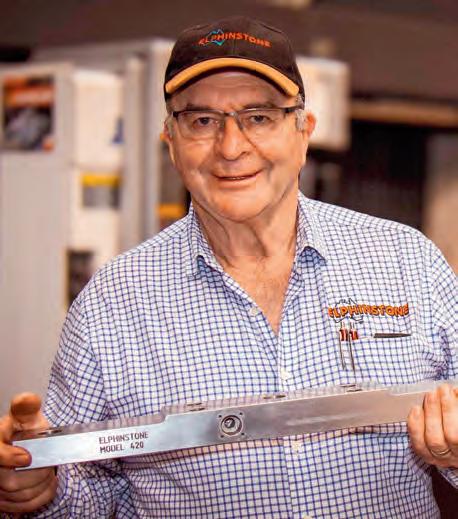
the Elphinstone onboard weighing system helped improve compliance, reduce overloading and enhance overall road safety.
Over the years, Graeme has led the way with a series of engineering breakthroughs in trailer design, suspension technology and vehicle configurations. His ideas, often ahead of their time, have since become industry standards in Australia, significantly improving driver safety, regulatory compliance and operational efficiency across the road transport sector. Some of Graeme’s key innovations over his career include:
• 1976: Fitting the first on-vehicle weighing system to an Australian truck, enabling drivers to monitor axle loads and gross weight on the go. This was an Australian-first solution that set new benchmarks for load compliance and safety in trucking.
• 1980: Inventing the stretch mudguard for trucks – a longer, flexible mudguard design that is now an industry standard copied by many manufacturers, reducing road spray and debris for improved safety of following vehicles.
• 1983: Designing the world’s first self-loading road train combination, featuring a four-axle dog trailer that could automatically load cargo (e.g. logs) without external equipment. In the same year, Graeme introduced innovative air transducers for air suspension systems to more accurately measure and adjust load pressure.
• 1985: Developing the “Tri-Beam” suspension system – an inventive heavy-duty suspension design that earned Graeme the coveted BHP Steel Award for engineering innovation. This suspension improved load distribution and durability, contributing to safer and more stable heavy vehicles.
• 1986: Built the World’s First folding skeletal trailer, the Fold-A-Skel™.
• 1988: Designing one of Australia’s earliest B-double trailer combinations. Graeme’s configuration (tandem-axle lead trailer with tri-axle rear trailer) was the first of its kind, paving the way for widespread adoption of B-doubles in Australia’s freight fleet.
• 1989: Creating the Easyweigh™ Radio Remote Indicator – the world’s first onboard weighing system with a wireless remote display. This innovation allowed drivers to monitor weights
from outside the cab and, crucially, enabled trucks and trailers to interchange without recalibration, drastically improving operational flexibility.
• 1999: Winner of “Australian Trailer of the Year” for Easyloader™.
• 2005: Designed and built the world’s first self-loading B-triple.
• 2007: Designed and built world’s first self-loading Road-Train doubled trailer. The advantage of the self-loading Road-Train mean that operators can use short standard routes on the empty return journeys instead of the longer gazetted road train routes.
• 2008: Graeme launched the Easyloader™ Long Logger trailer – an Australian-first, PerformanceBased Standards (PBS) approved design that could carry 19-metre-long logs on a 26-metre B-double combination. This innovation, achieved under the then-new PBS scheme, dramatically increased payload capacity for the forestry industry while meeting stringent safety and handling standards, thereby enhancing operational efficiency and profitability for the industry.
• 2011-2013: Developing the Easysteer™ self-steering suspension system. This advanced trailer suspension automatically adjusts and guides rear axles during turns, reducing tyre wear and improving the turning ability of long combination vehicles. Easysteer™ enhanced safety and manoeuvrability for multi-trailer road trains, although it initially required persistent advocacy by Graeme to gain regulatory acceptance.
“His pioneering work, such as Australia’s first onboard weighing systems, has left an indelible mark on the industry,” the Tasmanian Transport Association said about Graeme when honouring his 50-year career last year.
In receiving the honour, Graeme expressed gratitude to those who have supported his journey.
“I’m truly humbled to be inducted into the Wall of Fame alongside so many legends of the road,” he says.
“When I built my first trailer and fitted that first scale system, I never imagined it would lead to this. I’ve always just tried to solve problems and make trucks, trailers and transport in general safer and more efficient for everyone. To have those efforts recognised by the industry I love is an incredible honour.
“This award isn’t just mine – it belongs to our whole team and the many customers and partners who believed in our ideas over the years.”
Elphinstone Weighing Systems general manager and Graeme’s son, Grant Elphinstone, also paid tribute to his father’s career to date.
“Dad has always been a trailblazer,” Grant says.
“For nearly 50 years, I’ve watched him push the boundaries of trailer design and challenge what’s possible with unique innovation. He was fitting onboard scales before most people knew such a thing existed. He was building PBS-approved trailers before PBS was even a common term.
“His focus has always been on making life easier and safer for drivers – and that’s why this recognition is so deserved. Our whole family and team are extremely proud of Graeme. His legacy will continue to inspire innovation in transport for years to come.”







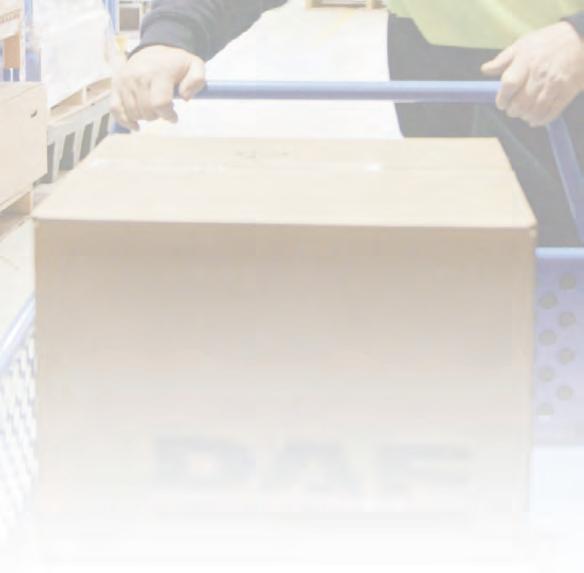



































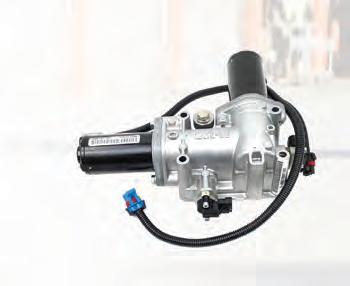
























SA012TRP $104 $124









Suits Hendrickson HAS400 & HAS460, Airlight 2/HD series
SA001TRP $119 $139















Suits Kenworth front, parabolic spring
SA018TRP $119 $139
Suits Kenworth Airglide 9” ride height SEE
STORE FOR COMPLETE RANGE











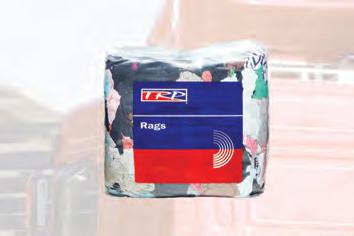






































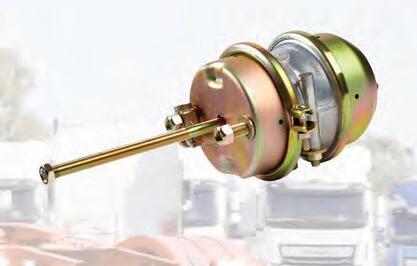







The national
operator
has
officially started
operating out of its new depot in north Queensland as it continues investing in the region
Operator Followmont Transport has announced it has officially commenced operations at its new Innisfail Depot in north Queensland.
In a bid to support regional growth, the major milestone sees the company continue to invest across north and far north Queensland.
Located at 15 Goondi Mill Road, Goondi Bend, the new purpose-built facility replaces Followmont’s previous Innisfail site and significantly increases the company’s capacity and operational efficiency in the region.
The depot features an 800m² high-clearance warehouse, 800m² undercover loading area, dedicated office space, and 1,800m² of hardstand to support vehicle parking and third-party logistics (3PL) storage.
The project was delivered in partnership with long-term property partner Bootooloo Property and began in late 2024, reflecting Followmont’s ongoing commitment to investing in regional infrastructure that supports local business, industry, and jobs.
The Innisfail development forms part of a broader regional strategy that has seen almost $40 million invested into north Queensland communities since 2020.
This includes new Depot builds completed in Mackay and Cairns, the purchase of an existing site in Mareeba, a significant expansion of the Townsville Depot, and now the delivery of this new facility in Innisfail.
Followmont also recently completed a refrigeration and hardstand upgrade at its nearby Dickson Road produce site, doubling capacity to meet growing demand from agricultural and food customers.
Followmont CEO Ross Longmire says the scale of these projects speaks to the company’s confidence in the strength and future of the north Queensland economy.
“This investment in Innisfail is about more than just a new depot, it’s about building the right foundation to support our customers and people in the region,” Longmire says.
“We’ve seen consistent demand in far north Queensland, and this facility ensures we can continue delivering high-quality, reliable and flexible service that grows alongside our customers.
“We’re proud of the work being done across our network and the strength of the relationships we’ve built with our customers and regional communities.
“Our investment in north Queensland is a reflection of our long-term commitment to the region, and our confidence in its continued growth.”

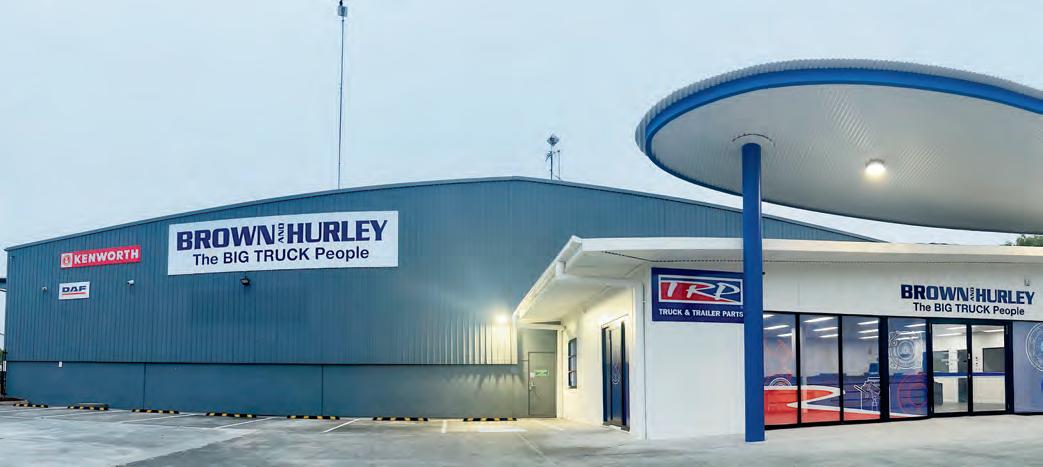
The newly opened site is the seventh TRP store opened and owned by the Brown & Hurley Group and TRP’s 19th outlet in Australia types of heavy trailers, with 359 outlets around the world and 19 in Australia.
Popular brands, service and sales brand TRP has announced the opening of a brand-new parts, service and sales store at the Port of Brisbane.
Located in Hemmant within Queensland’s Brisbane Port area, the new store is owned and operated by the Brown & Hurley Group, becoming the seventh TRP store the group has opened.
Globally, TRP is an affordable all makes supplier of high-quality parts for prime movers, rigid trucks and all
The Hemmant store stocks wellknown brand consumables for all major truck brands, with all TRP branded parts coming with a minimum 12-month warranty.
“This store is a natural progression for us and has been a few years in the making,” Brown & Hurley Group aftermarket general manager – truck and trailer Darron Rawson says.
“We look forward to being able to better service the needs of our loyal
business partners in this area and create new opportunities.
“Being able to offer service, parts and sales was important to us finding the right facility with easy access to and from the motorways, the customer feedback has been amazing, and we look forward to watching this store evolve.”
The TRP Brisbane Port site is located at 21 Inghams Place, Hemmant, with a contact number of (07) 3916 8400 and opening hours of 7am to 5pm Monday to Friday.
Every trailer connection counts. SAMPA parts are built for rugged performance, reliability, and long-lasting durability, keeping your trucks and trailers secure, stable, and ready for the road, day after day.
•Fifth Wheel – Tough cast structure and wear-resistant components for long service life, with adjustable locking and rubber cushions that reduce impact and simplify maintenance.
• Fifth Wheel Repair Kit – Precision-fit replacement components designed to restore locking strength, reduce wear, and extend coupling performance without replacing the full assembly.
•Landing Gear – Reinforced legs with advanced internal gearbox design for maximum durability and stable trailer support on any load and surface, tested to the highest standards.
• Peep your fleet moving with confidence, choose SAMPA for reliable, long-lasting performance.
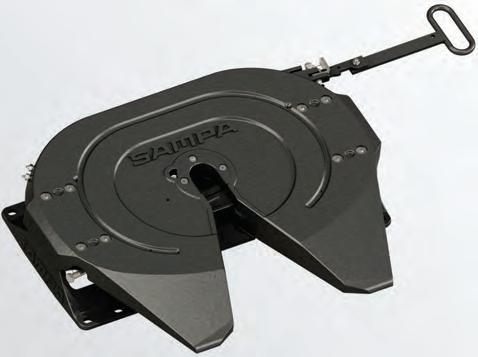
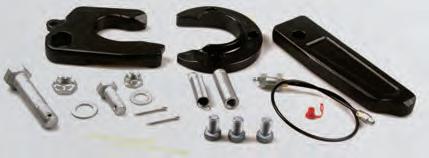




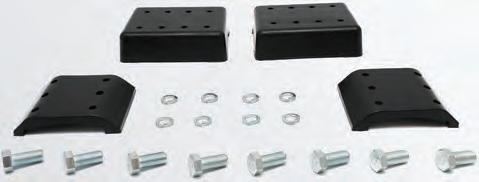
Global connected vehicle technology supplier
Geotab has announced it has achieved a new company milestone, surpassing five million connected vehicle subscriptions around the world.
This rapid growth has seen the last million subscriptions added in less than two years to reinforce Geotab’s position as a global leader in connected vehicle solutions and a key innovator in leveraging data and AI to drive meaningful business outcomes.
“Geotab’s journey is about relentless innovation and with 630 global patents, we have made a significant impact on the industry over the last 25 years,” Geotab CEO and founder Neil Cawse says.
“This five million milestone proves that our data-driven approach to fleet management is solving real world challenges faced by businesses on a daily basis. With the rapid adoption of AI, we expect the next five years to be as transformative as the last 25.”
Geotab’s data insights help businesses improve their fleet operations, including reduction in unexpected vehicle downtime, improved safety and reduced daily mileage through optimised route planning.
These improvements help fleets save money
on fuel and other operating costs while also directly reducing environmental impact.
The ability to deliver these tangible benefits is powered by the massive volume of data generated from five million subscriptions, producing over 100 billion data points daily, equivalent to more than 37 trillion data points annually.
This data fuels Geotab’s AI and machine learning models with accurate benchmarks, predictive analytics and actionable insights that empower fleets of all sizes to make smarter, faster decisions.
2025 marks Geotab’s 25th anniversary,
growing from a two-person start-up to a more than 2,900 global organisation, highlighting the company’s focus on innovation and global expansion.
Geotab says it has maintained its position at the forefront of the industry with investments in research and development, continuously expanding its open platform capabilities and building an ecosystem of over 700 partners globally.
Over the past 10 years, the Geotab Marketplace has grown and evolved, now featuring nearly 530 solutions for customers to choose from.
“This five million milestone proves that our data-driven approach to fleet management is solving real world challenges faced by businesses on a daily basis.”
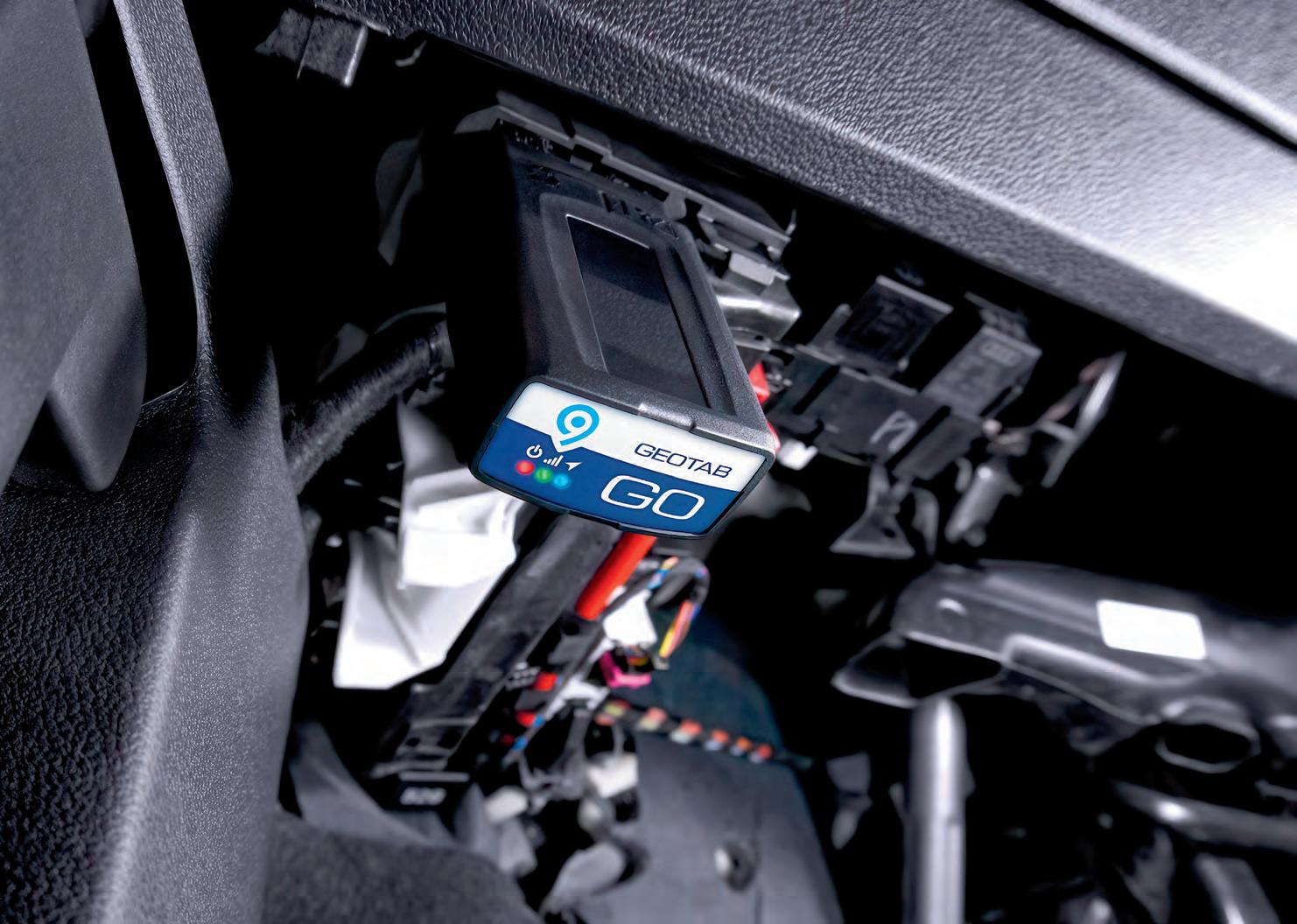






Monroe Magnum is engineered in Australia to withstand the toughest environments on and off highway, proven to deliver maximum uptime with minimal maintenance. Backed by 100+ years of suspension expertise Monroe is built to last the long haul.
• Trusted by Generations for 100+ years
• Durability Guaranteed for Maximum Uptime
• OE Supplier for Global Heavy-Duty Manufacturers
• Engineered and Manufactured * in Australia
• Scan QR code to find your Monroe Magnum.



























• Monroe Part Number CB0294
• Engineered and designed to improve cab comfort
• Assembled in Australia
• Unique height adjustment capability
• Modular design for easier fitment
• Bonded rubber bushes
• Monotube for durability.
• Monroe Part Number BU10025
• Unique OE specific spherical design
• Maximum strength and durability
• Superior engineered bonded rubber bushing
• OE equivalent fitment
• On-highway / off-highway capability
• 12 month / 150,000 km warranty.






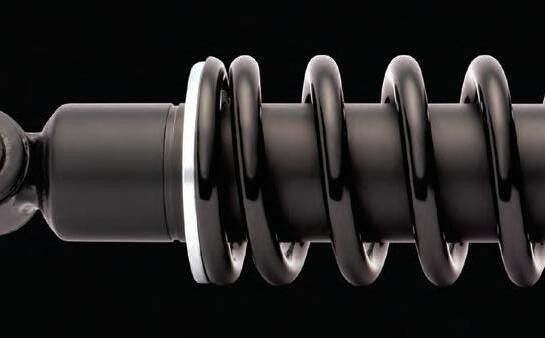





























The winners of the eight annual awards have been announced as the VTA celebrated another successful night recognising the freight industry’s leading members
The Victorian Transport Association (VTA) has crowned the winners of the 35th Australian Freight Industry Awards (AFIA) at a gala event at Melbourne’s Crown Palladium.
The awards night recognised the outstanding achievements of individuals and organisations across the freight, logistics and transport sectors.
Hundreds of guests were in attendance for the evening, with winners of the eight awards revealed.
The personality of the year award, supported by CMV Truck & Bus, went to Duncan Gay AM, with Peter Sadler Removals & Logistics’ Mariella Tueira taking home the women’s leadership award sponsored by Viva Energy Australia.
The emerging leader award, supported by Daimler Truck Australia Pacific, went to Jack Di Losa from Cold Xpress, while DHL Supply Chain Australia was the winner of the best practice safety award, supported by Gallagher.
Wettenhalls took home the application of technology award, Linfox won the investment in people award, Brooklyn Recycling Group was the winner of the Greenstart sustainability award and TOMRA Cleanaway received the waste and recycling business of the year award.
VTA CEO Peter Anderson opened the evening by acknowledging the vital role freight and logistics play in Australia’s prosperity.
“Every day, our industry keeps Australia moving – delivering goods, connecting businesses, and supporting livelihoods. From ports to paddocks, we are the engine room of the economy,” Anderson said.
“Tonight, we bring that work front and centre to celebrate the people and organisations who go above and beyond. These awards honour not just success, but the spirit of innovation and resilience that defines our sector.”
Anderson also noted the continued growing interest in the awards, with a record number of entries received across all categories.
“This year we saw an exceptional number of nominations, reflecting the depth of talent
example and push our industry forward,” Ryan said.
“Strong industry associations like the VTA provide a trusted platform for collaboration, where operators, suppliers and regulators come together to solve shared challenges and influence meaningful change.
“Equally important is the opportunity to celebrate excellence and innovation – because recognising achievement inspires progress.
“Every day, our industry keeps Australia moving – delivering goods, connecting businesses and supporting livelihoods. From ports to paddocks, we are the engine room of the economy.”
and innovation across our industry. It’s clear that organisations are investing in their people, their technology, and their sustainability goals – and they’re proud to showcase that work. The judging panel had a tough job, and every finalist should be commended,” he said.
AFIA Chair Dennis Ryan echoed the importance of recognising excellence and fostering industry-wide collaboration.
“For 35 years, these awards have celebrated the individuals and organisations who lead by
Congratulations to all our finalists and winners. You make this industry one we can all be proud of.”
The AFIA Committee extends its sincere thanks to major event supporters, Team Super and Viva Energy Australia, whose continued connection makes the AFIA possible, as well as Freight Cyber, providing the pre-dinner drinks in The Lounge.
The Australian Freight Industry Awards will return in 2026.
The first movement on official amendments being made to the Heavy Vehicle National Law has gotten underway in Queensland
The Heavy Vehicle National Law Amendment Bill has officially been introduced into Queensland Parliament in a milestone for the governing law.
The bill includes many of the results of the HVNL review that first started in 2019, with other changes from the review to be featured in future amendments to the national regulations.
The bill was introduced into state Parliament by Queensland transport and main roads minister Brent Mickelberg.
He says the bill provides operators with more flexibility in how they can demonstrate compliance with prescribed requirements such as fatigue management work and rest hours or general mass limits.
“This approach will be achieved through the introduction of an enhanced accreditation framework.

This framework strengthens the National Heavy Vehicle Accreditation Scheme by requiring operators to implement a safety management system, commonly known as an SMS, that is scalable to their organisation
and operations,”
He says the bill will expand the use of formal cautions and warnings.
“This is particularly important when dealing with minor breaches such as clerical work
diary errors,” he says. The Heavy Vehicle National Law applies in the eastern states and South Australia. The scheme is underpinned by a Queensland law that the other participating states have agreed to adopt.



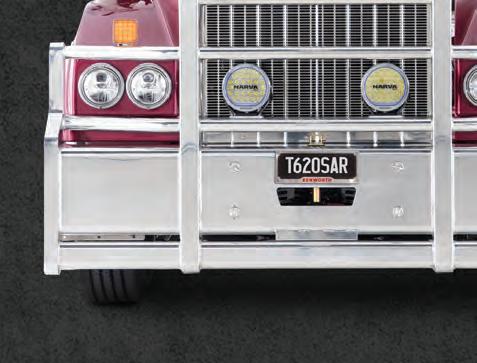


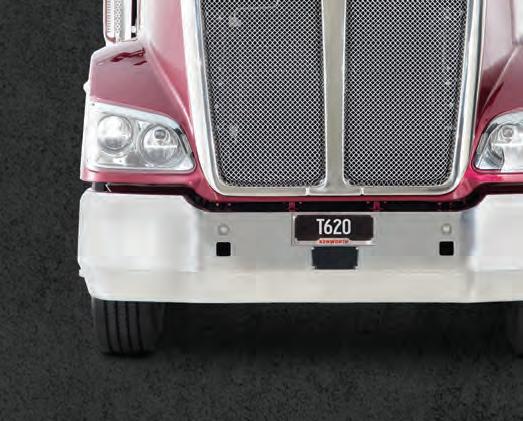
Kenworth stands by its history of design of trucks that are easy to operate and maintain. The new generation Kenworths integrate the latest technology while upholding this philosophy, making our newest models smarter than ever. Put the future to work for your business.


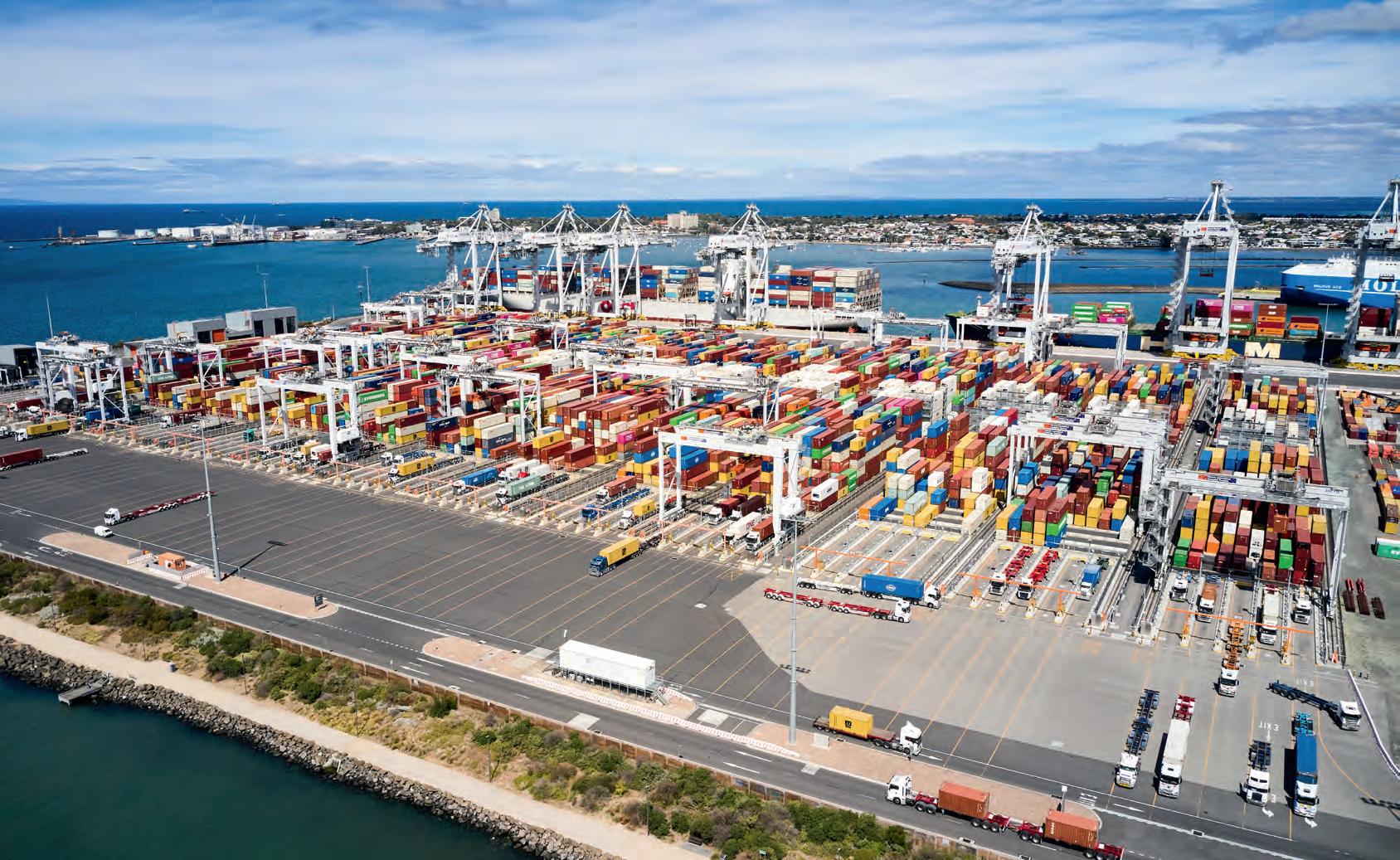
It may stand out as seven massive cranes looming over the Port of Melbourne, but Sean Mortell discovered the impressive technology inside Victoria International Container Terminal is fast becoming a truck driver’s dream
It presented like any other office on a Friday morning. A bunch of young office staff at their desks, wearing headphones while concentrating on multiple screens in front of them, coffee and energy drinks at hand. A small chat among them, an occasional laugh, a quick toilet break.
However, it’s not your normal workplace. Instead, this office is actually the control centre for Victoria International Container Terminal’s (VICT) cranes that unload containers off of ships around the clock. At the click of a computer mouse, these operators are completing the most intricate of crane manoeuvres, controlling machinery nearly 50 metres tall more than a kilometre and a half down the road from their desks.
Down by the dock, five ship to shore (STS) cranes stand at 39 metres tall, pulling shipping containers off of vessels to process. Next to them are two newer STS cranes that are another 10 metres taller. They’re controlled in the comfort of the office, away from the bristling wind of Port Phillip Bay and the constant movement of the crane cabin.
It’s technology that is only seen in three places around the world – the ports of Rotterdam, London and Melbourne. The latter, which is where the VICT is based, is Australia’s first and only fully automated container terminal, featuring these seven STS cranes, 17 Automatic Container Carriers (ACCs) and 26 Automatic Stacking Cranes (ASCs).
Many Melbourne residents would’ve even realise
the depth of technology that has quickly evolved within their own port. It was only in 2014 that the Port of Melbourne appointed VICT to design, build and operate Australia’s first fully automated container terminal.
As a subsidiary of International Container Terminal Services Inc. (ICTSI), the largest independent terminal operator across six continents, VICT is the product of ICTSI’s experience, having been at the forefront of global port management for over 34 years. Within three years the terminal had commenced operations, and it now captures over a third of Melbourne’s international containerised market.
Currently, it adds 33 per cent capacity to the Port of Melbourne, enabling the growth of beyond 1.4 million TEUs to support the long-term trade expansion that is ongoing at the port.
However, the importance of what VICT has built over the past decade in Melbourne isn’t just for its workers and the ease that shipping companies get to enjoy when they unload at the terminal. This port technology has extended to the landside operations of VICT, where a variety of innovations have ensured there are never any long, winding queues of trucks waiting to get in and out of the terminal for hours at a time.
Instead, VICT has created a system that ensures no truck takes longer than 40 minutes to go gate to gate, with a maximum 33 minute turnaround time.
It’s in stark contrast to other terminals, even VICT’s neighbours in Melbourne, and forms the key to its evolution and success.
VICT CEO Bruno Porchietto says the idea behind this investment is to make life easier for truck operators. It’s resulted in VICT being the terminal of choice to collect from for truck drivers.
“The more reliable you are, the higher your success is. Automation allows us to be very constant and for truck drivers to rely on us,” Porchietto told OwnerDriver.
“On the shipping side, vessels come and go here, but we almost every time berth them on arrival, so we don’t leave them in the bay waiting for a few days.
“On the landside, trucks come and go very quickly, we have the lowest turnaround time in Victoria for sure, it’s so fast and efficient. It’s top class. Having less than 40 minutes to wait is very efficient.
“Truck drivers love it as they don’t have to come here and wait. That means more productivity for the trucks that can do more than one trip, either here or somewhere else. They know when they come here it’ll be a short trip. It’s part of our focus to keep both sides happy on the water and landside.”
Through a paperless truck booking system and optical character recognition gates, trucks only have to slow down upon hitting the entrance to VICT rather than wait for people or slow machines. Then, 11 inbound gates and four outbound mean there’s plenty of options and space for trucks to take to smoothly


“While sitting at a vantage point to see the gates in action, a collection of trucks of all shapes and sizes, from B-doubles to a single trailer set-up, glide on by, barely stopping.”
flow in and out of the port while collecting or discharging their loads.
While sitting at a vantage point to see the gates in action, a collection of trucks of all shapes and sizes, from B-doubles to a single trailer set-up, glide on by, barely stopping. The technology reads the truck’s plate and container number to ensure the right truck and cargo are arriving for their planned pick-up time slot. Once they hit the secondary inbound gate, further identification checks are swiftly completed and they head straight on through to the automated yard, where the display of technology makes it clear as to what makes VICT an innovative leader in port logistics.
Located at Port of Melbourne’s Webb Dock East, VICT is the only terminal within the port precinct to have unrestricted navigation and berthing. Head on further to the other terminals in Melbourne and you hit the West Gate Bridge – a key height restrictor for massive ships. This provides a significant advantage for accommodating larger vessels in an efficient manner.
Left wide open to Port Phillip Bay, the record for the largest container vessel to reach the Port of Melbourne is at VICT when CMA-CGM Pelleas, a ship with dimensions of 350 metres by 43
metres and a TEU capacity of 9,661, docked at the terminal. On the landside of this, 13 container yard blocks provide 65 container pick up and drop off lanes, with everything neatly organised for standard containers and refrigerated/reefer containers.
When we drive into the massive yard on a Friday morning, I’m told it’s a busy time, with trucks constantly doing their best to reverse into the bays. However, there’s still expansive room and it doesn’t feel crowded – the abundance of bays means not everywhere is taken, making it convenient for trucks to manoeuvre around the terminal.
Upon completing perhaps the most challenging part of the operation where the trucks are reversed into their bays, this is where VICT’s technology comes to the fore. Once the driver has finished removing the pins holding the container, the software ensures the truck and trailers are in the correct spot and instructs the automatic cranes to begin their jaw-dropping activities.
The ASCs are what the landside relies on, with these massive cranes swivelling in all directions on rails. There’s no human behind these – instead, the automatic cranes spend all hours around the clock organising the containers so that it’s as simple as picking what is needed off the top of skyscraping piles and placing them carefully onto the backs of trucks. Once the transaction is done and the driver has secured the pins, the driver is free to go, with the technology even ensuring that everything is lined up correctly and made safe.
Behind this, I’m soon taken around to the waterside, where these seven giant cranes controlled by the workers back in the control centre constantly load and unload along a 735-metre-long quay. With mooring dolphins included, the entire length of the quay is 769 metres, allowing two 367 metre vessels to operate simultaneously.
It’s here that the seven cranes are constantly remotely controlled, unloading and then loading shipping containers on and off the ships. In between this and the cranes on the landside that load and unload the trucks are the 17 ACCs that also run without any human controlling them. Instead, magnets embedded underneath the asphalt allow this nimble fleet to run containers in between the two cranes without any human interference.
While this speedy process is making life a dream for the growing number of truck operators using the terminal, VICT also has a direct road connection with Appleton Rail to ensure containers continuously move between the rail line and VICT. This means there’s no additional cost for shipping lines and no disruption.
Now firmly entrenched in the Port of Melbourne’s everevolving operations, VICT has wasted no time in stacking milestones higher than it does its containers. The company has celebrated receiving its fifth million TEU since the start of operations in 2017, while it’s continuing to eye new growth opportunities both in its waterside space and in its landside technology.
It’s also committed to sustainability and efficiency, with this technology providing a safe gateway for goods that support the Victorian economy. VICT supports The Mission to Seafarers Victoria, allowing ship crew to enjoy the city and receive some luxuries after spending up to weeks at a time on the high seas. Alongside supporting Backpack for VIC Kids, the company also sponsors the Wayfinder initiative by the Australian Logistics Council (ALC) which promotes women’s careers in the transport and logistics industries.
On the safety side, its 14.4 Rural Tailgate Inspection biosecurity measures allow containers destined for rural Victoria to be properly checked and cleaned before leaving the terminal. When it comes to energy efficiency, the cranes use an energy recovery system that represents 16 per cent of the total operational energy use. LED lighting systems on equipment and office spaces and the use of electric and hybrid vehicles within the terminal’s four walls ensure the terminal isn’t just leading the way in innovation, but also sustainability.
It may not be renowned as one of Melbourne’s leading landmarks – instead, tourists often tend to marvel at Federation Square, Eureka Tower or Flinders Street Station. But what VICT has built at the Port of Melbourne is fast putting the city in shining lights in the global port industry. For truck drivers, it’s quickly becoming a major highlight of transporting freight in Melbourne.
“The growth areas for us are more to do in building and getting new equipment, as well as getting new cranes coming in,” Porchietto says.
“This will, in itself, improve our productivity and capacity even more and deliver on our focus to make life easy for truck drivers. This will then improve the whole industry’s productivity in the state.”








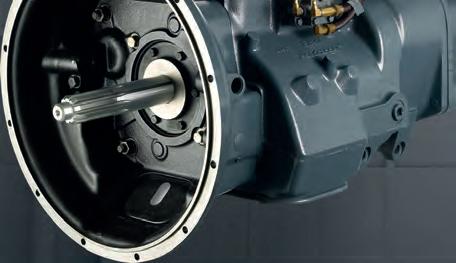
•Eaton Reman Transmission
•Clutch Installation Kit






•BONUS: Meritor Brake Drum Pair INCLUDES:

•20L Synthetic Transmission Oil (PS-368)




Change gears with confidence with a remanufactured gearbox bundle from Eaton.
The bundle includes an Eaton reman transmission, an Eaton clutch installation kit and 20 litres of fully synthetic Eaton-approved engine oil. As a bonus, customers will also receive a pair of Meritor brake drums to suit their application.





The Gorski family enjoyed a well-deserved recognition of the half-century milestone of Gorski Engineering in August, celebrating the peaks and troughs of 50 years spent manufacturing for the transport industry
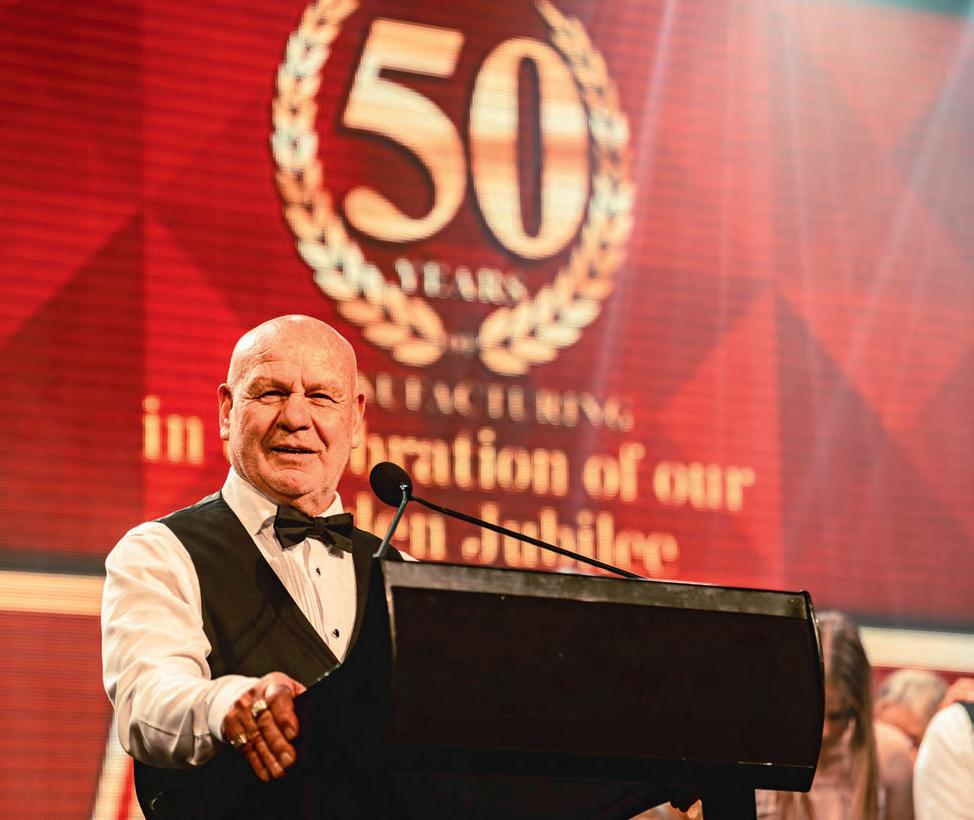
The year 1975 was a defining time for both global and local history. Around the world, the Vietnam War came to a close, while in the UK, Margaret Thatcher became the leader of the Conservative Party. From an Australian perspective, Prime Minister Gough Whitlam was dismissed.
But, 50 years ago, one enduring moment in Australia’s transport history was the establishment of trailer builder Gorski Engineering. Back in the swing of the ‘70s, Ken Gorski had a vision to build and deliver premium quality tipper bodies to the expanding transport industry.
Fast-forward half a century and Gorski Engineering is a popular name in the sector, with the Gorski family expanding the empire. The rich history of the trailer builder was on full display in August as the Gorski family held a gala event to celebrate 50 years of success in the transport sector.
The event saw over 600 customers, employees, suppliers, dealerships and wider transport industry members descend on Melbourne’s Crown Palladium, with a raft of presenters and team members charting the enduring legacy of Gorski Engineering over the past half century.
But how did the Gorski family come to provide 50 years of hard work and dedication to the industry, reinventing and then leading the tipper market in Australia?
It all started in 1950 when Wally and Eugene Gorski arrived in Melbourne from Poland with their daughter Maria. Spending time at a migrant camp, son Ken was born in Mildura at a refugee hospital.

When Wally began working at a truck builder yard in Reservoir in Melbourne’s inner northeast, Ken wasn’t far away. By the ‘60s, Ken, aged 13, was working beside his father in a newly created backyard workshop they forged together, providing repairs for operators in the local Lalor and Thomastown area.
Just a few years later, Ken’s business savvy nature shone through when he attached repair business flyers to cars parked at the local pub. By 1968, he was starting a fitter and turner apprenticeship while working multiple jobs.
It all kicked off in the ‘70s when Wally and Ken bought their first factory in Epping, naming the business W & K Gorski. It took until 1975 for the Gorski business to officially get underway, veering away from repairs and into full tipper body production.
The move immediately paid off as the Gorski name gained traction and, by 1979, they were delivering tipper bodies to councils and local dealerships, all from their humble shed in Epping.
John Serrano from El Dorado Transport remembers these early days and the surrounds the Gorski Engineering origins were founded in. His first memory of Ken involved tackling the dangerous walk through the Epping yard to the office.
“I went down to the Epping yard, and there was no signage, so I didn’t know where it was, but we were in the market for a new trailer so I made my way to the front of the building,” he said.
“I found a little shed in the back corner and it was a battle to get there – I had to duck past steel beams and


around people working. I got to the office and asked for Ken, only to be told he was outside, so back out I went.
“I accidentally walked into a bloke lying under a trailer, and when he came out I only remember a gold tooth shining. That was the first time I met Ken, and I ordered a trailer straightaway.”
This relatable nature paid off, with Gorski pairing this intimate service with innovation in the ‘80s. Gorski built the first twoaxle dog trailer and two-axle semi-trailer, expanding its range to meet growing demand. This success allowed Ken to buy a second 32,000sqm site in Epping in 1983 before launching Gorski Transport in 1987 and running his own fleet of International S Line trucks.
By the end of the decade, he’d sold it for a cool $1.3 million and shifted his focus back to the trailer builder.
But this success wasn’t ongoing and guaranteed. In 1991, Gorski Bodyworks collapsed, with Ken buying it back from the liquidators for only $14,000 and renaming it Gorski Australia. He began rebuilding from two small sheds in Epping before launching the quick release tipper a year later.
This saw the Gorski fortunes turn around and Ken upgraded to the Hume Highway site in 1993 that the company continues to base its expanding operations from to this day.
While the 2000s saw complications come, first through the implementation of the GST and then through a combination of financial and family challenges, the business endured. Throughout these challenges, innovation and trailer technology evolution was never far from the Gorski family’s DNA.
In 2001, Gorski built its first three-axle range specified for semi-trailers, while by 2006, Gorski had met Performance Based Standards (PBS) requirements for its models. Despite these developments, tougher times faced the family.
Financial strain in 2015 and health issues meant Ken had to step back. At the time, it was an alarming period for the future of the business. However, the Gorski family led from the front, stepping forward to cover Ken’s absence. With the likes of daughter Amelie, her partner Paul, Tim and Jeremy, the next generation of Gorskis re-shaped the structure of the business.
It culminated in a new wave of success that included Gorski’s return to Queensland, this time triumphantly breaking into the market, last year. The site is headed up by long-term team member Alex Powell, who has been there through all versions of the company after first starting as an apprentice in 2006 to now managing the Queensland site and team.
In 2024 alone, Gorski delivered 441 units, proving it has turned its fortunes from a backyard shed in Lalor to becoming a national leader in tipper manufacturing.
Crowning the celebrations was a wave of families and industry legends who have been involved in the business and the Gorski family in one way or another. With Richmond Football Club AFL legend Matthew ‘Richo’ Richardson MC-ing the night, fellow


An entertaining segment saw ‘Richo’ chat to a Gorski customer from each decade of its existence to date, from John Serrano to the likes of Pat Papaluca from Patlin Transport, about their experiences with Ken and the family. Laughs were aplenty, as were tears.
Bottom: A wide range of Gorski family, friends and customers
To finish the proceedings, the current generation of Gorski Engineering leadership took to the stage to recap their journey and thank all 600 people at the event who have been involved with the business. Much like its origins, Gorski celebrated its 50-year milestone in the way it started – with a close group of friends that it continues to innovate for and dedicate its time to.

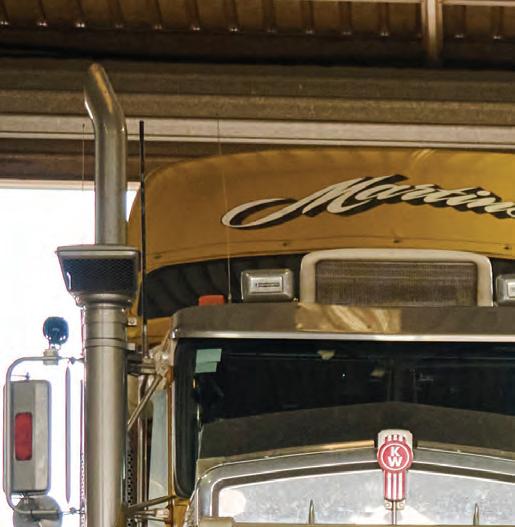
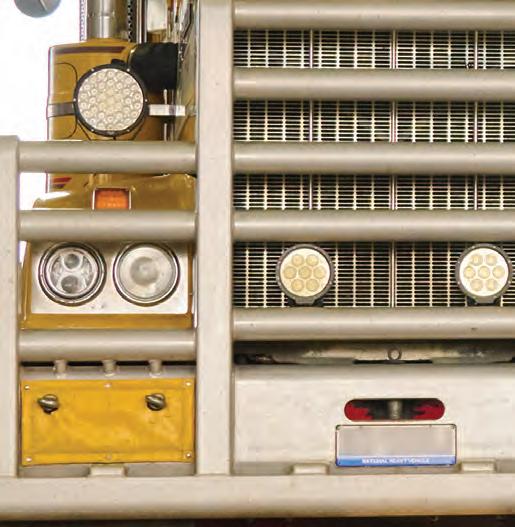

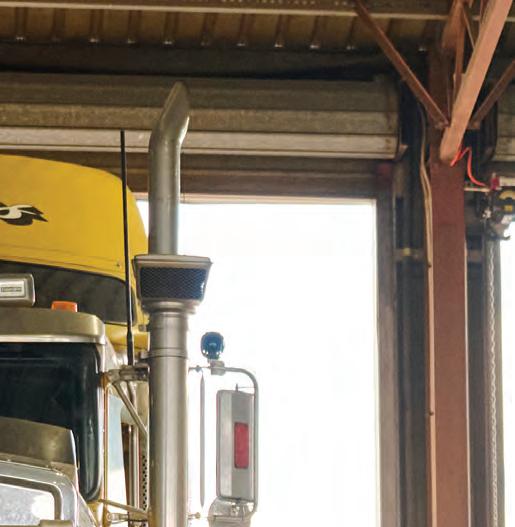
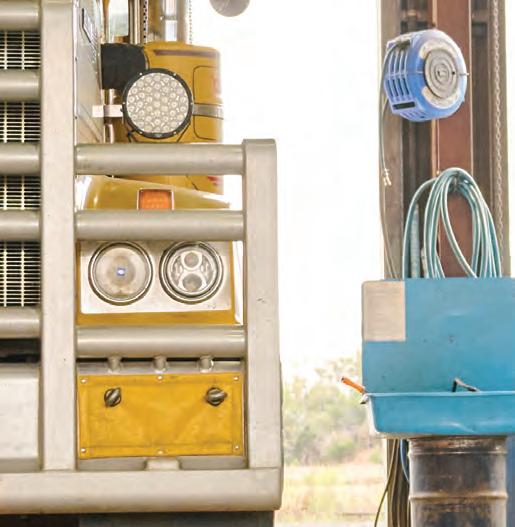











Clark calls
the road
We have an opportunity at the moment to make sure that, in the future, the trucking industry pays a road charge which is equitable for all operators and rewards productivity. At the same time, we need to develop an alternative solution to the current road user charge model to deal with the move towards zero emissions vehicles and the adoption of alternative fuel and power options.
It has been clear for a number of years that the system for charging trucks for the use of Australia’s roads is broken. The government has been able to blatantly overcharge the trucking industry while the system for claiming fuel tax credits is cumbersome and onerous, especially for smaller trucking operators. At the same time, the quality of the roads
used by trucks has deteriorated.
The road user charge, an excise duty on the fuel the road freight industry burns, alongside fuel tax credits for kilometres travelled, was introduced as part of the creation of the GST over 20 years ago. The charge was supposed to reimburse governments for the wear and tear on roads caused by heavy vehicles, but the process for setting the rate was flawed and vulnerable to government interference. Fluctuating fuel prices also added to the confusion and uncertainty for both road transport operators and the federal and state road managers.
The trucking industry is also kept in the dark about how funds are allocated across the road network, both federally and in the states. The funding priorities do not take into account the need to improve the

“Truck drivers on the roads of Australia can see this dysfunctional road funding system play out daily: while they are held up in unnecessary road congestion and driving on poorly maintained and inadequate roads.”
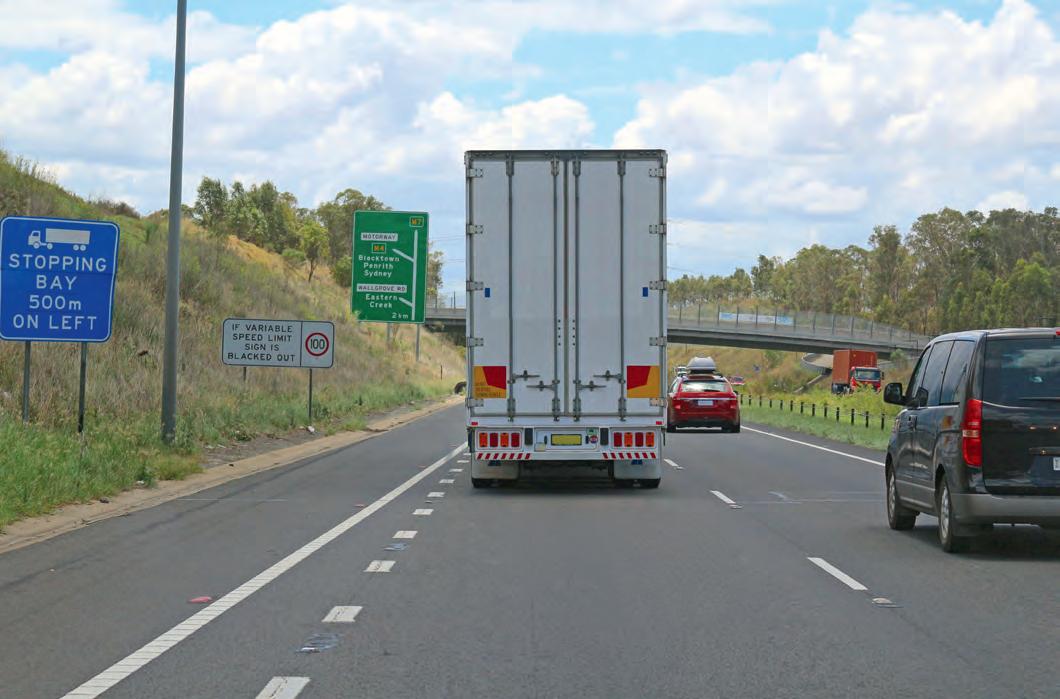
productivity of road freight as a whole. The process appears to prioritise political considerations at the expense of rational decisions aimed at improving freight productivity.
Truck drivers on the roads of Australia can see this dysfunctional road funding system play out daily: while they are held up in unnecessary road congestion and driving on poorly maintained and inadequate roads. The flawed funding priorities process leads directly to poorly maintained roads, which leads to increased damage to equipment and increased off-road time for the industry’s rolling stock.
Any move to simply increase the excise rate on fuel, which has been proposed as part of the discussions around the federal government’s recent Economic Reform Roundtable, will have a negative effect on productivity and increase overall costs for trucking operators who are already working with extremely tight margins.
NatRoad members and other road freight operators continue to improve fuel costs per tonne of freight by using the latest truck technology and higher productivity combinations. This has the effect of increasing overall productivity in the economy, which is one of the stated priorities of the Economic Reform Roundtable. However, the increased take-up of alternative power sources, as we move towards zero carbon emissions, will also reduce the fuel excise revenue for the government, putting pressure on vital funding to improve the quality of our road system.
The New Zealand government recently locked in ‘per kilometre’ road user charges for all light vehicles (petrol, diesel, hybrid and electric) from 2027. Is there a lesson for Australia about how we can ensure all road users pay their fair share?
Now is the time to think ahead towards a more equitable road charging regime. One that not only raises enough funds to maintain and improve the overall road stock, but will also drive improved productivity across the entire road freight transport sector.
The new system has to take all of these different priorities into account. Economic growth requires a profitable and effective road freight industry. Improved productivity across the supply chain is vital for future economic growth and improved productivity. Reduced carbon emissions is also a major priority across the economy.
Any road user charge being developed needs to be able to tick all the boxes for the foreseeable future, and avoid favouring one priority over the other. The economy needs an effective and efficient road transport sector moving towards zero carbon emissions, and the road transport sector needs a well-funded road network to do its job safely and effectively.

The
groundbreaking
You don’t often get a group of a couple of dozen truck drivers, baggage handlers, food delivery riders, employers and union officials walking through Parliament House. But at the beginning of September we took a transport delegation to Canberra to talk about the impacts of new laws on the industry so far, and what still needs to be done.
What’s refreshing is that this government is willing to hear what the transport industry has to say about what needs change. And there’s a lot that needs change – we made that clear.
We have powerful tools now to start fixing road transport. Our first industry applications to start making transport better have almost finished the consultation phase, and soon we’ll see new, better standards to start lifting the industry.
But the work is not over yet. These first applications are just the start of improving the industry, and we’re working together to figure out what most urgently needs to be tackled next.
Over the couple of days we met with members of parliament from right across the political spectrum. Dozens of meetings in total, including with the Prime Minister and Deputy Prime Minister, who both commended the unity of our industry in driving change. They heard from some familiar faces – like Tony Matthews, an owner driver who’s been in the industry for decades and wants to leave it a better place than what he found it.
Like Steve Newton, an employee driver delivering parcels out to Dubbo, seeing sub-contractors taking risks like using rear trailer breaks because their bosses have told them it’s too expensive to change brake pads. There was Cameron Dunn, an employer who pays his drivers in seven days, his tow operators in 14 – but sometimes isn’t paid by his clients for 120 days.
But there are also newer stories, not just from trucking but from the gig economy, which desperately needs standards to stop the free-fall. Yaser, who’s a rideshare driver, has a wife and three children to support, and a mortgage to pay. But after his rates were cut again unilaterally by Uber last year, he’s working 14-hour days just to make the same amount as he was a year ago. He’s purchasing second-hand tyres because he can’t afford new ones. Alexi, a food delivery driver, works across multiple apps because it’s the only way to get enough work. We also heard
from Simon Earle, the CEO of TEACHO, and the most recent research on road transport which has painted a stark picture of what needs to change – like how transport operators suffer as one of the lowest profit segments in the economy.
The study demonstrates that large client profits are built by increasingly shifting work to cheaper, more dangerous operations. Those in the industry will know this intimately: the sub-contracting out to the lowest bidder, not enough money in a contract to ensure proper safety and training.
As we heard in Canberra, more work is also going to the gig economy, which is why it is so urgent we get standards in place there with the new laws. The hope for this industry lies in our continuing to work together.
What was different about this time was that we also brought aviation workers with us. The aviation industry is plagued by many of the same problems as road transport: a race to the bottom on standards and conditions, clients like
188-390 Sussex Street, Sydney, NSW 2000. twu@twu.com.au
Qantas splitting up the workforce and splintering workers’ power.
At the end of last year, a young ground handler in Brisbane almost lost his leg in a horrific incident, at a company called Swissport which has received a large proportion of illegally outsourced Qantas work. Only recently, another labour hire worker in the Qantas supply chain was involved in a tragic incident – and this one, devastatingly, took his life.
Ground handling workers in Canberra spoke about companies with broken or outdated equipment, where there was pressure to rush just to get planes out on time. It’s the same as what we’ve seen in road transport with the immense and deadly pressure to work fast enough to keep a contract.
Recently, illegally sacked Qantas workers had a huge win in the Federal Court: a $90 million fine imposed on the airline, Justice Lee saying it had taken part in “performative remorse” over the sackings. The five-year court battle run by the TWU was one that to begin with, nobody thought we could ever win.
Qantas told these workers that they were delusional just for challenging the sackings. And much of the public believed them. Damo, one of the illegally sacked workers, joined our delegation to Parliament House, and spoke about how what Justice Lee said had rung true: depriving people of work illegally was depriving them of their dignity. In both aviation and road transport, we are steadily restoring dignity to industries that used to thrive.
60,000 TWU members stood behind those Qantas workers: truck drivers, garbage collectors, cabin crew, delivery riders, bus drivers, pilots all supporting them, because we knew it was a fight worth having. And so is the fight for our industries to be safer and fairer – like with the Qantas battle, if we keep sticking together we can make it happen.
“Dozens of meetings in total, including with the Prime Minister and Deputy Prime Minister, who both commended the unity of our industry in driving change.”
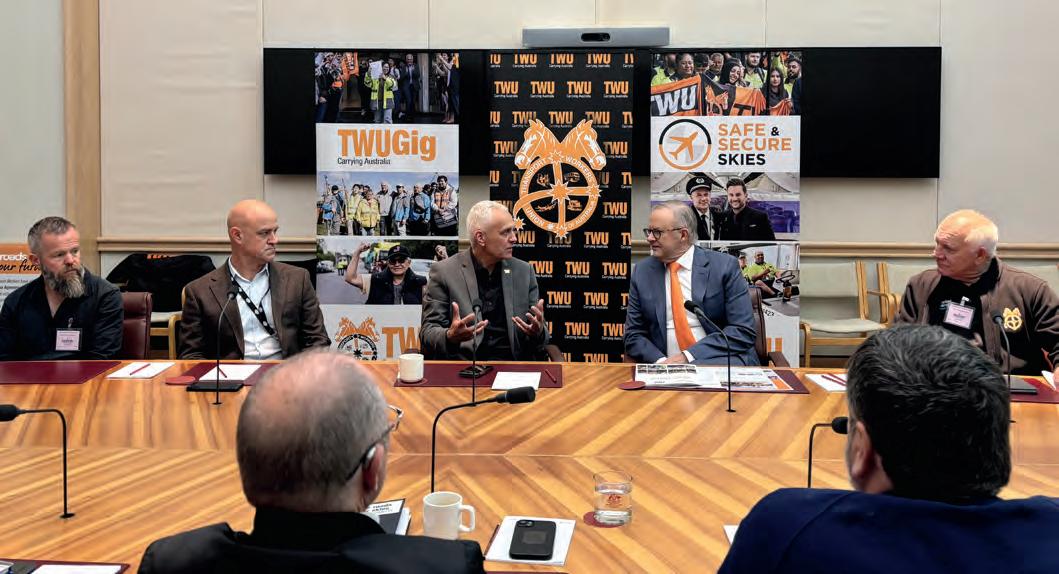

Have you ever wondered what MacGyver would be like if he was born in Australia? If you are unfamiliar with the antique reference, let me fill you in. Back in the awesome ‘80s there was a TV show about a secret agent that could basically solve all the world’s problems with a Swiss Army knife, a stick of gum and some corny catchphrases. They rebooted it in the 2010s, but I’m talking old school original Richard Dean Anderson MacGyver. Those who know, know. He was a
guy that just seemed to find a way to take control and handle any situation. He could put his mind to a problem, a challenge or even a new skill and just work away until he’d mastered the aforementioned situation. Yes, the show also contained cheesy bad guys and 1980s state-of-the-art terrible special effects explosions, but my focus is on the character development of the lead protagonist, not the leather jackets and cliché v illains. I’m referencing MacGyver’s ability to master his surroundings and succeed. Those attributes are what this preamble is all about.
The reason for the preamble and ‘80s nostalgia is because recently, while driving through the Keperra area of Brisbane, I found my attention accosted by an imposing, square edged Champion bonnet, sitting steadfast and staunchly on the front of a Mack Super-Liner. The Super-Liner in question, branded with an anniversary livery, turned out to be a surprise gift for a man whom I would come to learn epitomises many of MacGyver’s best attributes. For more than 40 years now, Gavin Turner has taken every opportunity, every





For the 40th anniversary of Boulder Wall Construction, Gavin Turner’s sons found the perfect Super-Liner for the occasion. Warren Aitken learns more about the man at the helm of the growing operation

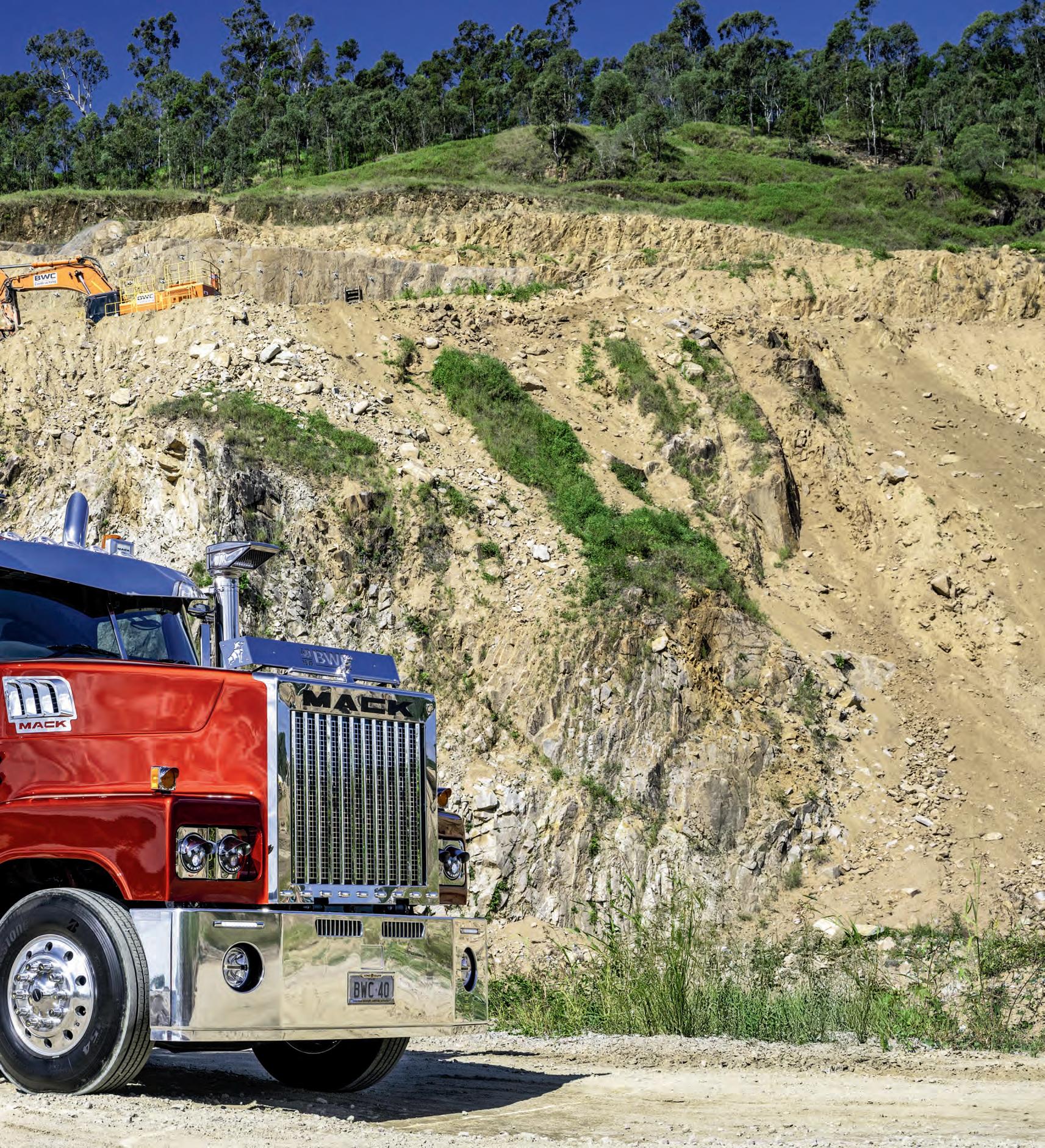
conundrum, every situation, good and bad and has mastered it. Now, with his sons in tow, the industrial machine fitter-welder who began his business part time while working as a maintenance fitter at an air-conditioning factory has celebrated 40 years of operations with this impeccable Mack Super-Liner.
As seems standard with transport stories, sitting down to learn the ins and outs of a truck that has caught my eye often leads to an amazing origin story. The Gavin Turner and Boulder Wall Construction story follows that trend. It began back in 1984 when Gavin wandered home after a hard day fixing breakdowns at the air-conditioning factory to inform his lovingly tolerant wife Fiona that he
was going to buy a Bobcat and move some dirt around.
“I remember coming home one day and just saying to Fiona I think I’m going to buy a Bobcat,” Gavin laughs.
“I hadn’t driven one before. So, when I bought it, I went over to my cousin’s place who had some acreage and learned how to operate it. I kept working and would do odd jobs on the weekend. I would pick the jobs that weren’t technical while I was learning, like moving dirt into a chook shed, or knock the fill over. I got the hang of it pretty quick.”
Gavin hadn’t grown up surrounded by earthmoving influences, but he grew up with a fascination of the industry.

Above: The BWC Super-Liner was purchased as an anniversary present, however it is still a workhorse. BWC’s Keperra Quarry is a second home to this impressive unit and very picturesque when we needed some working photos










“We’ve got Tridents and Super-Liners; I do love the Super-Liners. What is a labouring day for the Tridents is a stroll in the park for the SuperLiners. They are perfect for us, and the turning circle is exceptional.”
“I’ve always loved everything earthmoving,” he exclaims with passion.
“When I was a kid, everyone else was getting Matchbox sports cars, but I was buying toy dump trucks and dozers.”
It was that enthusiasm that gave Gavin the drive to purchase that original Bobcat. For those wondering, it was an old petrol 632 with a 1300 Cortina motor in it. Not exactly state of the art, even back then, but it did the job.
Almost hand in hand with an earthmoving addiction was a growing truck obsession forming. The two genres are not mutually exclusive. In fact, they are almost codependent. There’s no better example of this than the fact t hat with the purchase of Gavin’s first Bobcat also came the purchase of his first truck.
“The first truck I bought was a second hand J3 petrol Bedford, I bought it to move the Bobcat around,” Gavin says.
“I had to make ramps up to get the Bobcat into it, and I’d flit off to jobs throughout the weekend.”
It wasn’t BWC back in those days – that name didn’t originate until a bit later. In fact, Gavin was Turnico Bobcat Hire for quite a while. That changed to Brisbane Earthmoving Pty Ltd once he’d gotten more gear under his belt. Odd jobs changed to specialised jobs and pretty soon specialised jobs with a finesse for forming rock walls, leading to the creation of the name Boulder Wall Constructions.
Among the gear acquisitions, Gavin’s truck resume was getting quite creative as well. As mentioned, it began with the J3 and then its successor, a T4100 Mazda. Both early acquisitions for BWC were in Gavin’s ‘learning the ropes’ phase. By the time he had progressed from site clean-up jobs to more specialised work, which involved carting rock to job sites himself, he had a D-series Ford and a CAT powered Louisville. Gavin even ran at one stage, I kid you not, a Fuso with a 671 in it. His truck affection knew no limits as he was building the business. Instead, it was driven by his MacGyver-ness.
“Back then it was all about the body rather than the truck,” he admits.
“It was what we could get to do the job without compromising that mattered.”
F rom that first petrol Bobcat and J3 Bedford, Gavin found himself and the company on a slow and steady expansion to the point that they currently have over 80 staff on board, not including subbies. As far as equipment goes, along with over 30 truck and dog combinations, there is every possible piece of earthmoving equipment the Tonka Toy dreamers could conceive, but in real life. Excavators ranging from 1.5t all the way to 90t. Dozers, loaders, graders, jaw crushers, reclaimers. Let’s not forget the dump trucks, water trucks and service trucks. I am unsure how big Gavin’s Matchbox earthmoving collection was, but his BWC collection has it all.
Back to my MacGyver comparisons again – the rise and success of BWC hasn’t been an accident, it also hasn’t been a directive. It has come about from Gavin’s natural response to opportunities, good and bad.
“Any opportunity that presented itself, we’ve always approached with the right mindset, do our due diligence and if I know we can deliver for our client, we will make it work,” Gavin says.
“It’s never been about the money for us. Doing the job and finding a way to complete it for our customers is the important part. Don’t get me wrong, you’ve got to take the odd stiff arm in a scrum sometimes, but I’ve never left a job unfinished.”
That gut level approach and moral belief has been the core of the company. It may seem a bit cheesy when a TV protagonist like MacGyver portrays it, but when it’s genuine like Gavin, you can see why he has the results. It’s also why, after 40 years, there is a packed table when Gavin has his 20-year employees’ lunches.
“We’ve got over a dozen people at our 20-year lunch, we have people that have been here for more than 30 years,” Gavin says.
“We’ve always been respectful of our workers, it’s a
Above: A chariot befitting of a king!
Right and far right: With all the power and torque coming out of the MP10 motor, the big Mack has no issues getting around the uneven grounds it calls home; While most tippers remain fairly standard, for this truck the Shephard Transport Equipment bins were used to celebrate the importance of this unit
Opposite top: The imposing Champion Bonnet is a distinctive addition to the big Super-Liner, its squared up fairings and extra height bring a toughness to the tipper; It’s the subtle small extras from Bling HQ that polish this truck off, like the stainless headlight covers and surrounds
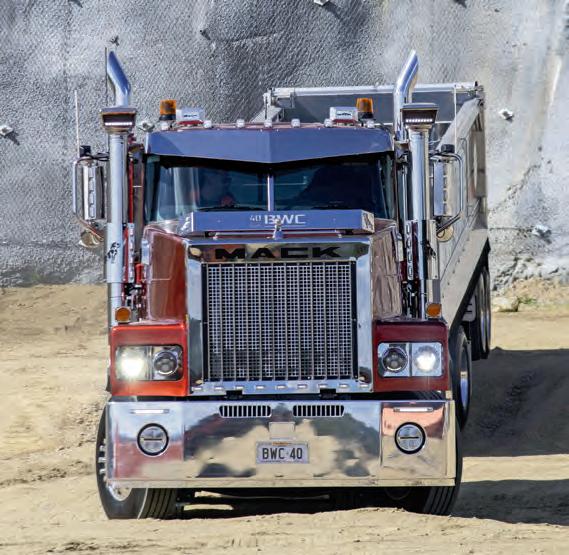

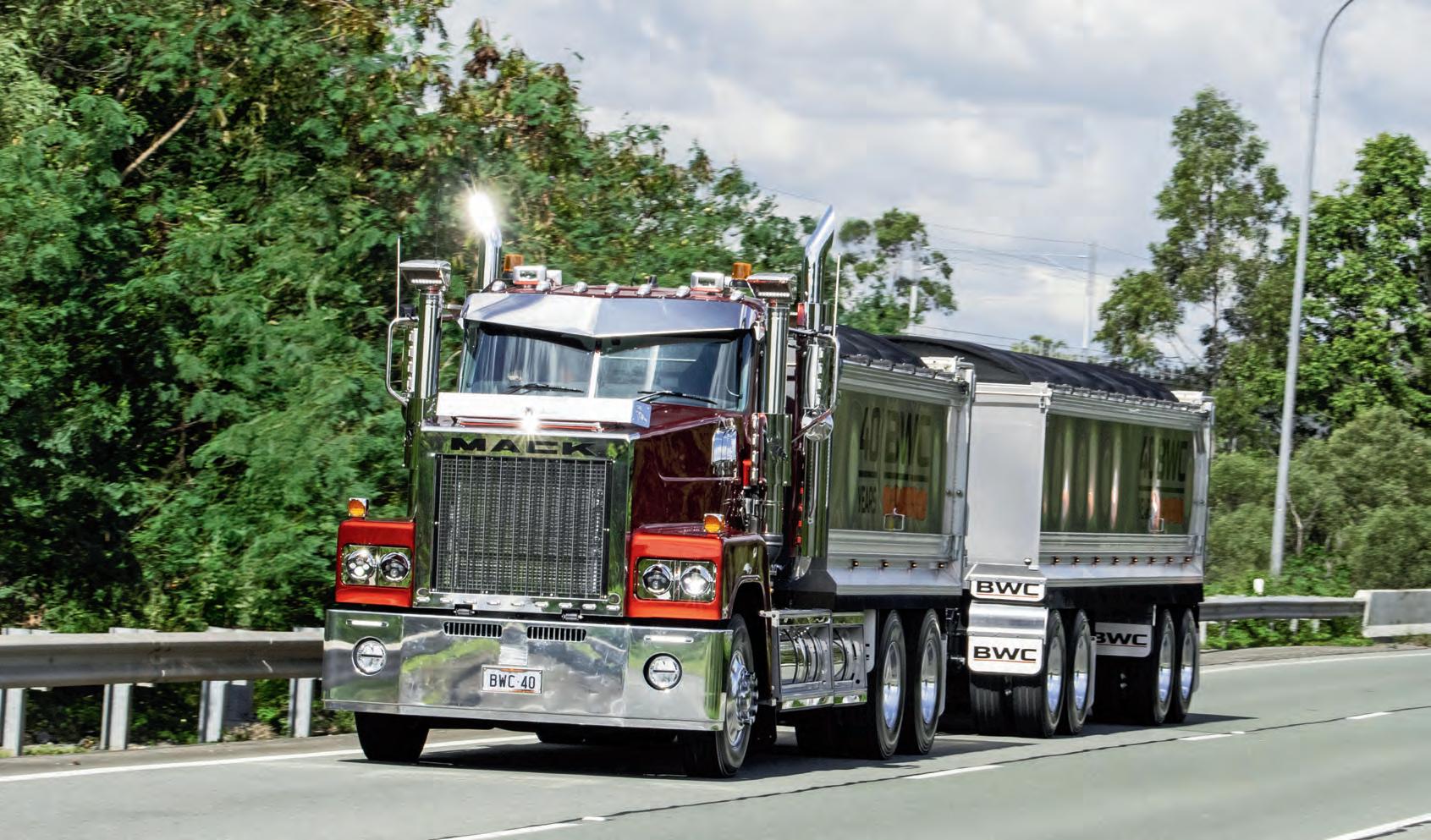
two-way street. They dig deep for us, and we do the same for them. We believe that anyone that comes to us, when or if they leave, we want to see them in a better position than when they came here. We sure as hell wouldn’t be here without them.”
You’ll notice the regular jumping between singular and plural references from Gavin. That’s because BWC is a family company and, while Gavin started the old 632 Bobcat, he is now joined by his two sons Brad and Jeff. The two boys have both taken roundabout routes to end up beside their Dad, with Brad becoming a draughtsman and Jeff an urban planner. Once they opted to work in the family company, however, it wasn’t in suit and ties. Like their old man, the boys have gotten grease under their nails in nearly every aspect of the company.
“The boys never started in the office,” Gavin attests.
“They were changing tyres, driving trucks, changing kingpins, putting buckets on machines, all that sort of stuff. Doing services, oil changes, even detailing trucks.”
The advantage of this path means that
whether the boys are consulting with clients or chewing the fat with the workers, they can understand and relate.
I mention the boys, Brad and Jeff, not just to show how the MacGyver attitude and work ethic has spilled down through the generations, but because it was the boys that came up with the concept of the truck that brought me here in the first place.
BWC’s 40th anniversary was back in July 2024. Gavin and Fiona, along with the BWC family, decided to celebrate with a big function. While Gavin was preoccupied with all the organisation, his two boys took it upon themselves to arrange a special gift for their Dad as well.
“The boys organised it all, I probably should have noticed it going on, but I didn’t. They’d been asking about the Champion bonnet as well, because I always like that, but I never caught on,” Gavin admits with a laugh.
While BWC has had its fair share of manufacturers within the fleet and still do, the Bulldog brand has always had a representation somewhere. It’s a brand Gavin has long admired and, in the earthmoving industry, he


has had great reward from them.
“We’ve got Tridents and Super-Liners; I do love the Super-Liners. What is a labouring day for the Tridents is a stroll in the park for the Super-Liners. They are perfect for us, and the turning circle is exceptional,” he says.
Hence when Brad and Jeff chose to award their Dad with an anniversary rig, the Mack Super-Liner with a 13 coat candy apple red paint job, a built tough Tony Champion bonnet and custom-made king bar was their go-to creation.
For the record though, the fairy tale 40th handover took a bit of a Shrek-esque fairy tale deviation before the party.
“We had planned to have a film crew and that at the event, we were going to roll it up outside and bring Dad out, get it all on video like candid camera,” Jeff Turner says.
“But it just didn’t align.”
As a parent, we’ve all had our kids front up at some stage saying, ‘oh we were going to do this for your birthday, but we ran out of time,’ and it would be fun to tar Brad and Jeff with that brush, which I am still inclined to do, mind you. Truth is, the boys had planned it out perfectly, but anyone who has been involved in a new truck build will know exactly how difficult it is to keep to a timeline. With so many contributors and so many delays possible, it is no surprise that when it came time for the anniversary party the boys had to opt for plan B.
The Monday after the 40th anniversary event, the boys wandered into Gavin’s office

“But I knew with Ryan, he would make it look perfect. I didn’t want it to look like a circus truck, but I wanted him to make it special, and he did a great job.”
and presented him with the personalised plate ‘BWC40’. Gavin laughs as he recalls how blown away he was purely by the license plate.
“I actually got a bit emotional; it was really nice of them. Then they informed me that it should have had something hanging off it, which of course was the SuperLiner,” he remembers fondly.
What contributed to the delivery delay was the extent to which the boys went in preparing their Dad’s gift.
Generally speaking, tip trucks get a pretty hard life –there’s very little glamour at the bottom of a muddy or dusty quarry and no red carpet on developing worksites.
BWC has always ensured its trucks stand out on the highways as they represent the attitude and approach of the company as a whole. The trucks are never coated in chrome, but rely instead on colour and just a few shiny but sturdy additions. For the 40th Super-Liner, however, restraint was thrown out the window.
The Tony Champion custom bonnet was literally the biggest alteration to the truck. Gavin had commented to the boys after seeing versions of the squared up old school bonnet appearing around and they made sure that was

the first option on the shopping list. Next up was colour. While BWC used to have the nickname of ‘The Jellybean Trucks’, there has always been a tendency to float back to the maroon/red hue. With that in mind, the boys settled on a gorgeous candy apple red colour. The truck was then sent off to Bel Air in Brisbane, where it received seven base coats, followed by six clear coats, resulting in a colour that wows you from every angle.
Fitting the bin and building the trailer was a task assigned to the team at Shephard Transport Equipment. Gavin and the BWC team have built a solid relationship with the STE boys over their years of operation.
“They have very similar core values and ethic to us,” he says, proudly confessing that since day dot, every new bin purchased by Boulder Wall Construction has the Shephard Transport Equipment branding.
The next difficulty is adding some custom work to a truck that will be bouncing around quarries and job sites for the next five plus years. For that, the boys sent it out to Ryan at BlingHQ.
“We took the truck to Ryan and gave him a little more rope than we normally do,” Gavin admits with a smile.
“But I knew with Ryan, he would make it look perfect. I didn’t want it to look like a circus truck, but I wanted him to make it special, and he did a great job.”
Getting the truck to be both practical and presentable isn’t easy with a tipper’s work environment, but BlingHQ added the right amount of add-ons so Gavin got his simple, minimalistic look while still cracking necks when it hit the road.
There are a long list of people that deserve recognition for this amazing anniversary ride, and a long list of people who deserve recognition for BWC’s arrival at the 40-year mark. I will most likely get requests by Gavin to rewrite a few aspects of this story as Gavin is an extremely humble man. But credit where credit is due – i’s not easy these days keeping your head above water, finding a way to confront conundrums, persevere through problems and navigate the nuances of a highly competitive industry, all while prioritising your workers and customers, making a buck and sticking to your own business and personal morals. Well again, that’s a MacGyver move. To do all that while keeping your trucking and earthmoving passion fuelled and, in this case, highly visible, it’s impressive. Therefore, Boulder Wall Constructions deserves an acknowledgement as big as the bonnet on its anniversary Bulldog.
Now let’s wait and see what the family comes up with for their 50th.
Above, L to R: Aside from all the cosmetic advantages the Mack has, it also has state-of-the-art electronics as well, meaning when the load is a bit heavier than it should be, the boy knows it and can reset and start again

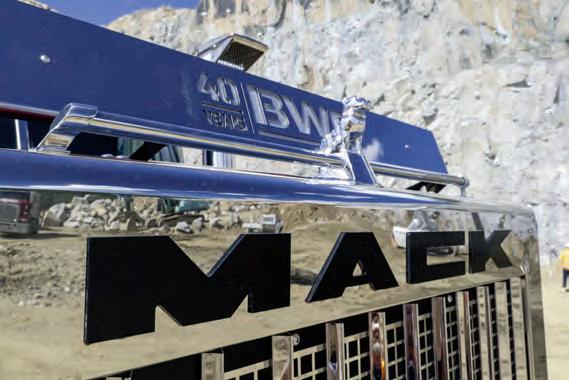




Take your fleet operations to the next level with Geotab, the industry leader in telematics. Our advanced solution combines real-time vehicle data, powerful analytics and intuitive dashboards, empowering you to make smarter, faster decisions that keep your fleet on the road.
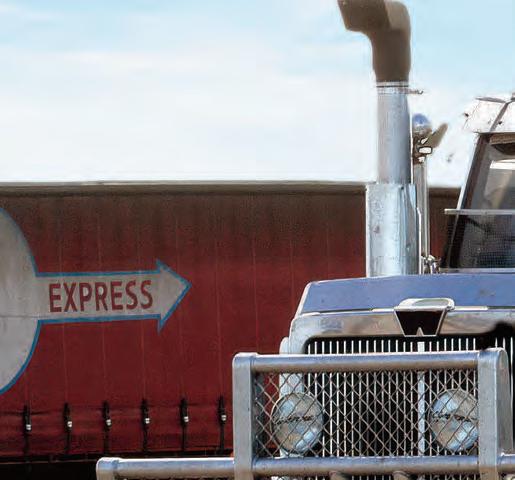








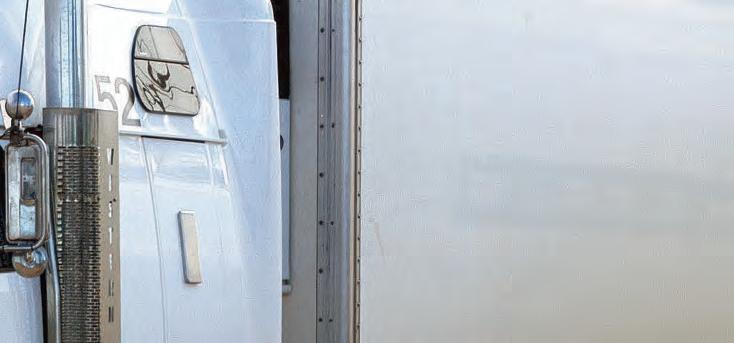






DEPARTURE DURATION

9:10 AM



Rod Hannifey has welcomed some movement on his push to build more green reflector informal truck
Goodaye all, I would like to thank Transport for NSW for doing a video to promote the green reflector marking of informal truck bays. Most of you would have read of them here or seen them on the road. I had a real ally and supporter at TMR in Warwick and he not only did a trip with me and put some up, then went on with me to the Queensland Road Safety Awards in 2005 where I won a category for them, but he also put many up around Roma when he transferred there.
I will also thank Paul Retter, previous CEO of the NTC and Sal Petrocitto, past CEO of the NHVR, for supporting the idea, writing jointly to the states, though I was not allowed a copy of the letter. Thank you to Sal also for doing a video once the Newell was completed. It was during Covid and did not get the exposure that might have helped, but they did try and that video is still on YouTube. However, since that time, Queensland have not done much, not for my want of trying, emailing and ringing. The one exception was when I did complain, I got a call from a gent in Townsville who was an ex on-road inspector and who said he recognised the value of the idea and he would go out and review all the sites west of Townsville.
He did replace many of the original blue squares with green reflectors and I thank him for that. However, many of the ones around Roma have since gone missing, guideposts have been knocked down and no one there seems interested. It must be my lack of effort, I am sure.
So at the risk of being hauled before a court for vandalising, defacing or affecting guide posts across Australia by putting green reflectors on them, I will tell you who has put most of them up. Me! I did approach the ATA some years ago and they too wrote a letter of support, but did warn me against putting them up. I said at the time, “I will stand in front of any judge and say, yes your Honour, I did put those green reflectors up on the guide posts, and while I get a driver every few months tell me I have saved their life by giving them notice and a safe place to stop, I will keep doing it!”. It only took 20 years and lots of
calls and emails to get SA to do some, so any other than those between Port Augusta and the WA border (though I had marked most of them already over the years) were done as a trial a few years ago, but nothing before or since.
Any in WA or the Territory (13 I think and, yes again, many emails and phone calls asking them to get behind the idea, all to no avail), the four on the Hume in Victoria (again, it took more phone calls to get them to retain them by pushing out around the current marked sites during the wire rope roll out, but thanks anyway), probably most in Queensland, except for the

ROD HANNIFEY, a transport safety advocate, has been involved in raising the profile of the industry, conducting highway truck audits, the Blue Reflector Trial for informal parking bays on the Newell, the ‘Truckies on Road Code’, the national 1800 number for road repairs proposal, and the Better Roadside Rest Areas Group. Rod is the current president of the NRFA. Contact Rod on 0428 120 560, e-mail rod.hannifey@bigpond. com or visit www.truckright.com.au

“I will stand in front of any judge and say, yes your Honour, I did put those green reflectors up on the guide posts, and while I get a driver every few months tell me I have saved their life by giving them notice and a safe place to stop, I will keep doing it!”.
Townsville and initial Roma ones, a few done by a supporter round Wide Bay area, plus those on the New England and Warrego done by my mate in the early days around 2005 and maybe half in NSW were put up and most often maintained by me at my time and cost. Some of you have seen me doing it and given me a blast on the horn, hopefully as thanks.
After I completed the Newell, NSW RTA did get some funding to do six highways from the NHVR HVSI and after I rang I was told they were too busy and the funding would be returned. I said “give it to me then”, which of course would never happen, so then I wrote some more emails to a number of friends suggesting it was ridiculous to get the funding and then not use it.
Then I got a call telling me I was a pest and they now had to go out and mark those roads. What a bugger! But it sort of got done and I have been asking for more to be done for more years yet again.
But with these 14 new sites and now the video, just maybe some other states will pull their finger out. VicRoads has done one package of rural roads and is in the process of doing more as I understand, though I did ring and ask again about the road from Mildura across to the SA border where there are also a number of sites marked, but no reply again. I have had other drivers offer to put them up at times, but there are guidelines in place and to mark a site that does not meet them could jeopardise all the years of effort and



I won’t put others in the firing line. I have had some strange discussions with RTA and Transport for NSW over the years, telling me I have marked sites, only for me to tell them it was formally signed by them 20 years ago, me complaining we lost many sites with the overtaking lanes built on the Newell and me even taking down some sites they marked wrongly, but in the scheme of things, I know it works and will keep pushing.
When I started the then blue marking of informal truck bays, because the blue matched the parking bay signs (but WA and Victoria complained saying it would cause confusion about fire hydrants, though I explained I doubted there would be many fire hydrants in the middle of the Nullabor and we would not be marking truck bays in the middle of Toorak, they still said find another colour, hence the green) we did not have enough truck bays then and, in truth, I think we have gone backwards.
So with over 400 sites possibly across Australia, I think I have likely done more than half, and if you then work out the time and effort to do that and multiply that by about 10, you will have some idea of the time, emails and phone calls it has taken to get them up, let alone recognised. I hope they help drivers, until one day we have enough bays, but I could be well retired long before then. Safe Travelling, Rod Hannifey.

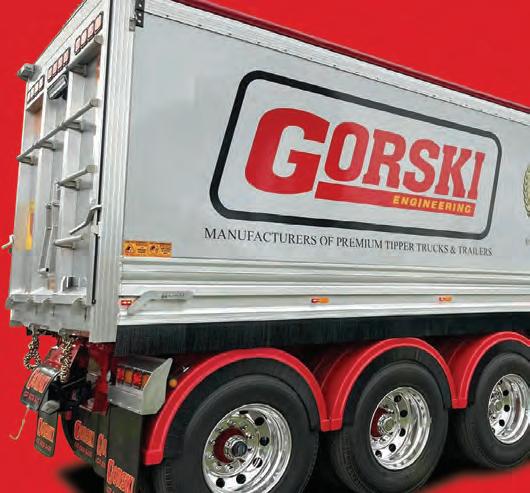

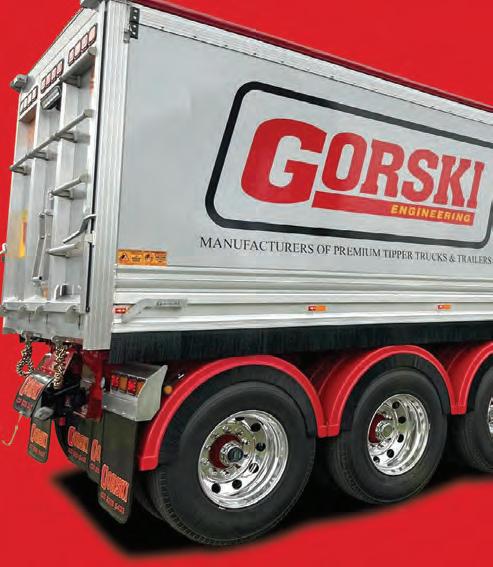



While heading over to MJ Mahon’s Rocklea depot, Warren Aitken met Aiden, the operator’s first apprentice who is learning the game one drive at a time
I’ve mentioned in previous articles how I can often get distracted when I initiate a story lead. Well, it doesn’t get much a bigger deviation than this story. I originally went chasing Michael Mahon of MJ Mahon Transport to snap some shots of his stunning new Volvo, a truck designed and purchased to commemorate the company’s 25th anniversary.
It is a very cool truck and a very impressive tale of talent and tenacity. It is also on the shelf for now – it is still coming, you will just need to wait. The reason being, when I rolled into MJ Mahon’s Rocklea depot, I met a young man named Aiden, MJ Mahon’s first apprentice truckie. He is the guinea pig for a program that the MJ Mahon team are fluidly building to train and encourage the next generation of truckies, mixing the current craze of learning on paper with the old school techniques of hands-on experience. It’s a trucking apprenticeship created by a truckie, for future truckies.
The thing about apprenticeships is there are plenty of them out there, you get an apprenticeship in almost anything these days from fish husbandry or golf ball driver to things like fashion and textiles technician or tunnelling operative. Admittedly those are some of the more obscure options which I listed for amusing reference more than actual relevancy. The truth is when it comes to apprenticeships, people tend to think sparkie or chippy, plumber or mechanic.

Those are the trades that have been the go-to for apprentice options and that has been because they have government support and systems in place.
An apprentice truck driver hasn’t been a thing. I won’t get into how the world as a whole still fails to recognise our profession as a trade worthy of being taken professionally. Don’t get me started on that.
Instead, for generations truckies used to have a home grown, unofficial apprenticeship. A system that often started when we were knee-high to a grasshopper. A system enacted every school holiday, most weekends and even the odd school day when Mum wasn’t aware. An apprentice system where the classroom was the far less luxurious passenger seat of a friend or family member’s big rig. It was from that
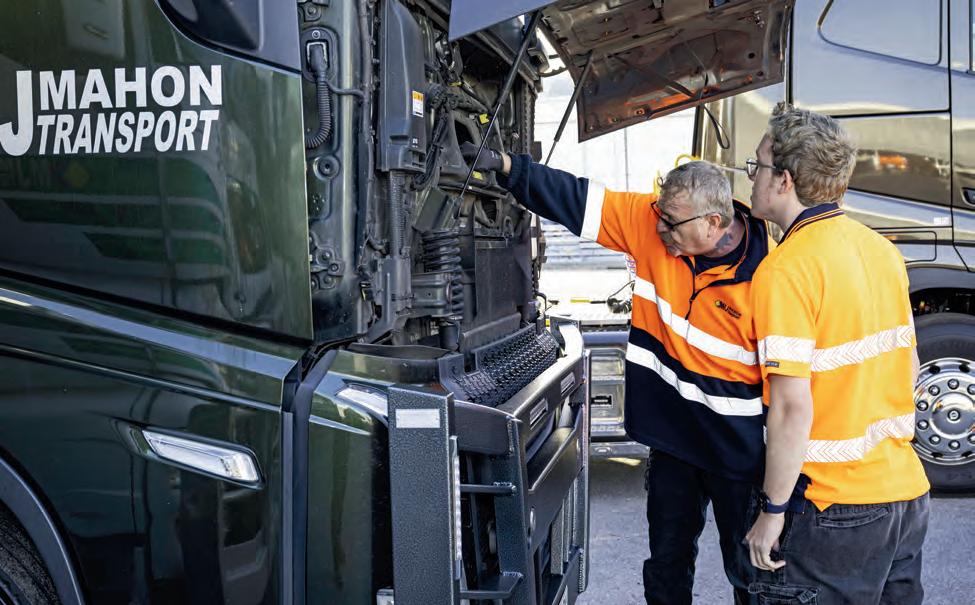

passenger seat many of us learnt the ropes. Barking like a dog to help unload a stock truck, hanging off a stiff bar falsely feeling we were loosening the nuts on a spider rim. Studying the secret Da Vinci formulas of the paper logbook to ensure we appeared legit. That used to be the apprentice system. Not anymore though, rules and regulations meant fewer and fewer opportunities for that style of apprenticeship were available. And before you know it, we’ve lost that avenue of hands-on education.
With an ever-widening gap in truck driver availability, we are in desperate need of a pathway into truck driving. An official apprenticeship. Jump on any of the employment websites, search up apprenticeships and you will get a list longer than my ummm – let’s just say a long list. You will not find any truck driving apprenticeships though.
If you went searching for truck driver training, you will have success with courses like the government approved Certificate III in Driving Operations, which has modules covering the likes of vehicle operation, workplace safety, fatigue management, route planning and load handling. All vitally significant areas. Courses like this are run by several different Registered Training Offices and do great work. Unlike training courses for electricians, or plumbers, they don’t work hand in hand with a practical side of an apprenticeship and that is vital in our industry.
Hence upon arriving at MJ Mahon’s depot to interview Michael Mahon about his new Volvo and 25-year celebration, I quickly put that on hold and bailed him up about young Aiden, who at that stage was outside checking wheel nuts with one of the old hands. While Michael’s pedigree will be forensically told in a future feature, it is worth noting a couple of important aspects, for they have played a major role in why we are here. Michael is an extremely passionate man when it comes to transport and particularly transport workers. He has grown his business on the back of honesty, hard work and solid

relationships. His desire to improve our industry has seen him climb the ranks of the Queensland Trucking Association, and he now sits in the top seat. It is from within this role that the idea of implanting his own apprentice system germinated.
“Taking on the role at the QTA really gave me a good understanding of what we can do and what’s out there in terms of apprenticeship options. They are heavily involved in the system with Saltera,” Michael says, referring to Saltera Training Group, the company involved in the Cert III in Driving Operations aspect.
“Saltera administers all the paperwork side of things, the modules and signing Aiden off on that. But we wanted to build something within our company that would work alongside that. I had a vision of how I wanted it to work and anointed our HR manager, Fraser McKechnie, to help get it up and running.”
With his passion for the industry and with his QTA role, Michael is in a unique position to have a holistic overview of the recruitment issues faced in our industry. It is not cheap getting training and licenses, especially if you are doing it out of your own back pocket. Unlike the apprentice options listed before, there is no government funding to help you get your MC license, to build your on-road experience. With so many companies doing it tough these days it is also difficult for guys trying to gain the right experience and log the hours. This is where Michael wanted to use his success and his business to give some new recruits an opportunity.
“We are a unique business; we are predominantly a DC operation. So, we don’t have a major depot, so to speak,” he admits.
“When we first started mapping this out, we had to look at ways to mitigate the costs of this as well. It’s not about the money, but Aiden isn’t on apprentice wages either. Plus, with the expenses of getting his licenses, we needed a way to offset all that a little, so it is a viable plan.”
Keep in mind the Cert III in Driving Operations aims to get people from their P plates up to an HR or HC license, while Michael wanted a training platform that would take capable drivers all the way up to their HC and MC – the two main licenses required at the MJ Mahon fleet.
“What we did was buy a ute and fit it out with an AdBlue tank.
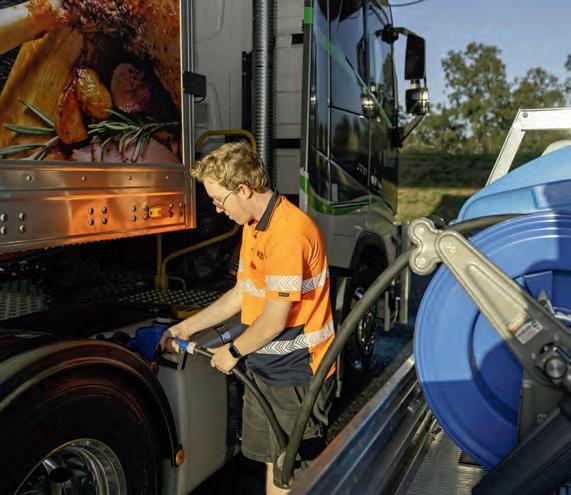
Part of Aiden’s job is to load the ute and then go around to the different DCs and fill all our trucks up,” Michael says.
“When he is at each truck he gets to do pre-starts, check airlines, lights, tyres, all the things that drivers do in their dayto-day job. As well as teaching him good practices, it aids us, as if there are any issues on the trucks, they get spotted before some of the drivers even start their shifts, so it saves us downtime. Plus, because he loads at our Rocklea depot and services the trucks throughout Brisbane, it is giving him great practice with traffic and time management.”
All of this started under the watchful eye of other MJ Mahon employees, and as Aiden’s skills and confidence grew, he was set his daily tasks and sent off to do his regular rounds by himself. When he is back in the yard he is assisting with office operations, maintenance and cleaning of the trucks and all the other finer details that make up the art of a truck driver.
“The idea is he would be with us through to his HC or MC, with a guarantee of work when he completes his Saltera training. We have a few HR trucks we use for local deliveries and as soon as
Opposite top, L to R: Another part of the apprentice program allows Aiden to experience and understand the background of the business as well, seeing how all the operations work, including in the office; 24-year-old Aiden is the proud recipient of the inaugural Mahon Apprentice program and he couldn’t be happier. Standing with his current work vehicle, in the shadow of his future work vehicle
Opposite below: What has been great about the introduction of the apprentice system to MJ Mahon is how the seasoned drivers have taken to it as well. Aiden is still a while away from the semis, yet is always keen to be taught about preparing and maintaining them from the drivers
Above left: One of the main regular roles for Aiden is getting around Mahon’s massive fleet and ensuring the AdBlue is topped up and the trucks are ready to roll
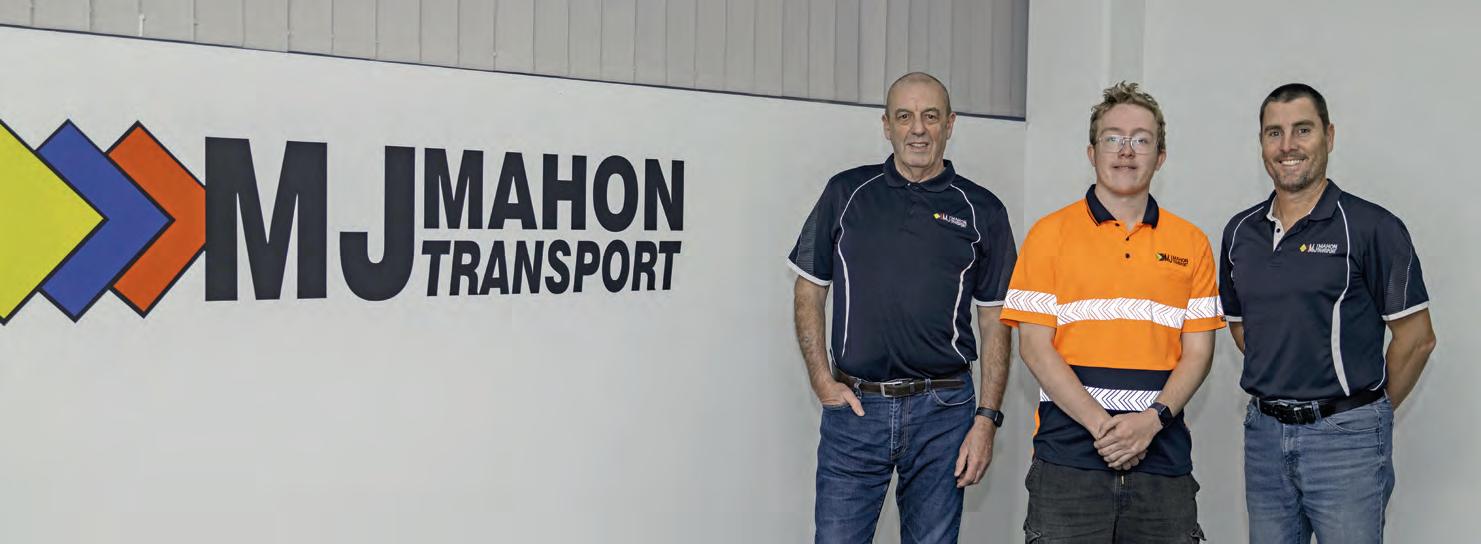
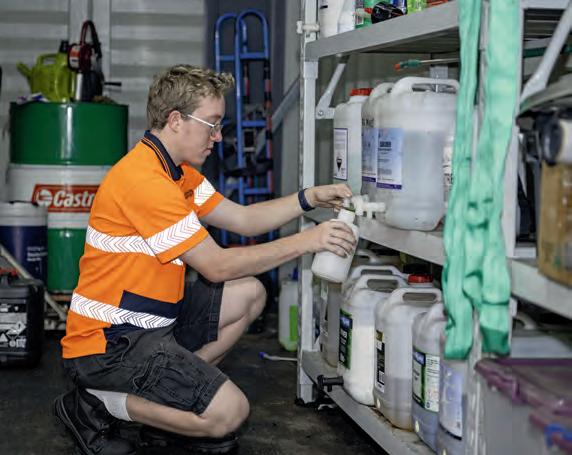
he’s ready for his HR we will send him off to an RTO and put him through that,” Michael says.
“We are still working on how this will all roll along. It’s a learning curve. We are already looking at readvertising to get another apprentice underway. Aiden is doing really well; in fact, we are even looking at getting another ute with a fridge van so we can even start him doing deliveries and working with customers.”
It is a massive expense for the company itself – wages, licenses and the time involved do not make it simple, but that is something Michael is well aware of and believes is outweighed by the positives.
“Yes it’s not cheap, but in the end we are giving a young bloke a go and training them up the right way. They get to earn good money and learn how to do the job safely and with great support,” he says.
As for young Aiden himself, the experience so far has lived up to the ideals he was chasing. The MJ Mahon apprenticeship has
“Yes it’s not cheap, but in the end we are giving a young bloke a go and training them up the right way. They get to earn good money and learn how to do the job safely and with great support.”
been the golden ticket the 24-year old had been looking for.
“My grandad drove interstate from the ‘60s up until the early 2000s and he used to tell me all the stories,” Aiden recalls.
Top: Aiden is extremely proud and appreciative of the opportunity he is getting. He’s seen here with two players instrumental in the program – MJ Mahon HR manager Fraser McKechnie and MJ Mahon business manager Adam McDonald
Above: Another aspect of learning to love trucking that appeals to Aiden is when truck washing time comes around with the wellmaintained MJ Mahon fleet
Below: The apprentice program is designed to take those on their green Ps all the way to HC or MC. Having a variety of vehicles in the MJ Mahon fleet means that’s entirely feasible

“So I always wanted to do what he did. I loved hearing those stories. I tried to get into trucks but it’s so expensive to do on your own. Before this I had a job stacking parcels at Border Express hoping to get the chance to move into the trucks, but that didn’t work.”
Thankfully, young Aiden’s constant Seek scrolling landed him the opportunity to apply for MJ Mahon’s first apprenticeship rollout.
“I found the ad on Seek and thought this is amazing, I hadn’t seen anything like this. So, I applied, I had to do a cover letter and resume. Then I had three interviews. The first was online with Fraser (Fraser McKechnie, MJ Mahon’s head of HR and the man behind setting up the enrolment process and criteria) then a face-to-face with Adam McDonald (business manager) and Adam Colley (transport manager) and then the third one was with Michael.”
The young man impressed the team with his passion and approach, and Aiden was stoked to not just be the first apprentice on MJ Mahon’s books, but more importantly for him, the door had finally been opened to follow his grandfather’s tyre tracks.
It is still very early days in the process, both in establishing and running the apprentice program, but Michael is more than happy with how things are looking so far.
“We are very lucky to have such a great team here, all focused on making this work. Our customers have been great as well. We explained what we were planning on doing beforehand and they have all gotten behind it and wanted to be involved where they can,” Michael says.
“Aiden has been great, and he is doing a fantastic job so far. The Saltera Training Group will come onsite to conduct their modules, and we will keep offering Aiden opportunities as he learns.”
It may not be the same apprentice regime many of us grew up with, I’m pretty sure Aiden won’t be napping in the passenger seat or watching someone retie all the ropes he was adamant he had tied securely. He will, however, be getting hands-on experience, responsibility and mentorship, and all while making some good coin and having fun. It seems like the perfect way to get into the transport game.
Now time for me to go back and get the story on the 780hp FH Volvo with the 25-year anniversary decorations done.








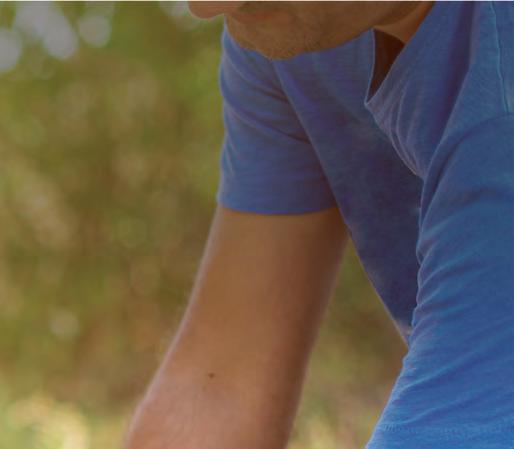




As the inaugural winner of IVECO’s Master Technician competition, Justin Abood’s two-decade long trucking career to date continues to flourish
When IVECO Australia announced it would be launching its inaugural national Master Technician competition, Justin Abood knew it was a fine opportunity to show his skills.
Having been in the transport industry for two decades, Justin was raring to put his experience to the test in the nationwide competition. The timing proved fruitful as the popular foreman went on to take top honours in IVECO’s first Master Technician competition.
“I was speaking to the area service manager from IVECO asking if they’d ever run a Master Technician competition, and it was exciting when I got told they’d run one this year,” Justin told OwnerDriver
“I was quick to express my interest in it when IVECO started advertising the competition this year.”
While it may have been the first time IVECO ran the competition internally, the Master Technician program is nothing Justin didn’t already know about. At the young age of 35, trucking has been in his blood for 20 years after first getting into the industry at age 15.
Following in his family footsteps, Justin’s collection of intricate truck knowledge was first honed while watching his father fix his truck back in the day.
“I got an apprenticeship at age 15 and began working in the industry while in my teens,” Justin says.
“After getting that done in three years, I went off to work at a variety of truck companies. In the time since, I’ve worked on a range of European,
American and Japanese truck brands.”
In just two decades, Justin has packed plenty of trucking experience into his flourishing career. After these constructive beginnings, he then went on to work for at a dealership in Fairfield, Sydney for two years before becoming a mechanic for the best part of six years. In that time, he became a fleet manager for the first time before he decided to take on new challenges in running the IVECO Sydney site.
“The first three months here I spent working on the floor, getting to learn the product,” he says.
“At the beginning of 2023, I took over as workshop foreman at the Sydney site.”
As I manage to catch Justin on the phone for a quick chat about his career and the Master Technician competition, the foreman is in the midst of organising his workshop. From discussing parts to directing traffic in the site, Justin is always on, passionately helping his fellow workers shine for IVECO.
While he has experience working with an array of truck brands, Justin’s preferred make is IVECO due to the constant opportunities it provides him to continue growing.
“I love working with IVECOs,” he says. “I really enjoy the challenge and they’re great trucks. They’ve come such a long way in the 20 years I’ve spent working in the industry to date.”
Enough about Justin’s background and onto the maiden competition that IVECO Australia has run across more than 60 dealerships in its network this year. The Master Technician tournament is open

to all IVECO technicians, ranging from up-andcoming apprentices to experienced trade-qualified professionals.
The competition was held over three rounds of 25 questions conducted through IVECO’s online Web Academy, with participants negotiating 75 challenging questions in total that ranged from all aspects of servicing and maintaining the IVECO range to fault diagnosis.
In total, 50 technicians competed in the inaugural IVECO event, with Justin taking home the top prize for his expert knowledge across the three rounds of quizzes. Black Truck Sales’ senior technician and electrician Jonothan Elias ended as runner up, while the podium was completed by Nathan Wigger, IVECO workshop foreman at Melbourne’s Prestige Truck Centre.
When word first went around that IVECO would be conducting the inaugural championship, Justin was quick to enrol, while also encouraging members of his team to do the same.
“I made sure all the boys in the yard got involved too, I encouraged them all to have a go,” he says.
“Throughout the three quizzes, there were some easy ones and some were really challenging. I loved it as it stimulated my brain and allowed me to use my knowledge.”
A lot of this knowledge came from Justin’s intriguing career to date, as well as the information he had gleaned from the past three years spent working intimately with IVECO trucks. He was also to benefit from completing the IVECO Master Technician course recently, enhancing his experience with the popular product.
On the first quiz, Justin recalls getting 100 per cent, before he got only the one question wrong on the second test. Despite these stellar results, he was still anxious heading into the final quiz that he wouldn’t take home the top prize.
“Another person got 100 per cent on the second test, so it meant we were level going into the final quiz,” he says.
“It made the third test nail-biting as either one of us could’ve won it, but I was lucky to pip the field by a couple of questions – I only got two wrong.”
Justin remembers the day he was crowned winner, with IVECO team members surprising him with a plaque delivered to his IVECO Sydney workshop. He recalls being “taken aback and excited” to see everyone’s reactions.
“I want them to look up to me and strive to be better than me and take over my job, so this was a great way of doing that,” he says.
“I like to lead by example. If I can do it, they all can. Just because someone is an apprentice, it doesn’t mean I know better than them. Even though I’m the foreman, I’m happy to clean the floor with everyone, as I’m no better than anyone else I work with.”
Other than this wonderful attitude, Justin also has a wealth of knowledge that proved handy when it came to the competition. He says his thirst to always improve himself is a welcome trait that helped him take home the title.
“It came down to experience, but as a person I also strive to be the best at all times and I love challenging myself,” he says.
“If I’m not challenged, I don’t enjoy my work. I’m always challenging myself to learn and know more.”
For his victory, Justin received a plaque and trophy, as well as a future trip and cash prize. From
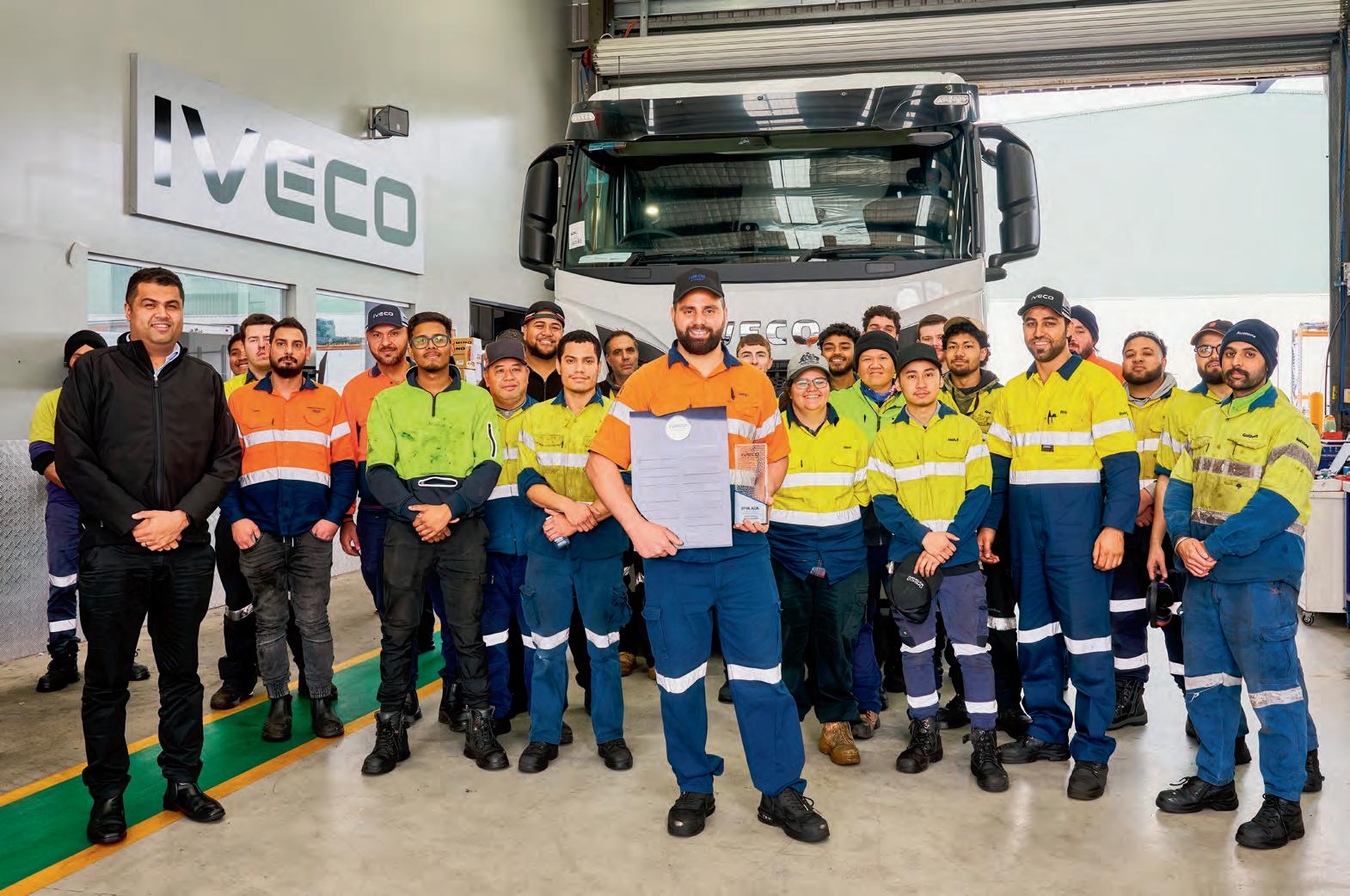
“I LIKE TO LEAD BY EXAMPLE. IF I CAN DO IT, THEY ALL CAN. JUST BECAUSE SOMEONE IS AN APPRENTICE, IT DOESN’T MEAN I KNOW BETTER THAN THEM.”
IVECO’s perspective, IVECO manager, customer and product support, Jason Mobberley says he’s excited at the participation rate of the inaugural tournament and is looking forward to growing the event in the years ahead.
“Interest in the National Master Technician Tournament from across the network was extremely positive, leading to a strong participation rate and three very enthusiastic winners,” Mobberley says.
“The tournament provided a fantastic means by which technicians could test their knowledge against counterparts from across the country in a friendly yet competitive environment, while further honing their skills, which ultimately is a positive for IVECO owners.
“On behalf of IVECO, I extend a warm congratulations to our winners and thank all participants.”
Justin has lofty goals after taking home the inaugural title. He has high ambitions to move up in the company, and he also wants his Sydney team to win the IVECO Dealer of the Year award in the near future.
“I also want all of the boys to get their Master Technician position, so I’m pushing them to do that,” he says.
“I want all of them performing at their peak and enjoying what they do each day. I love this competition and hope next year they run it again, maybe with a face-to-face practical element included.”
TOP: The IVECO Sydney team gathers in support of their Master Technician
OPPOSITE: IVECO Sydney’s workshop foreman Justin Abood is the inaugural winner of IVECO’s National Master Technician Tournament






































































































In early September, the north-west region’s largest heavy vehicle rest area opened thanks to investment from the Albanese and Minns Labor governments. The opening marks the completion of a three-year project to upgrade the Newell Highway between Narrabri and Moree, with all sections of the highway now open to traffic.
The jointly funded Newell Highway Heavy Duty Pavement Upgrade was made possible with a $205.73 million investment by the Albanese government and a $55.44 million Minns government contribution. The project spanned more than 20 kilometres along this important regional freight route. The upgrades have included intersection improvements, widened road shoulders and five new overtaking lanes, creating a safer and more efficient journey for all drivers.
“As a former truck driver and current Chair of the Albanese government’s Heavy Vehicle Rest Area Steering Committee, I am very proud to see this investment from both the federal and NSW government,” Sterle says.
“The sheer size of this project, including how many drivers it will accommodate, should serve as a blueprint for large scale heavy vehicle rest stops in other regional areas across Australia.
“I commend both the Albanese and Minns’ governments on their vision for this project and their commitment to improving conditions for our essential truckies.”
These upgrades have been delivered across four priority sections:
• Eight kilometres of pavement upgrades south of Moree as well as a new culvert
at Clarks Gully to improve drainage, and upgrades to the Burrington Road, Tapscott Road and Wallanol Road intersections which were completed in December 2024.
• 4.4 kilometres of pavement upgrades around Bellata, plus upgrades to Temi Road, North Street, Wilga Street and Oak Street intersections, completed in February 2025.
• 5.6 kilometres of pavement upgrades around Edgeroi as well as upgrades to the Smithfield Lane Intersection, completed in June 2025.
• 2.6 kilometres of pavement upgrades north of Narrabri in addition to a new culvert at the Murrumbilla Lane Intersection, completed in August. The pavement upgrades have involved stripping the road back to base level before repairing, reconstructing and resurfacing the road in order to make it smoother, safer and more resilient. The final completed element of the over $261.17 million project is the massive Spring Creek Rest Area. The new rest area provides
SENATOR GLENN STERLE is a current Labor Senator for Western Australia in Australia’s Federal Parliament. He is also the Duty Labor Senator for the Federal Electorates of Durack and O’Connor and has experience as a transport operator
short and long-term heavy vehicle parking for up to 18 vehicles, as well as separate parking for light vehicles and light vehicles with caravans or trailers in tow.
The area also provides access to amenities including two flushable toilets with disabled access, picnic shelters and bins. The whole area is illuminated at night with solar lighting to increase safety and more than 500 trees have been planted in the vicinity of the rest area to provide shade.
“This section of the Newell Highway is an essential freight corridor and the Albanese government’s $205 million investment will make the journey safer for truck drivers, locals and people passing through on long road trips,” federal transport minister Catherine King says.
“Thank you to all road users for their patience as this massive project was undertaken and also to the 970 workers involved in completing the upgrades. The new Spring Creek Rest Area will help truckies to better manage their fatigue and avoid incidents on the road, ultimately saving lives.”
NSW roads minister Jenny Aitchison called the upgrade an “incredible achievement”.
“The jointly funded program has reached this milestone despite crews needing to battle extreme weather, floods and bushfires,” she says.
“A highlight of the Newell Highway Heavy Duty Pavement Upgrade program has been a focus on employing local staff, providing not only a significant boost to local infrastructure but also a massive injection to the local economy.
“The NSW government values the safe, sustainable and productive movement of freight throughout the vastness of the state and acknowledges the difficulties heavy vehicle drivers face when finding a safe and reliable area to rest, park, and access services.”
“This section of the Newell Highway is an essential freight corridor and the Albanese government’s $205 million investment will make the journey safer for truck drivers, locals and people passing through on long road trips.”


The popular packaging and logistics brand is undergoing a major fleet renewal, and MercedesBenz Trucks has been critical to this technology upgrade
For nearly 80 years, Visy has been an institution in Australian business. Founded in 1948 in Shepparton, Victoria, when Leon Pratt wanted to replace heavy wooden crates with lighter cardboard boxes to transport apples, the Australian family-owned packaging and recycling leader remains at the forefront of innovation.
It was only in 2006 that the Pratt family created an integrated, end-to-end internal supply chain for Visy when it started Visy Logistics. As the key decision that formed a ‘closed loop’ model for the packaging giant, Visy Logistics has continued to evolve as a domestic and international distribution provider.
This was recently taken to the next level when global heavy vehicle OEM Daimler Truck supplied Visy Logistics with 30 new Mercedes-Benz Actros models to upgrade its local fleet.
“Safety, sustainability and driver comfort were key for our new fleet,” Visy Logistics Australia country manager Wayne Boxshall says.
“These trucks will underpin our fast growing operations across Australia as we further support our food, beverage and industrial customers.”
The 30 trucks form the first part of Visy’s major truck fleet refurbishment plan. The globally recognised logistics operator is aiming to continue expanding its digitally enabled supply chain solutions.
Across Australia, Visy Logistics operates at 60 sites, offering services in the metropolitan warehousing and distribution, linehaul, intermodal (container transport), bulk warehousing and haulage, and global forwarding sectors. These first 30 Actros trucks, which are already on the road, have allowed Visy Logistics to continue upgrading its fleet.
It plans to add another 60 vehicles in future as part of the renewal program, with Visy Logistics selecting a range of 13-litre and 16-litre Actros trucks to kickstart the first stage of its fleet modernisation.
While Boxshall says Daimler Truck Australia Pacific is the ideal partner for the refresh program, Daimler Truck Australia Pacific

President and CEO Daniel Whitehead reiterated the shared appreciation from the supplier’s end, saying Mercedes-Benz trucks suit Visy Logistics perfectly.
“As a global leader, Visy Logistics is a remarkable ambassador for Mercedes-Benz Trucks,” he says.
“We are immensely proud that Visy Logistics has partnered with Daimler Truck for this important fleet modernisation.”
A key feature of these latest trucks is the safety systems that underpin them. The Mercedes-Benz Actros feature an Advanced Emergency Braking System called Active Brake Assist, which can automatically carry out full brake application in response to stationary and moving objects and even brake in response to moving or halted pedestrians.
It is also available with Predictive Powertrain Control, which uses topographic map data and GPS to help the truck anticipate terrain and select the optimum shift pattern and engine response for maximum fuel economy. It can even coast in neutral when safe to do so for ultimate efficiency.
The 13-litre and 16-litre Actros engines have been exclusively using Euro 6 technology in Australia since 2016. To meet Euro 6 emission standards, truck engines must produce 70 per cent less hydrocarbons and 77 to 80 per cent less oxides of nitrogen (NOx), as well as 50 to 66 per cent smaller particulates.
While some manufacturers are just now introducing Euro 6, Daimler Truck, including Mercedes-Benz, Freightliner and Fuso, have notched up a combined three billion customer kilometres with Euro 6 (or equivalent) drivetrains on Australian roads during the last eight years.
Daimler Truck Australia Pacific Vice President of Sales and Marketing Andrew Assimo says the Actros is well suited to the role.
“The Actros is known for its Euro 6 leadership and its legendary fuel efficiency, so it really is the perfect fit for Visy Logistics,” he says.
“Visy Logistics has always had a firm focus on safety, which ties in with the safety leadership position of Mercedes-Benz Trucks.”
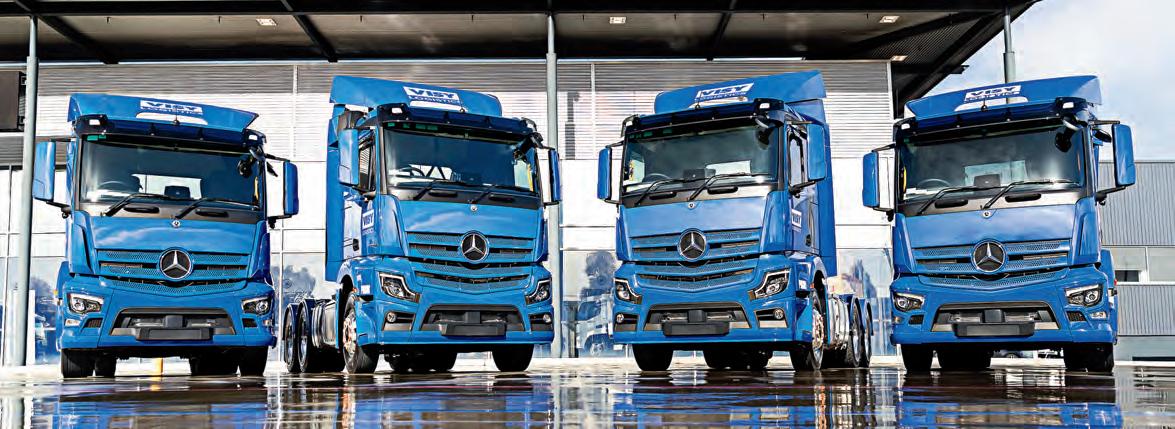

Warren Aitken made his maiden trip up to North Queensland to take in the emerging charity truck show that is the Mackay Konvoy 4 Kids
Cards on the table here folks, I’m not a Mackay fan. It is nothing personal about the heavy haulage carting capital of Queensland, but in order to get to Mackay you need to endure the iconic Bruce Highway, and the thousand kilometres from my house to Mackay can feel like the longest week of your life.
There are unsubstantiated rumours the architects of the Bruce Highway were also responsible for the Iron Maiden, the Pear of Anguish and the formation of the Spice Girls – if you don’t know how painful those tools of torture are, then drive the Bruce and you’ll get the gist.
Sadly my reluctance to endure the frustration of endless grey nomads and countless Weet-Bix qualified drivers has kept me from getting up to Mackay and experiencing their biggest social trucking event of the year, the annual Mackay Konvoy 4 Kids, until now. And yes, it is spelt with a K.
Last year’s 2024 Mackay Konvoy for Kids was the biggest ever, cracking 200 trucks for the first time. The photos and stories that flowed online were enough to entice me up this year to check out this
fantastic fundraising event is. It did help that I used the big tin taxi to get to Mackay, thus keeping my patience and frustration levels safe.
First thing I did upon arrival in Mackay was track down Johanna Wood, one of the coordinators of the Konvoy.
“This is our 16th year organising the Konvoy 4 Kids Mackay,” she confesses.
“There’s me and my Mum and Dad, Ashley and Madonna Stevens. Plus, we have a team of about 10 of us that help out doing things like getting sponsorships, getting donations for sausage sizzles and all that kind of stuff. We have a great team on the day helping look after our markets, setting them up and keeping it all working.
“We raise money for Variety, the children’s charity. Every year we have some of our convoy crew that go on the Variety Bash. To do the Variety Bash each year, you need to fundraise a certain amount of money, and this is our main event that we do to fundraise for it.”
Variety, the charity, supports children and their families who are facing challenges like sickness, disadvantages and disabilities. Its work enables kids to get out and about in their communities,
assists them with mobility and helps the kids and their families achieve independence and assistance within their community. This is all done with grants for services and equipment, as well as scholarships and specialised programs. While Variety has multiple fundraising ventures, its flagship event is the annual Variety Bash, and that’s where the Konvoy 4 Kids Mackay fits in.
The Variety Bash is an eight to 10-day road trip with entrants piloting very old, very well decorated bush bashers. The Bash typically includes a mix of on-road and off-road adventures through some of Australia’s most iconic and remote areas. The teams make stops at schools and communities along the way to deliver donations and touch base with a lot of the children that benefit from Variety’s many programs.
The current Konvoy 4 Kids Mackay team have been supporting Variety for the last 16 years and run two very colourful kid friendly creations in the Bash, a 1966 HR Holden Wagon, dubbed Princess Barbie, and a Peter Pan themed Valient station wagon with a custom-built pirate ship attached.
Trying to find a segue for the motivation behind Johanna, Ashley and Madonna’s Variety fundraising
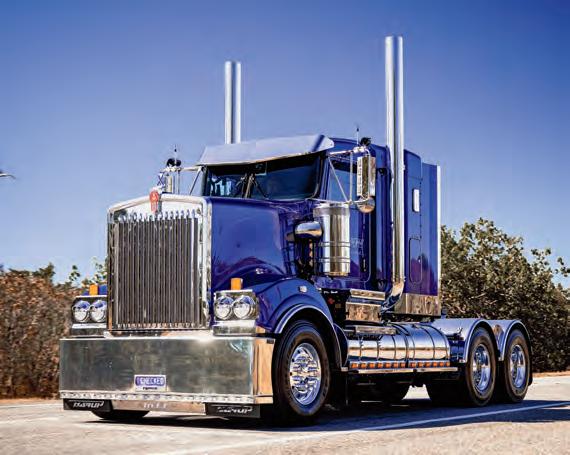

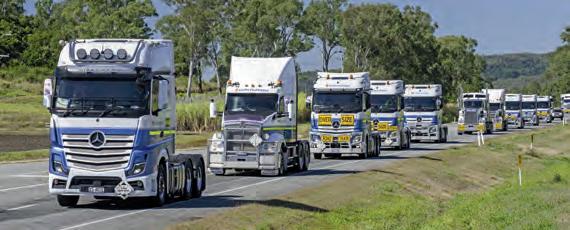
ideals to one of North Queensland’s largest trucking events is a little thin. Truth is, Johanna grew up with her parents’ main vocation revolving around cane farming and the horse racing industry. There was a lot of machinery, sure, but trucking hasn’t been a mainstay of the family. It is part of the family now though.
“My Dad does drive trucks for a living now, and so does my uncle,” Johanna says.
“We got behind this because someone before us had done this, I can’t remember what they raised funds for but when they stopped, we saw it was a hugely popular event and we decided to take over it. We do know a lot of trucking people, so we knew we’d find participants to help bring it back to life.”
That was 16 years ago, and the Konvoy 4 Kids Mackay team have done nothing but grow the popularity of the event every year. As I mentioned, they cracked 200 last year and this year they set another all-time record, officially running 234 vehicles.
I reckon that’s about all the behind-the-scenes information I need to summarise, let me put on my judgemental podcaster


Opposite top: There was a constant cavalry of cool cruising into the Sarina Showgrounds early Sunday morning
Clockwise from top left: One of my favourites for the day was the impressive flat roof T909 of Tobin Transport; The Airlie Beach Hotel stunning cabover drew a lot of attention across the day; The crowds flocked to the Mackay Showgrounds to greet the trucks as they came in; One of the first teams through the gates to line up were the Cleanaway crew of Kenny Nichols, Dee McDonald and Janece Windsor; I bailed Brad Coatman and nine-year-old Liam up for a quick snap in front of one of the stunning Emerald Carrying Co T610s; The Konvoy heads out of Sarina on its way to Mackay for another year, raising funds for kids that need it; Centurion has a large presence in the Mackay area and made sure its presence was felt at this year’s convoy; One of the older rigs in the parade was this 1965 J5 Bedford, with Andrew Zammit behind the wheel and Andrew and Ryan riding along; The convoy is all about the kids, and Variety Fundraising. But there’s always room for a few prizes and the Mackay trophies are definitely something different

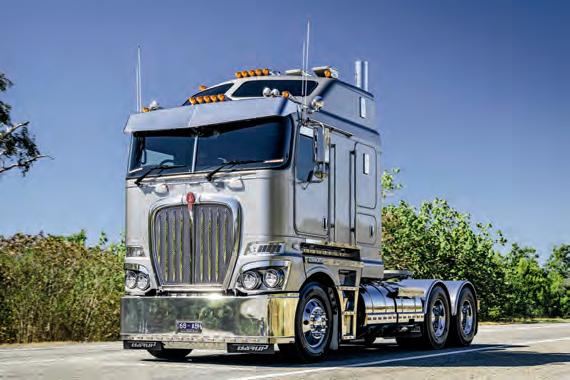
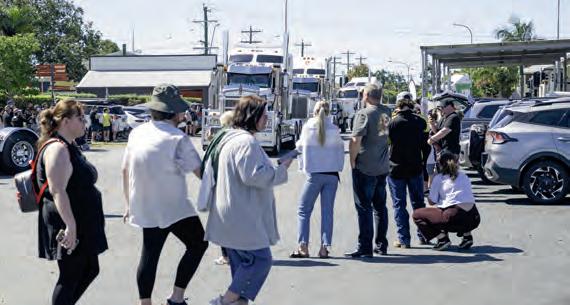

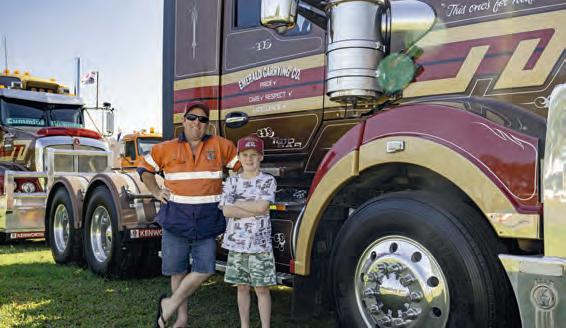







hat and get into an in-depth review as I broke my ‘Konvoy 4 Kids Mackay’ cherry.
When it comes to chasing the ‘As Advertised’ response to an event, the Mackay Konvoy 4 Kids nails itself perfectly. The whole event is all about the kids. It begins out at the Sarina showgrounds, about 35 kilometres from the Mackay Showgrounds. Trucks start rolling in from around 7am – with every truck came a family happy to finish off some final detailing. There is an unwritten rule that family events like this require an onsite sausage sizzle and, judging by the scores of young ones I saw with tomato sauced extended smiles, they were doing a roaring trade. What added to the enjoyment for the kids, and many of us adults as well, was the variety of vehicles attending the event. Mackay is a hub of oversize and mining activity and plenty of creative crane setups were lining up to enjoy this year’s event. Of course there was also a gathering of emergency service vehicles, with lights and sirens to amuse the kids as well.
By 9.30am, over 200 vehicles were lined up ready for departure and on the stroke of 10am the gates were opened, and the main road became a rolling exhibition. I did my best to keep jumping from spot to spot in order to capture a few different angles, although pulling up to park became difficult with the amount of locals already camped out. For the entire 35 kilometres there were kids of every age group waving and arm pumping like their lives depended on it and the truckies were only too happy to oblige, the harmonious horns of 200 vehicles filling the North Queensland cane fields with vibrations that are still echoing as I write this.
The great thing about the Mackay Konvoy route plan is that rather than send the miles long convoy up the main road of Mackay, they had the great idea to take a back street. I’ll pretend I support this decision as it allowed more local enthusiasts to line the streets and wave the trucks in, truth is I support it because it meant after getting a heap of photos, I was able to jump the convoy and get into the Mackay Showgrounds in time to capture the majority of the big rigs rolling in.
Full credit once again to the Konvoy 4 Kids team and their parking plans. It’s never easy parking a massive amount of trucks, but throw in the entire JJ Richards rubbish truck fleet, as well as a collection of cranes capable of lifting everything from a backpack to a building, and you need to be a Tetris grandmaster to succeed.
Once everyone was parked up, I took the time to wander around the grounds and really appreciate how much the day is made for kids. A petting zoo, free rides on the inflatables and machines, not the pets. There was face painting, colouring corners, all manner of arts and crafts and enough sugar packed edibles that the inflatable animals weren’t the only things bouncing off the roof by the time they were trying to close the doors.
Unlike many of the shows we experience, prizes and awards are kind of secondary at this event. There are a few, 12 to be exact. Instead of manufacturers, awards were presented based on the trucks age, ie. pre-1980, 1981-1990, etc., as well as the likes of best prime mover, best rigid, best large and small fleet and then a ‘best overall’ which went to Bradley Wren from Wren Heavy Haulage. The winners all deserved their moment in the sun, however it seems the collective view was ‘we are just here to help the kids’ and that undercurrent of emotion was evident throughout the day, from kids getting to sit in the police car and turn on those sirens that would normally send shivers down our spine, to well worn drivers stepping aside and letting kids younger than their work overalls climb on their massive cranes with grins bigger than the booms.
To conclude, it was a pretty good show, if I’m honest. The quality was there and the effort to prepare the trucks was evident. The variety of vehicles was also a big plus – your usual Kenworth dominance for sure, but there was a mix of Macks, Western Stars, Mercedes, Volvos, UDs and nearly every other imaginable breed turned up. Having the huge covered arena at the Mackay Showgrounds mitigated the sunburn I normally acquire when I get too ensconced in trucks to remember to slip, slop and slap. And it’s worth noting the catering extended well past the sausage sizzles as well. The waffle joint and the Rib Crib – definite Michelin Star options.
By the time I boarded the plane on Sunday night I was full of photos, sun-stroked out and extremely pleased I’d made the effort to get up and experience my first ever Konvoy 4 Kids Mackay. I don’t have the fundraising figure yet, but with the support this small-town show gets, I’m sure it will be impressive. Bring on 2026, heck, I may even consider tolerating the Broken Bruce next year to get a truck up there as well.












Healthy Heads discusses its new podcast that is speaking straight to truckies via a popular ambassador

Let’s face it; life on the road isn’t without its challenges. Long hours, time away from home, tight deadlines, limited food options and the constant pressure to stay on schedule despite traffic and weather conditions are all part of the job.
Whether you’re pulling a B-double across the Nullarbor or unloading pallets in the city at 3am, the transport game doesn’t leave much room for putting your feet up or having a proper chinwag about how you’re really going.
That’s where a new podcast called How Ya Travellin’? comes into play. It’s put together by Healthy Heads in Trucks & Sheds (Healthy Heads) and fronted by none other than Healthy Heads Ambassador Shane Jacobson, a bloke who knows how to keep it real.
How Ya Travellin’? isn’t about preaching or pushing a perfect version
of mental health. It’s down-to-earth, relatable and designed specifically for truckies, warehouse crews and those making the logistics machine hum behind the scenes.
Each episode features honest conversation, personal stories and practical tips that you can actually use. It’s about helping us handle the tough stuff, reducing the stigma around mental health and making sure no one’s left feeling like they’ve got to go it alone.
We all know someone who has faced challenges and many of us have experienced our own. The reality is that this line of work can place demands on both physical and mental wellbeing. Time away from home, irregular sleep, quick meals on the road and missing important moments with loved ones can all take their toll over time. But with the right tools and
open conversations, we can create meaningful support that makes a real difference.
The podcast features voices from across the industry; people who’ve walked the walk and aren’t afraid to talk about the good, the bad and the exhausting. There’s expert advice too, but it’s blended in with real stories that hit close to home.
There’s no sugar-coating. Just individuals working in our sector sharing what’s worked for them, what didn’t and how they got through the tougher times. Whether it’s dealing with stress, managing fatigue or finding ways to stay connected when your thousands of kilometres from home, there are tools and tips that you can apply in every episode.
One of the best things? You don’t have to sit still to listen. Tune in while you’re driving, waiting at a depot or even winding down at the end of the day. It’s available through the Healthy Heads App, or wherever you get your podcasts. The first eight episodes are already live, with season two set to drop later this year. So, there’s plenty to sink your teeth into.
Got a mate doing it tough? Flick them the link. Maybe it will help spark a conversation that wouldn’t have happened otherwise. You never know, one chat could make a huge difference. This podcast is part of a bigger push from Healthy Heads, a not-for-profit foundation focused on improving mental health and wellbeing across the transport and logistics sector. We’re working hard to make it easier for people in the industry to access support, have real conversations and look out for each other, without judgment or stigma.
The goal? A healthier, more connected industry where it’s ok to say, “Yeah, I’m not doing great,” and get some support. Because the old “just harden up” attitude isn’t cutting it anymore. Times have changed, and for the better. So next time you’re out on the road with some time to kill, why not give How Ya Travellin’? a go? It might make you laugh, might make you think and might make the miles go a little quicker. More importantly, it could help you, or someone you care about, keep on top of the mental load that comes with the job.
Search for How Ya Travellin’? on your podcast app or download the Healthy Heads App to start listening. And don’t keep it to yourself, share it around. Because we’re all in this industry together, and the more we look out for each other, the better off we’ll all be.


Icome to you this month with a cautionary tale about the importance of dotting your ‘i’s’ and crossing your ‘t’s’ when it comes to the Heavy Vehicle Work Diary.
There is currently a sting going on in Sydney where police are pulling over drivers for compliance checks, going over their logbooks with a fine-tooth comb and charging separate offences for every instance of non-compliance with the work diary rules.
What this is looking like is poor drivers who haven’t realised they’ve been making small administrative mistakes, copping 60 or so charges. They’re then looking down the barrel of maximum penalties up in the hundreds of thousands of dollars plus tens of thousands in court levies, for making
the same mistake on every page.
Now, we agree that the most important thing here is safety, and that the work diary rules need to be followed because they help keep everyone safe. But it is our view that this approach of throwing the book at drivers for small admin errors runs contrary to the goals of the NHVR and the HVNL, which are for enforcement agencies to work together with industry to educate rather than punish where possible. But the police unit conducting the sting doesn’t share our views, at least for now.
The kinds of mistakes we’re seeing repeated and leading to charges are:
1. Not filling in all the details at the top of each work diary page, like the vehicle rego number, hours scheme and time zone.



2. Not factoring the time taken to do the daily check (top right hand corner of a work diary page) into the start time for a day’s work on the table below.
3. Not giving the yellow copy of each page to the record keeper.
So my advice is that if you haven’t done a health check on your work diary recently, it could save you a lot of time and trouble if you take a look at it now and make sure you’re doing everything “by the book”.

You might consider doing a short course on the fatigue rules to keep your knowledge up to date, especially if you’re working alone. These courses are often run online and put you in touch with a convenor, who you can ask specific questions about your personal work routines, to make sure you’re doing it right. The NHVR is also a great resource for teaching drivers about the nuances of the work diary rules and it has a helpline you can call.
If you need advice about any part of the heavy vehicle work diary, or find yourself charged with breaching the rules, we at Ainsley Law would be happy to help.

















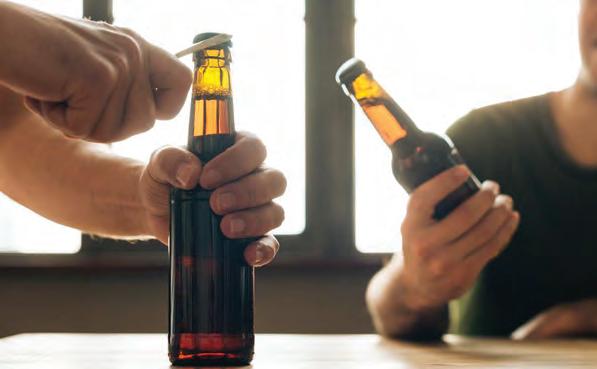





















































































NRFA vice president Craig Forsyth discusses the line between commentator and advocate in the truck industry and how the industry can use these voices to grow
In the world of transport, voices matter. Whether it is a seasoned driver sharing road tales over the UHF, a columnist dissecting industry trends or a passionate campaigner pushing for better conditions, the way we speak about transport shapes how it is understood and how it is changed.
But there is a subtle, often overlooked difference between those who comment and those who advocate. One observes and informs; the other pushes and persuades. In a time when the lines between journalism, opinion and activism are increasingly blurred, especially in niche industries like ours, it is worth asking, what role are you playing when you speak up? Are you a commentator, offering insight and analysis? Or are you an advocate, championing a cause? This column explores that divide, and why understanding it matters more than ever for the future of the transport industry.
A commentator is, at their core, an observer. They watch, listen and report. In the trucking world, that might mean analysing freight rates, breaking down new legislation or offering insights into the latest tech hitting the road. Commentators aim to inform, not persuade. Their job is to present the facts, add context and help the audience make sense of what is happening, without telling them what to think.
Think of the classic trucking columnist who lays out the week’s industry news with a steady hand and a clear voice. Or the radio host who interviews drivers about their experiences without pushing a particular agenda. These voices build trust by staying neutral, even when the topics are heated.
Being a commentator does not mean being emotionless, it means being fair. It is about giving your audience the tools to form their own opinions. In a time when outrage often gets more clicks than
CRAIG FORSYTH, a National Road Freighters Association board member, has clocked up 25 years in the road transport industry
objectivity, the commentator’s role is more important than ever. They are the ones who keep the conversation grounded.
An advocate does not just report the facts; they fight for change. In trucking, that might mean calling out unsafe working conditions, pushing for fairer pay or demanding better rest areas for interstate drivers. Advocates are driven by passion and purpose. They do not just want you to know what is happening, they want you to care and they want you to act. Where a commentator might highlight a new regulation, an advocate will argue why it is unfair or overdue. They will rally support, write petitions and speak directly to the powers that be. Their strength lies in their conviction and their ability to mobilise others around a cause.
Advocacy has deep roots in trucking. From union reps to grassroots campaigners, the industry has always had voices willing to stand up and speak out. And in today’s landscape of social media, those voices are louder but more diluted than ever.
But advocacy comes with responsibility. It requires honesty, clarity and a willingness to be held accountable. When done right, it can drive real progress. When done poorly, it can divide and mislead. The advocate’s challenge is to stay true to the cause, without losing sight of the truth.

In practice, the line between commentator and advocate is not always clear cut. Many voices in trucking media wear both hats, sometimes in the same sentence. A commentator might report on a new fatigue management policy, then pivot to questioning its fairness. An advocate might start with a passionate plea, then back it up with hard data and balanced analysis. The roles can overlap and that is not necessarily a bad thing. But when the line blurs too much, problems can arise. A commentator who slips into advocacy without declaring their stance risks losing credibility. An advocate who presents opinion as fact can mislead their audience. Transparency becomes key. Readers and listeners deserve to know whether they are being informed or persuaded, or both.
In trucking, where issues like safety, pay and regulation hit close to home, it is easy to get emotionally invested. That is human. But media voices have a responsibility to be clear about their intent. Are you helping your audience understand the issue or rallying them to take a side?
Navigating that balance is tricky, but essential. Because when the lines blur without care, trust is the first casualty.
In trucking, the distinction between commentator and advocate is not just academic, it is deeply practical. Drivers, operators and industry stakeholders rely on
media not only to stay informed, but to feel heard. Whether it is a magazine article, a podcast episode or a radio segment, the tone and intent behind the message can shape how the industry sees itself and how outsiders see it too. We must remain positive even when things are not so good.
Commentators in trucking play a vital role in keeping the community grounded. They report on fuel prices, regulatory changes and road safety updates with clarity and consistency. Their work helps drivers make informed decisions and stay ahead of the curve. But when those same voices shift into advocacy, calling out unfair treatment, pushing for reform or defending the dignity of life on the road, they tap into something deeper: the emotional core of the industry.
Media voices that understand the difference between commentary and advocacy, and know when to lean into each, can help strengthen that community. They can build trust, spark change and keep the wheels turning in more ways than one.
So, where do you stand? Are you a commentator, an advocate or a bit of both? In trucking, the answer is not always simple. But clarity matters. Knowing your intent helps shape your message, your tone and your relationship with your audience.
If your goal is to inform, lean into commentary. Focus on facts, context and balance. Build trust by staying neutral, even when the topic is controversial. If your goal is to inspire change, embrace advocacy, but be transparent about your position. Let your audience know where you stand and why.
Some of the most effective voices in trucking media manage to do both. They
“Drivers, operators and industry stakeholders rely on media not only to stay informed, but to feel heard. Whether it is a magazine article, a podcast episode or a radio segment, the tone and intent behind the message can shape how the industry sees itself and how outsiders see it too.”
report with precision and advocate with passion. But it takes discipline. Switching lanes without warning can confuse your audience or erode your credibility.
Ask yourself: What do I want my audience to feel, know or do after hearing me? That question can guide your approach. Whether you are writing for a magazine, speaking on radio or podcast or posting on social media, your voice carries weight. Use it wisely.
Take a moment to reflect on your own voice in the industry. Are you informing, persuading or both? Share your thoughts, stories or stance with us, because every voice in trucking matters, and yours could be the

one that drives the next big change. In the ever-evolving world of trucking, the voices that shape the conversation matter. Whether you are a commentator offering clarity or an advocate pushing for change, your role carries weight. Understanding the difference is not about picking sides, it is about being intentional with your message. The road ahead for the industry is full of challenges and opportunities, and how we talk about them will help determine where we go next. So, speak up, but speak with purpose. Because in trucking, every voice counts and yours might just be the one that drives the next big shift.

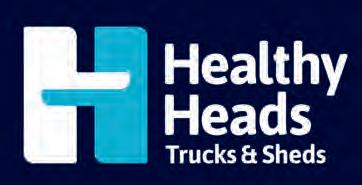

















October 12
Bentley, WA
Camp Quality’s Convoy Perth is gearing up for another year of supporting kids facing cancer and their families. Supporters are set to cheer on the Convoy, as it travels a 53km route around Perth City and Osborne Park, starting and finishing at Perth Hockey Stadium. The event venue will host a free Family Festival packed with entertainment and experiences catering for kids and adults alike, as well as a show ‘n’ shine.
October 14-15
Melbourne, VIC
The TMC Conference will bring together technical professionals, fleet and workshop managers, technical regulators, mechanics and service technicians, to discuss the latest in heavy vehicle maintenance and technical issues. This unique event brings the heavy vehicle community together over three interactive days at the Automotive Centre of Excellence in Melbourne.
November 1
Brisbane, QLD
The popular convoy is back on the first day of November this year, with the truck convoy to travel from Larapinta to the Redcliffe Showgrounds. When the trucks pull up, plenty of family fun will be on offer, with live entertainment, auctions, food stalls and plenty more on offer. Awards will be handed out on the day to recognise the convoy’s best trucks.
ULVERSTONE TRUCK SHOW
November 1
Ulverstone Showgrounds, Tasmania
The Tasmanian truck show is part of the Thank You Day Show, which serves as an important fundraising event to raise funds and awareness for Beyond Blue and New Mornings. This year’s edition of the show will feature a Kenworth focused show alongside the usual truck events, with prizes on offer.
MULLUMBIMBY TRUCK SHOW
November 8
Mullumbimby, NSW
Always on the second Saturday of November each year, the 2025 edition of the Mullumbimby Truck Show will once again take place alongside the town’s Agricultural Show. Including a truck parade through town, sideshow alley and plenty of family fun, horse and cattle events are also part of the line-up for this year.


HCVC DISPLAY DAY
November 9
Yarra Glen, VIC
Held at the Yarra Glen Racecourse, the Historic Commercial Vehicle Club is putting a variety of old Bedford trucks on display. Head to the racecourse to catch the array of vehicles as well as the usual kids activities, crash demonstrations and family fun that makes this a day to remember.
November 15 & 16
Maffra, VIC
Held at the Maffra Recreation Ground on Newry Road, this Victorian show is all about heritage trucks from the East Gippsland region. The show is open to trucks of any age in a bid to reflect the history of Australian transport. Free camping is provided for exhibitors, as is catering, while a range of remote control and model trucks will also be available alongside the usual family fun activities.
supply chain event is back
MegaTrans returns to Melbourne on September 16-17 2026, bringing together the biggest names in supply chain and logistics
Australia’s largest and most influential supply chain and logistics trade show is back.
Returning to Melbourne Convention and Exhibition Centre on September 16–17 2026, MegaTrans is ready to once again bring the entire industry together under one roof.
The 2024 iteration was the most successful event to date, with 4,737 visitors coming to experience the cutting-edge technologies and services shaping a more sustainable supply chain.
It was the largest crowd in the event’s history, setting the tone for an even more ambitious showcase in 2026.
Next year, the spotlight will once again be on The Sustainable Supply Chain of the Future. Leaders from freight, logistics, warehouse operations, transport technology, infrastructure, manufacturing and beyond will gather in Melbourne to exchange ideas, spark collaborations and see the latest innovations up close.
Why be part of it?
MegaTrans is the meeting place for decision-makers, buyers and industry leaders from across Australia and overseas. Exhibiting here means you can:
• Put your brand in front of the people shaping the industry’s future

• Make valuable new connections and strengthen existing ones
• Generate high-quality leads from a targeted audience
• Position yourself as an innovator and industry leader
What you’ll find at MegaTrans 2026
• A showcase of the most exciting products, services and technologies in the market
• A comprehensive education program designed to deliver practical advice and provoke thoughtful discussion
• Sustainable Warehouse Awards highlighting the country’s most sustainable warehouses
• Numerous networking opportunities to connect with the broader supply Chain
• A Careers Hub connecting emerging

Exhibition space is now open.
Companies that book early will have first pick of prime floor positions and receive exclusive promotional opportunities before the event.
“For two days, MegaTrans will become the beating heart of the supply chain industry. If you want to meet the people who matter, this is where you’ll find them,” Siobhan Rocks, General Manager of Prime Creative Media Events, says.
“We can’t wait to welcome exhibitors who want to be part of it.”
MegaTrans 2026 is where your next big customer, partner or breakthrough could be waiting.
Don’t miss out on booking a prime position. Secure your place today and join Australia’s most powerful supply chain event.




For October, here are some key events, album releases and notable birthdays that have shaped the Aussie rock music scene anniversaries and birthday for this month.
Here’s a look at October milestones in Aussie rock – birthdays and album anniversaries that helped shape the scene, from the Australian Truck Radio Rock’n’Roll Diary. These moments are great to feature on air, social media or in your radio programming. According to Australian Music History, here are key rock figures birthdays and passings in October:
OCTOBER 4
1971: Darren Middleton of Powderfinger was born on this day. The Australian musician is best known as lead guitarist and songwriter for Powderfinger, while he was also the lead singer/songwriter for Drag.
OCTOBER 5
1955: Wilbur Wilde, the Australian saxophonist, was born on this day. He went on to also become a TV personality and radio presenter after rising to prominence with the bands Ol’ 55 and Jo Jo Zep & The Falcons, but he also went on to become popular for his work on show Hey Hey It’s Saturday.
OCTOBER 6
1978: Known as the ‘Wild One’ of Aussie rock, Johnny O’Keefe passed on this day. His career began in the early 1950s and he became a pioneer of Aussie rock music for his core hits.
OCTOBER 7
1961: Brian Mannix, the Australian rock music singer and actor, has many talents. He may be best known as the lead singer of 1980s band Uncanny X-Men, but his face has become well-known through regular slots on television quiz show Spicks and Specks.
OCTOBER 10
1991: We’re getting younger with Gabriella Cilmi, Australian pop singer and songwriter. Known for her distinctive raspy singing voice, Cilmi achieved international success with the release of her 2008 album ‘Lessons to Be Learned’.
OCTOBER 13
1996: Former Australian Crawl lead and rhythm guitarist Brad Robinson passed on this day. He also had a later career as a musician and sports personality manager.
OCTOBER 15
1982: Paulini Curuenavuli, known professionally as Paulini, was born on this day. The Fijian-Australian singer, songwriter and musical theatre actress was born in Suva before moving to Sydney with her family at age four. Her rise to fame came when she finished fourth on the first season of Australian Idol.
OCTOBER 20
1971: Dannii Minogue may have originally been the sister of Kylie, but her work as a singer, TV personality and actress has made her popular in her own right. After first starring on Young Talent Time, Dannii also featured on Home and Away and was nominated for two Logie Awards.
OCTOBER 24
1979: This marks the birth of Ben Gillies, best known as the drummer of Australian rock band Silverchair from 1992 until the band’s hiatus in 2011.
OCTOBER 25
1959: On this day, an Australian singing icon was born in Chrissy Amphlett. Chrissy was best known as the frontwoman of the Divinyls, where she rose to fame for her brash and overtly sexual persona, as well as her humorous lyrics and wonderful performance.
SIMON SMITH is the manager and producer of Australian Truck Radio. He has been in the radio game for 44 years and has been customising playlists for truckies for at least 20 of those. For great tunes 24 hours a day, 7 days a week, download the digital app for your phone at www. australiantruckradio. com.au
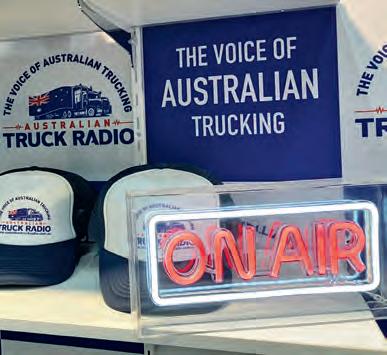
OCTOBER 26
1981: The last of our birthdays is Guy Sebastian. The Australian singer and record producer won the first season of Australian Idol in 2003 and has since released 11 top 10 albums, including three number ones.
OCTOBER 27
2003: On this day, Barry Sullivan, known as ‘Big Goose’, passed away. He was highly sought after for his talents and was best known as the bassist for Renee Geyer.
OCTOBER 30
2006: Ian Rilen of Rose Tattoo fame passed on this day. He was the bass guitarist and a songwriter for both Rose Tattoo and punk rock group X.
KEY ALBUM RELEASES AND REISSUES
• The Living End’s self-titled album was released on October 12, 1998. It went on to top the ARIA Albums Chart and stayed in the Top 50 for 63 weeks.
• TISM’s Death to Art, their first fulllength album in 20 years, came out on October 4 last year. It peaked at number 15 in the ARIA charts.
• The Hoodoo Gurus re-released album Stoneage Romeos on both October 1, 2002 and on October 24, 2005 with bonus tracks added after the original was put out in March 1984.
FESTIVALS & TOURS THIS OCTOBER
• Harvest Rock Festival will be held in Adelaide from October 25-26. The major return for the rock-focused event includes The Strokes, who will play their first Adelaide set in roughly 20 years, Wolfmother, Vance Joy and others.
• Critically acclaimed supergroup Bleak Squad will support its debut album with performances in Sydney, Melbourne and Tasmania during October.


Despite consistent dips in major markets, the overall truck sales for August in Australia maintained the ongoing pace set in recent months
The latest Truck Industry Council (TIC) T-Mark truck sales data has landed for August, with the second half of the year maintaining consistent levels. A total of 3,637 sales were made across all sectors in August, finishing seven units ahead of July’s 3,630 sales.
However, it is markedly down from this time last year, where there were 4,114 sales recorded in August 2024.
Total trucks
A total of 3,637 trucks were sold across all four major market segments in August, with the leader once again surpassing four figures. Isuzu broke the 1,000 barrier once again, finishing with 1,015 sales for the month. The next best was Hino who rose strongly with 406 monthly sales, with Fuso taking third ahead of Kenworth with the 335 sales compared to Kenworth’s 267. In fifth was Volvo with 165 units sold, while Scania (101) just surpassed the century and kept ahead of Mercedes-Benz (93). IVECO was the best of the rest with 79 deliveries while Fiat (63) and Mack (61) fought a tight tussle.
Heavy duty
While the overall sales number was slightly better in August, heavy duty sales dipped in August as only 1,081 units were sold compared to 1,118 in July. Kenworth remained the leader with 267 sales, finishing more than 100 ahead of the second placed Volvo (162) and Isuzu (154). Scania finished with 101 sales, while Fuso (73) kept ahead of the tied Mercedes-Benz and Mack with 61 units apiece. DAF maintained a narrow lead over Hino, 44 to 40, while IVECO (33) was narrowly ahead of UD Trucks (32).
Above: Hino continued its
The medium duty market remained relatively steady compared to July’s lower month as the dip was maintained via 539 August sales. Isuzu was a clear leader in the segment with 250 sales, beating Hino’s

strong month of 164 sales. Fuso was a clear third with 92 units, with Hyundai (12) a distant fourth. The remaining five brands who sold medium-duty trucks in August all were in the single digits in a lopsided sector.
The light duty market continued to drop, down from 1,332 in June and 1,218 in July as it finished with 1,190 sales in August. Despite this descent, Isuzu maintained its healthy lead with 611 sales for the month, tripling the second placed Hino with 202 sales. Fuso was a comfortable third with 170 units, while Fiat (63) and IVECO (43) stayed clearly ahead of a tight pack that includes Renault (27), Mercedes-Benz (27) and Volkswagen (26).
“A total of 3,637 sales were made across all sectors in August, finishing seven units ahead of July’s 3,630 sales.”
The vans sector made a small recovery from July’s dip as it registered 827 sales in August. Mercedes-Benz Vans was again the leader with 276 sales, with Ford (153) and LDV (138) fighting a tight tussle for second. Renault also surpassed the century mark with 113 sales while Volkswagen (71) finished ahead of Fiat (52) and IVECO (24).





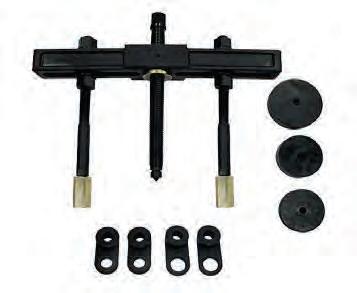

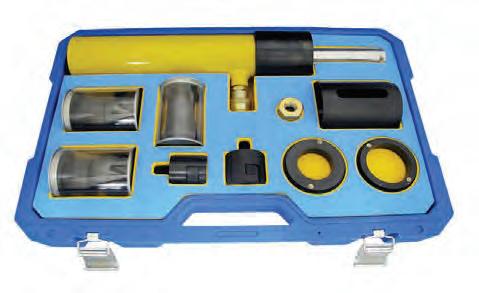
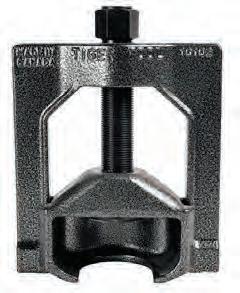
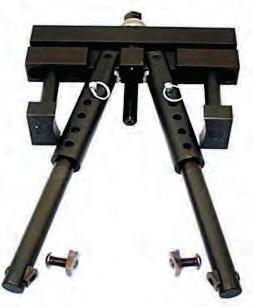


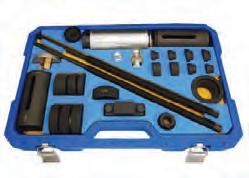
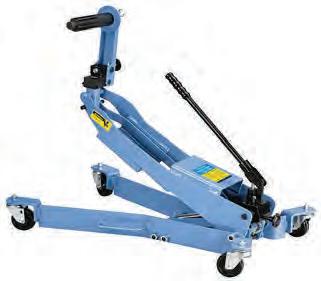






It’s time to continue focusing on truck-themed media, following our recent successful run of deep dives into trucking books, movies and songs. While some of these may already be common knowledge and a routine watch, enjoy some of the leading trucking based TV shows that are gracing the airwaves. Ice Road Truckers
For 11 seasons now, Ice Road Truckers has been a staple for heavy vehicle enthusiasts. After first airing in 2007, the reality TV series aired for 10 years on the History Channel on Foxtel. It features the daily activities of numerous truckers operating on ice roads, crossing frozen lakes and rivers in remote regions of Canada and Alaska. Nowadays, Foxtel GO is the streaming service to go to in order


the ongoing joys of
TO WATCH: FOXTEL GO (REQUIRES A SUBSCRIPTION)
Outback Truckers
We’re getting much closer to home for our next one and looking back to Australia, where this factual TV series provides an up-close look at the local road transport sector that we kow and love. A variety of drivers and personalities go about their daily routes, with some seasons, such as three to five, heading to New Zealand, while season four takes us to Weno, Micronesia. After originally screening on Channel Seven in 2012, it’s also now aired around the world in Europe.
WHERE TO WATCH: 7MATE
World’s Toughest Trucker
While there was only one season made
of this show, it’s worth watching. When World’s Toughest Trucker came out on Channel 5 in the UK and on the US’ Discovery Channel in 2012, it followed the trials and tribulations of eight drivers as they faced off in a series of challenges. Ultimately, the winning truckie received US$150,000 and the title of ‘world’s toughest trucker’ – enough to get excited about.
WHERE TO WATCH: YOUTUBE TV
Another one-season wonder, this 2019 show saw five truckers embark on a journey across the US to Michigan and beyond. Travelling amid exhaust, roaring engines and burning tyres, the idea of the show was to crown the fastest big truck racer, with style also coming into it. If you want a quick and easy watch that gets the adrenaline pumping and
creates plenty of noise, don’t miss this one.
WHERE TO WATCH: AMAZON PRIME VIDEO
Diesel Brothers
For eight seasons, Diesel Brothers delivered high octane fun as a group of friends in Utah repair, customise and enjoy the thrills of fitting out pick-up trucks. It first aired on the Discovery Channel in 2016 and ran until 2022, while a three-hour TV special premiered in 2020 to get truckies through the COVID lockdowns.
WHERE TO WATCH: FOXTEL GO (SUBSCRIPTION)
American Trucker
This one shouldn’t come as a surprise. While it only ran for two seasons, Robb Mariani’s deep dive into his life behind the wheel became iconic. Starting with a popular Kenworth restoration and continuing with his facts about massive truck stops, this 28 episode show has plenty to enjoy. The 2011 show is still worth a go if you need some truckie content.
WHERE TO WATCH: PLEX
Are we missing any great trucking shows? Feel free to reach out to the OwnerDriver editor at sean.mortell@ primecreative.com.au with your favourite trucking TV shows from yester-year.













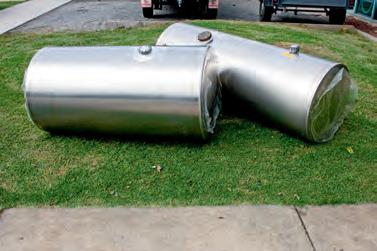
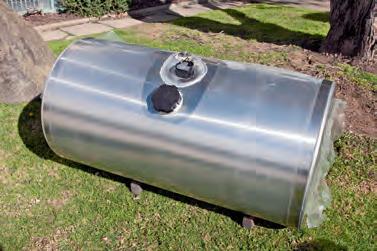
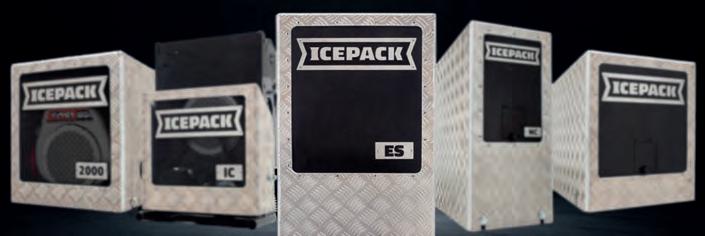






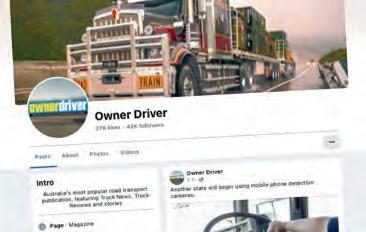









Afew editions ago, we touched on a troubling trend sweeping across the country – one that’s becoming harder to ignore. The road is growing lonelier for single truck operators, and not just in the literal sense. Across Australia, the number of us owner-drivers exiting the transport industry is steadily rising, and the implications are more serious than many realise. Long-time operators are being squeezed out by clients cutting corners, while new entrants are increasingly hesitant to step into a profession that no longer feels viable. What we’re witnessing is the slow erosion of the backbone of our freight system.
Owner-drivers have always brought something irreplaceable to the table. They offer flexibility, direct negotiation and a level of personal commitment that’s hard to replicate. We are individuals who don’t just drive – we invest in our own vehicles, manage our own operations and take pride in every delivery. When we leave, the industry loses more than just a truck. It loses passion, reliability and a vital layer of diversity in service options.
Despite our importance, single-truck operators remain at the bottom of the supply chain hierarchy. Big fleets, multinational logistics firms and even small fleet operators consistently receive
priority. When clients feel financial pressure, it’s not just the big players who get cut, it’s the solo operators as well. The supply chain squeeze hits all of us hard and there’s little recourse.
Then, when the industry hits a downturn, the media spotlight rarely shines on us. You’ll hear about major operators laying off staff or restructuring, but the quiet disappearance of owner-drivers goes largely unnoticed. There’s no headline when a veteran driver parks his rig for the last time, unable to make ends meet. No press release when a family-run operation quietly folds. These stories vanish into the profit margins of those at the top, even though they represent the slow unravelling of a vital part of our transport ecosystem.
Thankfully, there’s been a flicker of hope in recent years. The trucking fraternity has come together and united to advocate for owner-drivers and push for legislative reform, so that we have some protections in place. On the back of this, earlier this year, the federal government passed the Closing the Loopholes legislation, which included new protections for owner-drivers under the Road Transport Industry Termination Code.
Since February 26, regulated road transport contractors have gained new rights against unfair contract

terminations. If you’ve been providing services under a contract for at least six months, transport businesses can no longer terminate your contract without due process. They must issue a written warning, explain the reason for termination and offer you the opportunity to respond. You can request a meeting to discuss the decision, and if you’re a Transport Workers’ Union member, you’re entitled to bring a representative. The business must then consider your response, your investment in equipment and your work history before finalising the termination.
These changes are a step in the right direction. They offer captured ownerdrivers a degree of protection that’s long overdue. No longer can companies dismiss an operator on a whim, ignoring the time, money and effort we’ve poured into our small businesses. It’s a recognition that we’re not just service providers – we’re stakeholders.
However, the real problem lies in the economics of the supply chain. Clients still need to ensure that enough money flows down to the drivers doing the work. Right now, the industry is in a slack period. Work in several sectors has slowed, and pressure from the top is mounting. Companies want smaller consignments and singletrailer loads, but they don’t want to pay proportionately higher rates for those jobs. That’s not just unrealistic – it’s damaging.
As we’ve discussed many times, owner-drivers must hold the line on rates. Some companies are reducing rates when they should be increasing them. It’s tempting to accept lower prices just to stay afloat, especially when work is thin. But undercutting ourselves only accelerates the race to the bottom. Fair pay for fair work isn’t a luxury – it’s a necessity. If clients continue to squeeze margins, we’ll keep losing good operators-people who might’ve stuck around if the profession felt viable.
We shouldn’t have to rely solely on legislative changes to protect us from clients who put profits before everything else – including safety. The industry needs to recognise that cutting costs at the expense of ownerdrivers is short-sighted. It undermines sustainability, discourages new entrants and erodes the quality of service. If we want a strong, resilient and safe transport sector, then they must support the people who make it run.
Hopefully, with these new laws in place, the tide will begin to turn. Awareness will spread. And maybe, just maybe, the next generation of owner-drivers will see a future worth investing in. Because without us, the industry doesn’t just lose trucks – it loses heart.
“When clients feel financial pressure, it’s not just the big players who get cut, it’s the solo operators as well.”




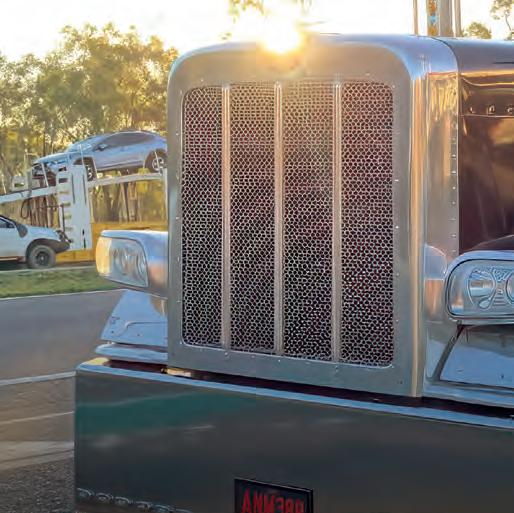





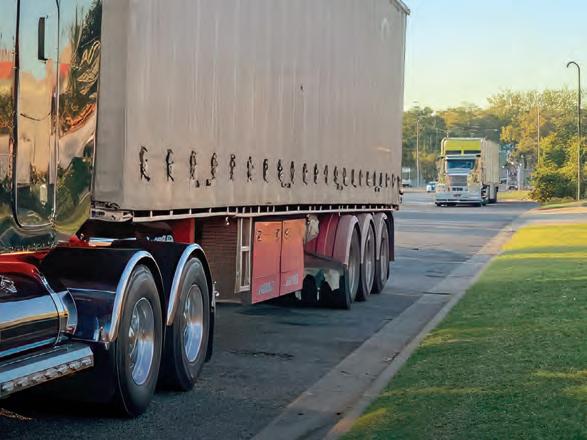

“Australian Truck Radio is my ‘go to’ when I’m on the road. The music is on point, and I never get bored!”



























